Advisory boards aren’t only for executives. Join the LogRocket Content Advisory Board today →

- Product Management
- Solve User-Reported Issues
- Find Issues Faster
- Optimize Conversion and Adoption

Mastering the omnichannel journey: Definition and strategies

Our lives are growing ever more intertwined with an increasing number of devices, such as smartphones, computers, smartwatches, smart home devices, etc. This constant interaction and ever-expanding abundance of content has shaped our purchasing behavior irreversibly.
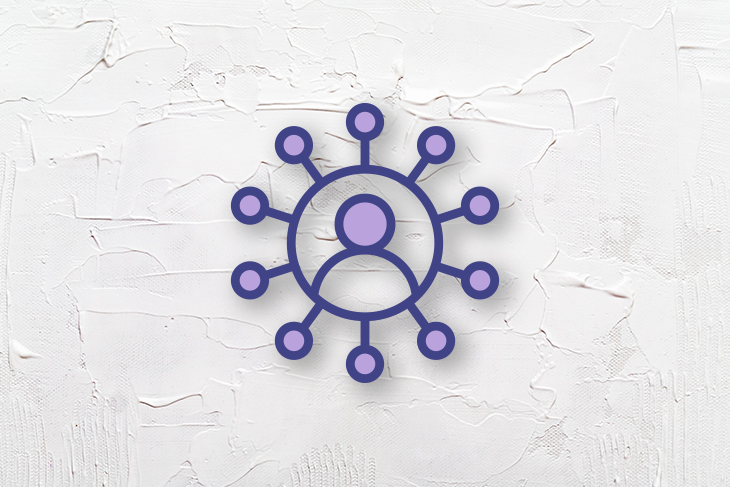
Consumers have grown adept at making informed decisions by seeking out and evaluating trustworthy content from multiple sources. Additionally, external stimuli constantly prompt us to make buying choices.
In many cases, even substantial purchasing decisions are made through a handful of emails or phone conversations, bypassing the need for physical meetings. In the post-pandemic era, video calls serve as effective substitutes for face-to-face meetings.
This environment of vast possibilities has allowed businesses to flourish. However, it has also complicated the customer journey, resulting in the emergence of omnichannel journeys.
Omnichannel definition
An omnichannel journey represents a customer’s interactions with a product across multiple touchpoints during the buying process, the sales process, and post-sales customer support, extending throughout the customer’s lifecycle.
Omnichannel journeys allows customers to interact with a company in the way that is most convenient for them, creating a more personalized and engaging experience.
Omnichannel vs. multichannel
Understanding the difference between omnichannel and multichannel strategies is crucial in today’s dynamic business environment. The choice between omnichannel vs. multichannel is more than a debate about buzzwords; it reflects fundamental differences in how businesses engage with their customers.
What is multichannel?
What is omnichannel, key differences between omnichannel and multichannel.
Multichannel refers to the approach of interacting with customers through various channels, both direct and indirect. These channels may include a company’s website, retail stores, mail order catalogs, email marketing, and social media.
The goal of a multichannel strategy is to enable customers to interact with a brand in the channel of their choice.
The omnichannel approach, while involving multiple channels like the multichannel approach, focuses on delivering a consistent, unified, and seamless customer experience across all channels.

Over 200k developers and product managers use LogRocket to create better digital experiences
An omnichannel strategy recognizes that customers engage with brands on various platforms and touchpoints and endeavors to provide an integrated customer experience that’s both consistent and complementary across these touchpoints.
The key difference between omnichannel and multichannel lies in the customer experience.
Multichannel strategies can result in disjointed and potentially inconsistent customer experiences, as each channel may function in a silo. In contrast, an omnichannel strategy ensures that customers have a unified and consistent experience across all channels, enhancing customer loyalty and satisfaction.
Additionally, an omnichannel approach leverages data from various touchpoints to provide a more personalized and responsive customer experience.
The table below summarizes the advantages of adopting an omnichannel approach over a multichannel approach:
In summary, while multichannel strategies offer multiple avenues for customer interaction, they can result in disjointed customer experiences due to the potential lack of integration among channels. In contrast, an omnichannel strategy ensures that customers have a unified and consistent experience across all channels, enhancing customer loyalty and satisfaction.
Types of omnichannel journey
Depending on the product or services, customer interactions can vary based on the user’s needs and preferences. For instance, some customers may favor a completely digital experience when shopping for clothes, while others prefer shopping in a physical store.
Regardless of their preference, customers will still interact with the brand through multiple touchpoints, creating various omnichannel journeys. Therefore, even if your business involves selling clothes, it’s important to understand your positioning, customer preference, and presence to craft a positive customer experience and retain customers over time .
Fully digital (multiple digital touchpoints; no human interaction)
This type of journey occurs when a potential customer becomes aware of a brand’s offerings via a target medium, navigates to the website, and completes a sale without personal interaction. The customer relationship continues post-sale, maintained through interactions on the app or website.
An example includes buying clothes online, managing returns or complaints digitally, and leveraging loyalty points for future purchases to sustain a relationship with the brand.
Combination of digital and physical
This journey involves multiple interactions with the brand, both digitally and in person, creating a composite omnichannel experience.
Buying a car is a typical example of this type of journey. The customer researches the vehicle online, proceeds with the purchase via a physical or digital medium, and requires a blend of after-sales services.
Combination of digital and virtual assistant
This type of omnichannel journey proliferated in the post-pandemic era when customers began seeking assistance via a helpline, video call, or phone call to make purchasing decisions.
For example, when applying for a loan from a bank, a customer might call to negotiate terms, sign paperwork digitally, provide all necessary information online, and finalize the loan via a virtual call. In this journey, the customer interacts with the company virtually and completes tasks online rather than in person.
Omnichannel journey example
Let’s illustrate the concept of the omnichannel journey with an example that we will expand upon throughout the article to provide context. We’ll create a persona and a scenario, and follow that persona through their omnichannel journey.
Ana, a 34-year-old working mother living in a major city with her husband and daughter, decides to buy a car to streamline her commute to her daughter’s school and her own workplace. She represents a growing segment of consumers who are comfortable with online research and shopping, yet still appreciate human interaction and physical touchpoints in the buying process.
Let’s follow her journey:
Research phase
Ana begins her journey by conducting online research about the best family cars within her budget. She visits various car manufacturer websites, reads blogs and reviews, and checks out user ratings on independent websites. She also watches video reviews on YouTube and participates in online forums for additional insights.
Each of these digital touchpoints plays a significant role in Ana’s decision-making process.
Selection phase
After her extensive research, Ana shortlists a few car models that fit her requirements. She signs up for newsletters from the manufacturers of these cars to get updates on discounts or promotional offers. She also engages with the brands on social media to get a sense of their community and customer service responsiveness.
Furthermore, Ana uses an augmented reality app provided by one of the car companies to see how the car would look in her garage. These digital touchpoints contribute to her final decision.
Purchase phase
Ana decides to visit a dealership to test-drive the car model she has chosen. She appreciates the tangible experience of touching and driving the car before making a purchase.
The sales representative at the dealership provides her with additional information about financing options, warranty, and after-sales service. This physical touchpoint solidifies her decision to purchase the car.
Post-purchase phase
After purchasing the car, Ana receives follow-up emails from the dealership thanking her for the purchase and providing her with useful information about car maintenance. She also receives a survey asking about her buying experience. A few weeks later, she gets a phone call from the dealership asking about her satisfaction with the car and offering assistance if needed.
The importance of multiple touchpoints
Having multiple and varied digital and human touchpoints helps ensure a good customer relationship post-purchase.
In the previous example, Ana had several touchpoints with the bank before deciding to make a purchase. These touchpoints included:
- Ads on third-party websites
- Google searches for reviews
- The bank’s website for additional information
- Virtual interactions with bank employees for clarification
- Using the bank’s app for after-sales services and for virtual exchanges when preferred
For Ana, these touchpoints were part of a seamless customer journey because she interacted with the bank through multiple channels. However, for the bank, creating such an omnichannel experience required a consistent presence across all channels, real-time updates across all platforms, maintaining the same brand tone in all messaging, and ensuring knowledge is shared across the organization.
According to Forbes, customers typically interact with an average of six touchpoints at the start of their journey with a brand, and continue to engage with about four throughout their lifecycle. As a result, brands are expected to provide a seamless experience across all channels. With 98 percent of users switching between devices during these interactions, a brand’s failure to offer a seamless experience can drive customers to the competition.
While establishing an omnichannel presence can be challenging, it has proven more effective in achieving higher conversion rates and customer lifetime value . Customers who encounter a brand’s presence on multiple channels are 50 percent more likely to convert than if they only saw the brand on one channel.
How to create a seamless omnichannel journey
The first step in creating a seamless omnichannel journey is to identify where customers interact with your brand. This involves pinpointing the points of convenience, sale, and post-sale interactions for the customer.
In a market with varying customer preferences — some favor the convenience and speed of the internet, while others prefer physical interactions — ensuring a seamless customer experience requires brands to maintain a presence across all relevant channels. It is crucial to provide a consistent experience across these channels and empower customers to choose their preferred touchpoints.
If you choose to exclude certain touchpoints, you should guide customers through this process to prevent any confusion or disappointment that may arise from a lack of presence on specific channels.
Let’s dive deeper into some of the most important factors that contribute to a seamless omnichannel journey:
Presence across all channels
Synergy across all channels, real-time updates, data and analytics, knowledge spread across the organization.
New platforms are constantly emerging. Recognizing these new channels and establishing your brand’s presence across all relevant platforms where your customers are found is the first step in creating an omnichannel journey.
In our previous example, the bank maintains a digital presence with a comprehensive website and a useful app, and also offers virtual and physical touchpoints.
By identifying your customer’s preferences and establishing a presence across all pertinent channels, you can build trust and loyalty with your customers.
When you consistently present your company’s messaging, look, and feel across all platforms, it is easier for customers to recognize and connect with the brand.
For instance, if a customer sees an ad on social media and clicks on it but struggles to find the same campaign on the company’s website, their trust in the brand may diminish. While the customer may initially have the intent to purchase the company’s service, a lack of synergy across channels could push them toward the competition.
It’s crucial to maintain consistency across all touchpoints before launching any marketing campaign.
Customers often switch between devices and platforms when interacting with a product. If they encounter inconsistencies or outdated information across various channels, this can quickly breed mistrust in the brand, potentially pushing customers towards competitors. Thus, having an infrastructure that supports real-time updates is crucial for a successful omnichannel journey.
Analyzing customer behavior and preferences across multiple channels allows you to gain valuable insights into the customer journey that you can use to tailor your approach, thereby improving the overall customer experience and boosting satisfaction. Data and analytics can also help you identify gaps in your omnichannel strategy and make any necessary adjustments.
By leveraging these insights, businesses can make informed decisions and enhance their omnichannel journey to better meet their customers’ needs.
In large organizations, there can be gaps in information dissemination. For instance, when a marketing team initiates a campaign, front office staff should be informed. If a post-sales representative needs data or information about a service agreement made by a pre-sales executive, it should be readily available.
To achieve a seamless omnichannel experience, strategies and systems must be in place to facilitate the flow of information, minimizing the risk of gaps due to human error.
In today’s world, where consumers interact with brands through a multitude of channels, creating a seamless omnichannel journey has become vital for businesses. It involves not only maintaining a presence across all channels but also ensuring synergy, providing real-time updates, leveraging data for insights, and spreading knowledge about the customer journey across the organization. By doing so, brands can provide an integrated and cohesive customer experience, leading to higher customer satisfaction and retention.
Featured image source: IconScout
LogRocket generates product insights that lead to meaningful action
Get your teams on the same page — try LogRocket today.
Share this:
- Click to share on Twitter (Opens in new window)
- Click to share on Reddit (Opens in new window)
- Click to share on LinkedIn (Opens in new window)
- Click to share on Facebook (Opens in new window)
- #customer experience
- #product strategy

Stop guessing about your digital experience with LogRocket
Recent posts:.

Understanding the problem space and its role in development
Failing to identify or understand a problem is, when it boils down to it, the main reason why most businesses fail.
Leader Spotlight: Setting processes to achieve organizational alignment, with Juan Gabarro
Juan Gabbaro discusses how product leadership should drive vertical alignment, but the product team should drive cross-functional alignment.

Practical ways to improve your customer experience
Improving your customer experience enhances customer satisfaction and boosts business growth and customer retention.

Leader Spotlight: Viewing loyalty as a commitment to the customer, with Josh Engleka
Josh Engleka talks about how his team at Lowe’s takes a unique perspective because they are all customers, as well as employees.
Leave a Reply Cancel reply
Create, publish and optimize pages with a drag&drop, pixel perfect and mobile-friendly builder
Speed up the creation process with 400+ customizable templates for landing pages, pop-ups and sections
Refine your messaging with AI-generated text, SEO and image edition. All in one app
Test and compare page variants for data-driven decisions and valuable insights on users interactions
Track microconversions in your Dashboard and analyze events and clicks with visual map
Integrate your pages with your favorite mar-tech apps and solutions to get the flow of your campaign going
Drive sales and conversions with irresistible product displays and seamless shopping experiences
Use a reliable and secure platform that smoothly handles millions of visits
Master digital marketing with the help from savvy professionals and increase your website’s conversions
Guides for beginners, set-up instructions and creation tips to get started and optimize your pages
A free online course for landing page creators! Learn the secrets of high-converting pages and become an expert
Get the answers you’re looking for – contact us
Schedule a one-on-one meeting with us and learn more about the benefits of our platform
- Portuguese (Brazil)
Omnichannel Customer Journey Mapping: The Ultimate Guide
Kate Parish
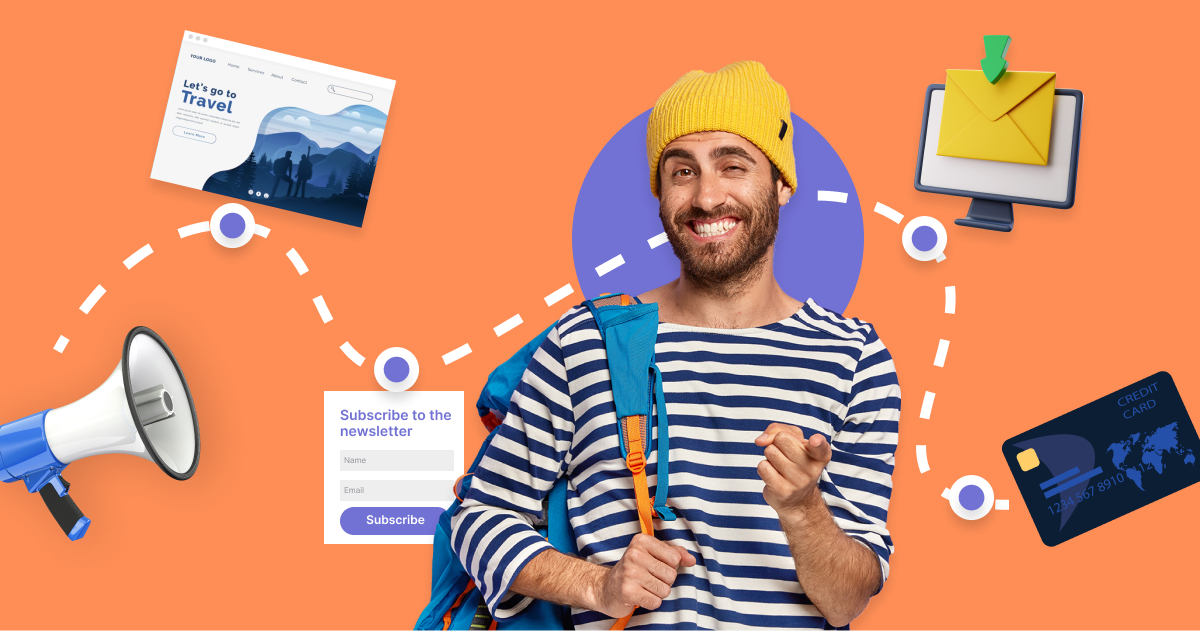
In today’s digital era, businesses need to ensure seamless customer experiences across all channels. Omnichannel customer journey mapping is a crucial tool for reaching this objective. Businesses may uncover pain areas, ensure better interactions, produce a consistent customer experience, decrease the abandoned shopping carts rate, and improve other KPIs by recognizing every touchpoint in the customer journey.
In this comprehensive guide, we’ll discuss the significance of omnichannel customer journey mapping and offer a step-by-step process for making one. We’ll provide you with the knowledge and skills business owners and marketing specialists require to improve the customer experience and raise satisfaction.
Make your sections smartable and let go of mundane manual tasks with Smart Sections! An easy way to manage bulk changes.
Omnichannel customer journey maps explained.
An omnichannel customer journey map visually depicts a customer’s interactions with a brand across all touchpoints, channels, and devices. It presents a comprehensive picture of the customer journey, taking into account both online and offline encounters and emphasizing the possibilities, challenges, and crucial moments that might have an influence on customer satisfaction .
Understanding your potential lead or customer will help you drop the rate of abandoned shopping carts and increase the number of valuable leads.
To create an efficient omnichannel customer journey map, businesses need to collect information on consumer interactions across all channels, including social media, websites, mobile applications, email, and in-store encounters. This data has to be thoroughly examined to identify recurring trends and patterns that can assist in extensive map creation.
The map should be done with the customer’s needs, preferences, and habits in mind. All the stages of the customer journey, from awareness to loyalty, should be considered, and important touchpoints that might affect the customer experience should be identified.
Once the map has been made, it may be utilized to pinpoint problem areas and establish plans for enhancing the client experience. Businesses may use the map, for instance, to identify the precise touchpoints where a client is having trouble making an online purchase and come up with ways to streamline the procedure.
Get 111 Landing Page Examples —The Ultimate Guide for FREE
Why should you adhere to a customer journey omnichannel model.
By offering a smooth and customized consumer experience across all channels, the omnichannel model may help companies stay competitive in today’s digital environment. Here are some further arguments in favor of using the omnichannel strategy.
- Improved customer experience: Businesses may offer a smooth customer experience across all channels, including social media, email, chat, phone, and in-store, by employing an omnichannel approach. This might raise loyalty and boost customer satisfaction.
- Better engagement: an omnichannel strategy allows organizations to interact with consumers at every touchpoint, resulting in increased possibilities for contact and the development of stronger relationships.
- Higher conversion rates: Companies may boost conversion rates and lower customer turnover by giving customers a unified, tailored experience across all channels.
- Better data insights: By using an omnichannel strategy, organizations may gather data from many sources and better understand the behavior, preferences, and pain points of their customers. This can enhance overall business performance and provide information for future marketing tactics.
- Enhanced operational effectiveness: By integrating data, procedures, and technology across all channels, an omnichannel strategy may assist companies in streamlining their operations and lowering costs.
Omnichannel Customer Journey Mapping Step-By-Step
Finding your major target customer categories and channels is generally the first step in the omnichannel customer journey mapping process. Determine the stages of the journey, which may include awareness, deliberation, purchase, post-purchase, and advocacy. Consider the exact areas you want to concentrate on and the precise results you wish to attain. This will keep you on task and help you maintain your attention. Other steps of the omnichannel journey mapping process are the following:
Identifying the Touchpoints and Micro-Conversions
Determine little actions that help website visitors achieve a bigger objective (like making a purchase). Micro-conversions are potent predictors of user engagement, purchase intent, and sales funnel performance, even if they often do not contribute to a website’s total conversion rate.
List all the touchpoints where customers may interact with your brand for each channel. Examples of touchpoints include a website visit, email opening, placing an order, getting a confirmation message, and other actions. Sort each touchpoint according to the phase of the customer journey it takes place in. For instance, a confirmation letter serves as a post-purchase touchpoint, whereas an email newsletter is an awareness touchpoint.
Then evaluate each touchpoint based on how well it satisfies the requirements and expectations of the consumer. Determine the shortcomings of the touchpoints and possibilities to enhance the customer experience.
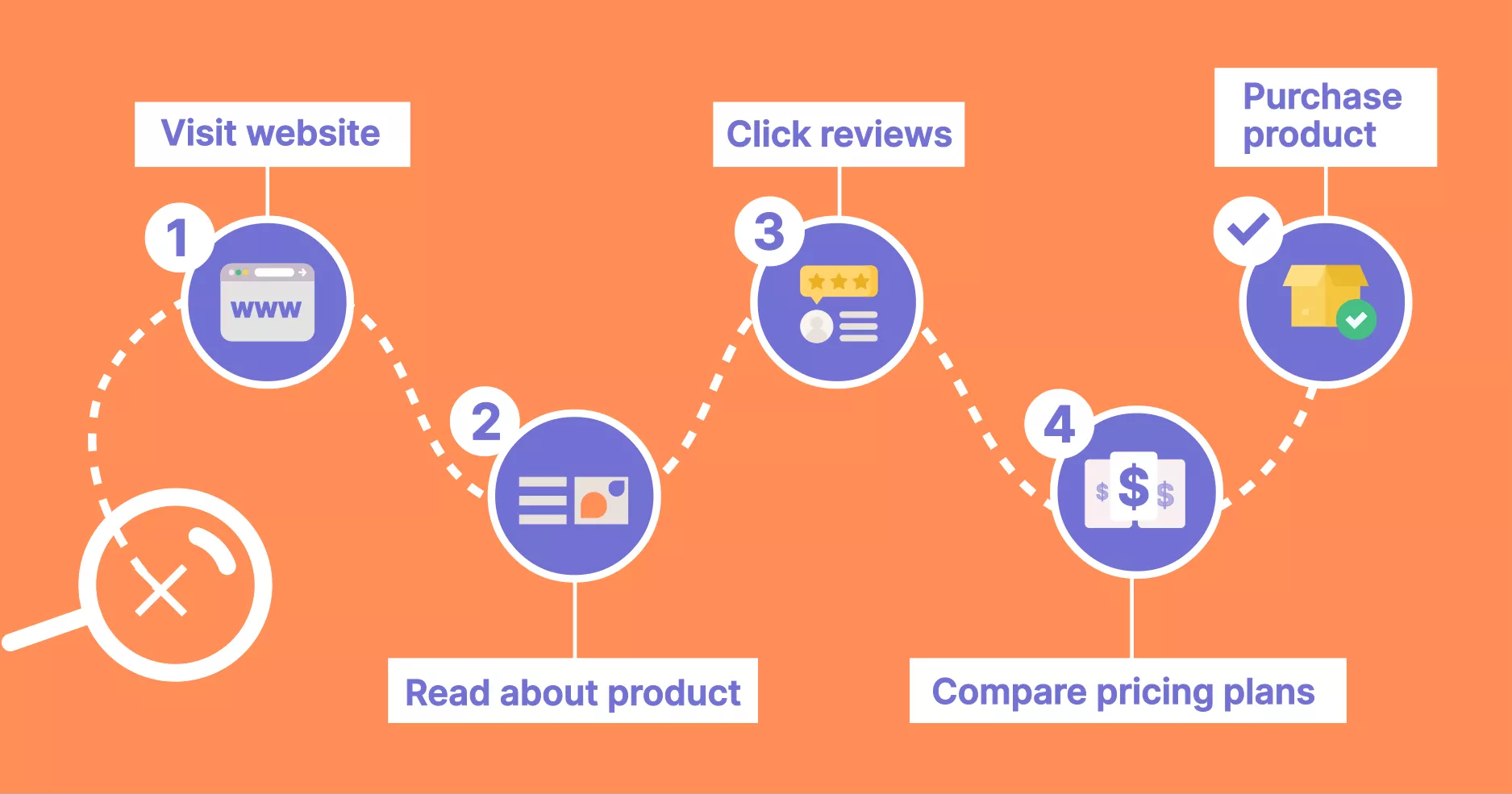
Gathering Customer Data
Gather information on consumer behavior and input from all online and offline touchpoints, including social media, email, phone, in-store, and chatbots. After gathering information from each touchpoint, arrange it in a way it is simple to interpret and visualize. Spreadsheets and customer journey mapping software are tools you may use to do this. Analyze the obtained data to find patterns, gaps, and pain points throughout the customer journey.
Creating Personas
Based on the data analysis, create customer personas that depict the various client base groups. Analyze the patterns in the information you have gathered. Group your consumers according to any shared traits they may have.
Once you have determined the traits that each group shares, make up fake customer profiles to represent each one. Give each persona a name, age, occupation, list of hobbies, and other pertinent details. Make the identities as specific as you can.
Use your established personas to guide your product development and marketing efforts. Ask yourself questions like “How would this persona react to this product?” “What channels would this persona use to find information?” or “What drives this persona to make a purchase?”
Focus on the user – before starting your campaign, ensure that the content reflects your potential clients’ needs.
Identifying Pain Points and Opportunities
Examine the customer journey map to find problems, obstacles, and areas that may be improved. Keep an eye out for points in the customer journey where your consumers are having trouble, running into roadblocks, or getting frustrated. The product characteristics, customer service, or delivery timeframes may be the source of these problems.
Look for opportunities to improve the customer experience. These possibilities can involve delivering tailored advice, enhancing communication, or providing further services.
Prioritize the discovered opportunities and pain points in accordance with how they will affect your company’s objectives and the client experience.
Implementing Changes and Monitoring Progress
You’ll need to create a plan to improve all the weak points, solve the problems customers face, and use all the opportunities. You can use a template action plan to get started if necessary. To ensure that your customer journey mapping and action plan stays applicable and efficient in achieving your company objectives, continually examine and update it.
Customer Journey Mapping Best Practices
Understanding the mapping process is crucial, but looking for additional solutions is still imperative to make the process easier and more efficient. Here are some valuable tips worth paying attention to.
Employ the Relevant Tools
Use digital technologies to streamline the omnichannel customer journey mapping process. Here are a few examples:
- Customer Journey Mapping Software: These products make planning out customer journeys simpler and more logical by offering drag-and-drop interfaces, pre-built templates, and other capabilities. Software for charting the customer journey includes Touchpoint Dashboard, Smaply, and CX Journey.
- Analytics Tools: Data regarding consumer behavior and interactions across many channels may be gathered using analytics tools. When utilized to identify pain points and potential improvement areas, these tools can offer insights into how customers interact with a company at various stages of their journey. Google Analytics, Mixpanel, and Kissmetrics are a few well-known analytics programs.
- CRM Systems: To keep track of client interactions across various channels and touchpoints, customer relationship management (CRM) systems are utilized. Such tools help personalize customer interactions by gathering data on consumer preferences, previous purchases, and other important data points. Among the popular CRM systems are Salesforce, HubSpot, and Zoho.
- Social media listening: Such technologies may be used to track what clients say about a company on social media platforms. Businesses may use this to pinpoint areas where their customer experience could be enhanced and respond instantly to consumer complaints and feedback. Sprout Social, Brandwatch, and Hootsuite are a few known social media listening apps.
- User testing: Utilizing testing technologies, businesses may learn from actual customers about their interactions with their goods and services. Surveys, focus groups, and other kinds of user testing might fall under this category. User testing may offer insightful information on how customers interact with a company through various channels and touchpoints. Optimal Workshop, UserTesting, and UsabilityHub are well-liked user-testing software programs.
Head to the Integration Catalog to browse in-app, compatible, and Zapier integrations with Landingi.
Integration and automation tools will optimize your workflow and make it easier to manage data from various sources in one place.
Always Ask for a Customer Feedback
Your decision-making process should be guided and informed by customer feedback if you want to innovate and make improvements to your product or service. It brings wonderful possibilities that can aid in enhancing the omnichannel consumer experience.
Providing customers with a simple option of leaving feedback is essential for exceptional customer service. Thanks to the omnichannel strategy, brands can interact with customers through any channel and get feedback at each point of contact. There are several ways to get client feedback, including through websites, social media, emails, in-app surveys, and reviews. The information obtained will help you keep your strategy flawless.
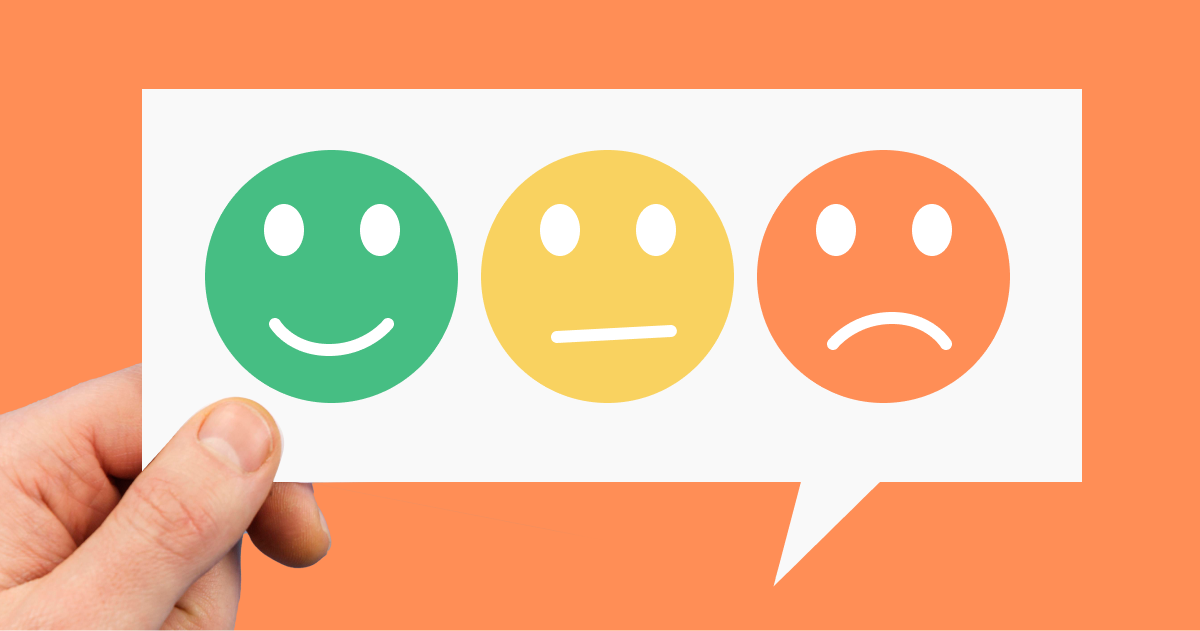
Offer Self Service
Providing customers with self-service choices is another lucrative strategy, capable of enhancing the whole brand experience. One of the most crucial aspects of the customer experience is reaction speed. Customers need prompt responses to their inquiries. Through self-service portals, they may instantly access information, which also helps businesses save time and resources. Businesses can provide how-to videos, manuals, and tutorials to assist consumers in resolving their issues on their own.
Finally, omnichannel customer journey mapping is crucial for companies to comprehend customers’ experiences across all touchpoints and enhance their journey. Businesses may uncover issues and opportunities for optimization and customize their marketing strategies by developing a comprehensive perspective of the customer’s interactions.
In contrast to organizations with weak omnichannel strategies, which only keep 33% of their customers , companies with effective omnichannel customer engagement strategies have an average of 89% client retention. These figures show what a big difference omnichannel customer journey mapping can make to a company’s bottom line.
Businesses may enhance customer experience, better understand consumer wants and preferences, and ultimately increase revenue by utilizing omnichannel customer journey mapping.
Ready to go? Let’s get started!
Join us and create the best-converting landing pages

Content Writer
Related articles

10 Best A/B Testing Tools For Conversion Optimization
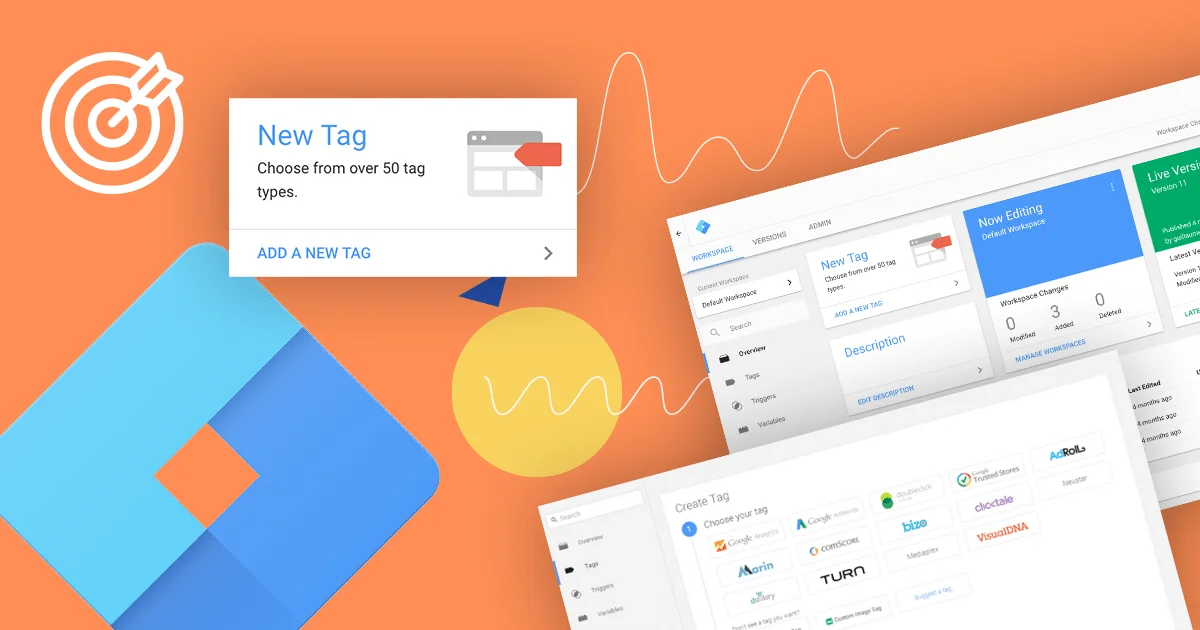
Understanding Google Tag Manager: Pros, Cons, and Practical Examples for Landing Pages
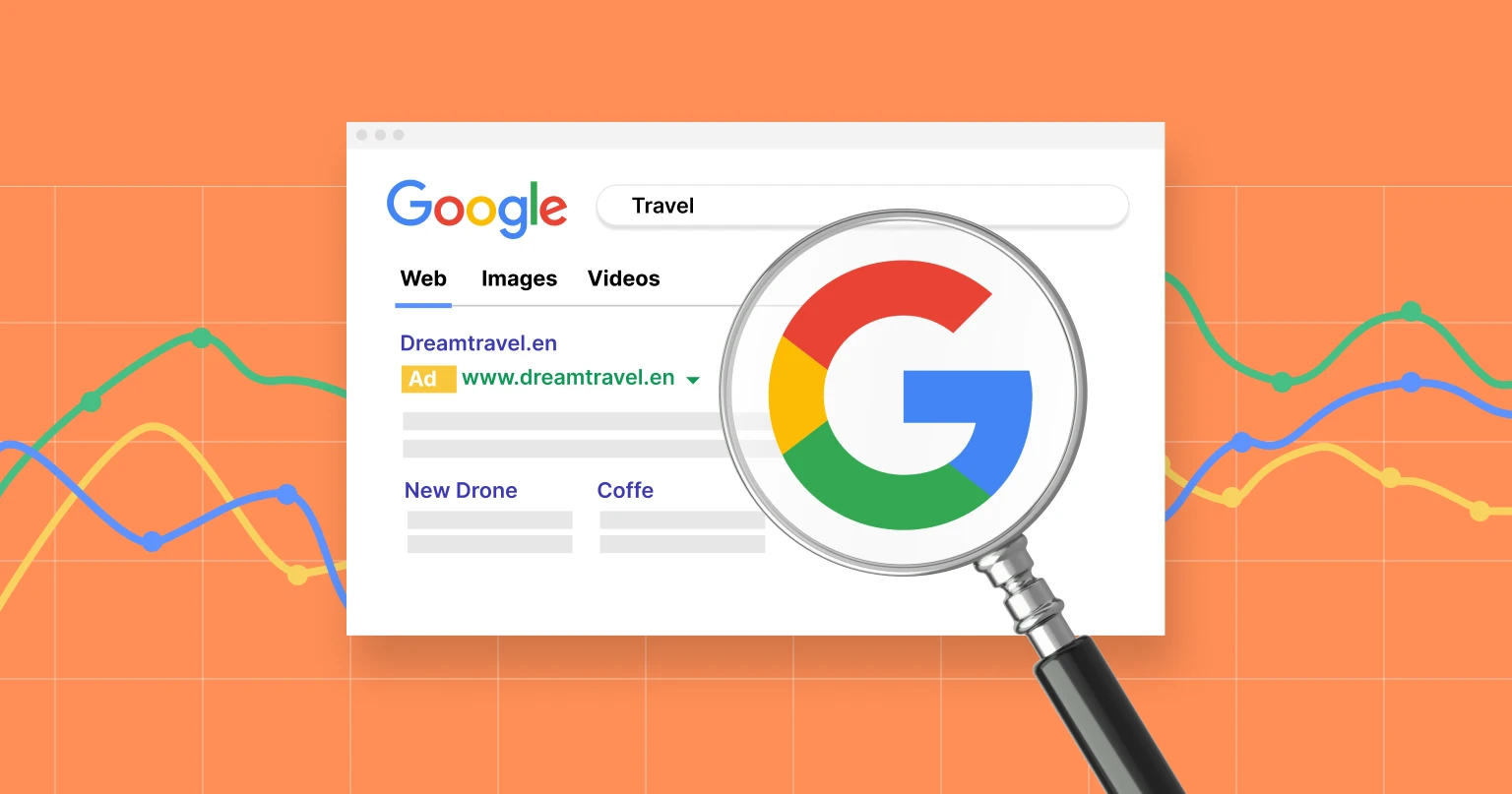
Optimizing User Experience for SEO Success: A Guide to Google Page Experience Algorithm Update
The Unbeatable Duo of Call Tracking and Page Optimization
What an Omnichannel Customer Journey Looks Like
An overview of omnichannel customer journeys and how to implement them.
What is an omnichannel customer journey?
4 stages in a customer journey + relevant channels for each, a true omnichannel journey requires a fully integrated tech stack.
Companies that are customer-centric have been found to be 60% more profitable than those that aren’t. But what do we actually mean when we say “customer-centric”? More often than not, we’re talking about the quality of customer experiences across channels.
Optimizing omnichannel customer journeys is essential for acquiring new customers, strengthening retention rates, and as we mentioned above, becoming more profitable. By understanding how customers move between platforms and channels, businesses gain the upper hand – gaining deeper insight into their behavior.
Omnichannel has come to define customer journeys today: referring to how users switch between multiple channels when interacting with a brand (and expect their experience to be uninterrupted as they do so). Today, 76% of consumers expect consistent interactions across all areas of a business.
A common example of this is with a streaming service. You could start a show on your laptop, and then switch over to your mobile device and pick up at the exact timestamp you left off at. That’s an omnichannel experience.
Or, perhaps you start a live chat with Customer Support, are disconnected, and then decide to call their hotline instead. The Customer Support agent that picks up should be able to see your previous conversation over chat, and begin problem solving from there.
74% of customers use more than one channel to start and complete a purchase. The following sections serve as an example of how an omnichannel customer journey can unfold.
The customer journey begins when someone first discovers a brand, whether it’s through a paid advertisement, a blog article, or a social media post. During this stage, your brand’s primary goal is make people aware of the products or services you offer, and acquire new leads.
This isn’t the time for a hard sell. Instead, focus on how to help your prospective customers by offering valuable information, unique perspectives, and solutions to common challenges.
Content marketing
Content marketing is the creation and distribution of relevant, useful content that doesn’t explicitly promote your brand or sell your products. Examples of content marketing include:
Blog articles
White papers
Downloadable guides
The best content marketing focuses on your customers’ top concerns, pain points, challenges, and questions. By offering educational information to prospective customers, you can position your brand as a trusted authority in your industry and increase online visibility.
Social media marketing
Social media marketing is another powerful tool for the awareness stage: as its able to reach a large audience at no cost (if on organic channels). Today, 55% of consumers discover new brands through social media , such as Facebook, Instagram, YouTube, Pinterest, Twitter, and LinkedIn. Social media marketing includes:
How-to and educational videos
Infographics
Sponsored posts
“Shoppable” content
Active engagement is an inherent part of social media (when done successfully), so this is a great way to build a community of leads who are more likely to become loyal customers.
Influencer marketing
Influencer marketing involves endorsements, product placements, and sponsored content from people who have a high level of social influence or expertise in their field. Influencer marketing includes content such as:
Product unboxing videos
Brand ambassador programs
Live streaming
Influencers have cultivated a loyal audience that trusts them to share useful recommendations – an invaluable asset to your omnichannel marketing strategy.
Consideration
Once your audience has discovered the root cause of their pain points, they move onto considering possible solutions. During this stage, a customer conducts research to determine their options: comparing aspects like pricing, available features, and customer support.
This is when you need to convince prospects to see your brand as the best choice. To do so, you need to create informative, educational content that highlights your company’s competitive differentiators (and showcase real-life success stories from current customers).
Landing pages
Each tactic used in the awareness stage – whether it’s a blog article, a sponsored Instagram post, or an influencer’s unboxing video – should lead your audience to a landing page on your website. This creates the seamless connectivity between different platforms that enables omnichannel customer engagement . Landing page content includes:
Product demos
Gated or downloadable content
Side-by-side comparisons with your competitors
Client testimonials
Industry-specific use cases
Your landing pages should contain all the information a potential customer needs to answer their questions about your brand. Don’t forget to include details like pricing, benefits, integrations, and other features that differentiate you from your competitors.
In-app and on-page marketing
This type of marketing is developed for and displayed to customers while they are actively using your app or website. Examples include:
In-app messages
Splash pages
Modals (full-screen overlays that remain until the user dismisses them)
This is an especially powerful strategy for SaaS companies that offer a free trial of their mobile or web-based apps. When customers try your software before they commit to a purchase, you get the added advantage of marketing directly to them while they test-drive your product. By guiding their experience, you will further unlock the value of your product for the user as they compare their options.
The decision stage is where you ensure you are a customer’s final choice. Although each stage of the customer journey is crucial, this is where the magic happens: a lead completes a purchase and converts into a paying customer.
Now that you’ve guided your customers through the marketing funnel and convinced them to choose your business, you need to demonstrate how your product or service performs as promised.
Live chat marketing
Live chat enables you to engage with prospects while they’re actively browsing your website, and encourage them to take specific actions (like completing a purchase). Examples of live chat marketing include:
Personalized product recommendations
Product walkthroughs
Sales call scheduling
Live chat is your chance to deliver a tailored customer experience. With the additional context of a prospect’s previous interactions – which you gleaned from consolidated customer data – you can get straight to the point and offer solutions that are specific to their pain points.
Email marketing
Email marketing gives you direct access to your customers, and is easily testable (which drives more insights). By segmenting your audience , you can launch highly personalized, targeted, and well-timed emails, which can increase revenue by 18x .
Examples of email marketing include:
Order confirmation emails
Follow-up emails with product recommendations
Abandoned cart emails
Drip campaigns
Support and retention
The chances of selling to an existing customer are as high as 70%. Once a customer has purchased from your brand, you don’t want to let them slip through your fingers.
During this stage, your goal is to increase the chances of a higher customer lifetime value (LTV). After each purchase, continue to engage with customers early and often to nurture loyalty, and unlock long-term revenue growth.
In-app and on-page support messaging
Similar to the in-app and on-page marketing methods we discussed earlier, this channel targets your customers while they’re interacting with your brand’s website or mobile app. However, this content is designed specifically to help paying customers get the most out of their purchases. Examples include:
Personalized promotions
Tooltips (overlays that show users how to use and navigate an app)
Cross-selling
To remain competitive, use the information gathered throughout the omnichannel customer journey to proactively reach out with personalized support messaging.
Knowledge base
A knowledge base is like a self-service customer support library. This enables customers to learn about different features and offers how-to guides to help maximize the value of their purchase. A knowledge base might include:
Case studies
Technical product documentation
Suggestions for high-impact activity
By following the routes that lead customers to your knowledge base, you can identify touchpoints in the omnichannel customer journey that need further clarification. For instance, if many users look for information about a specific feature after the onboarding process, you can add a tutorial or interactive demo to better explain that feature.
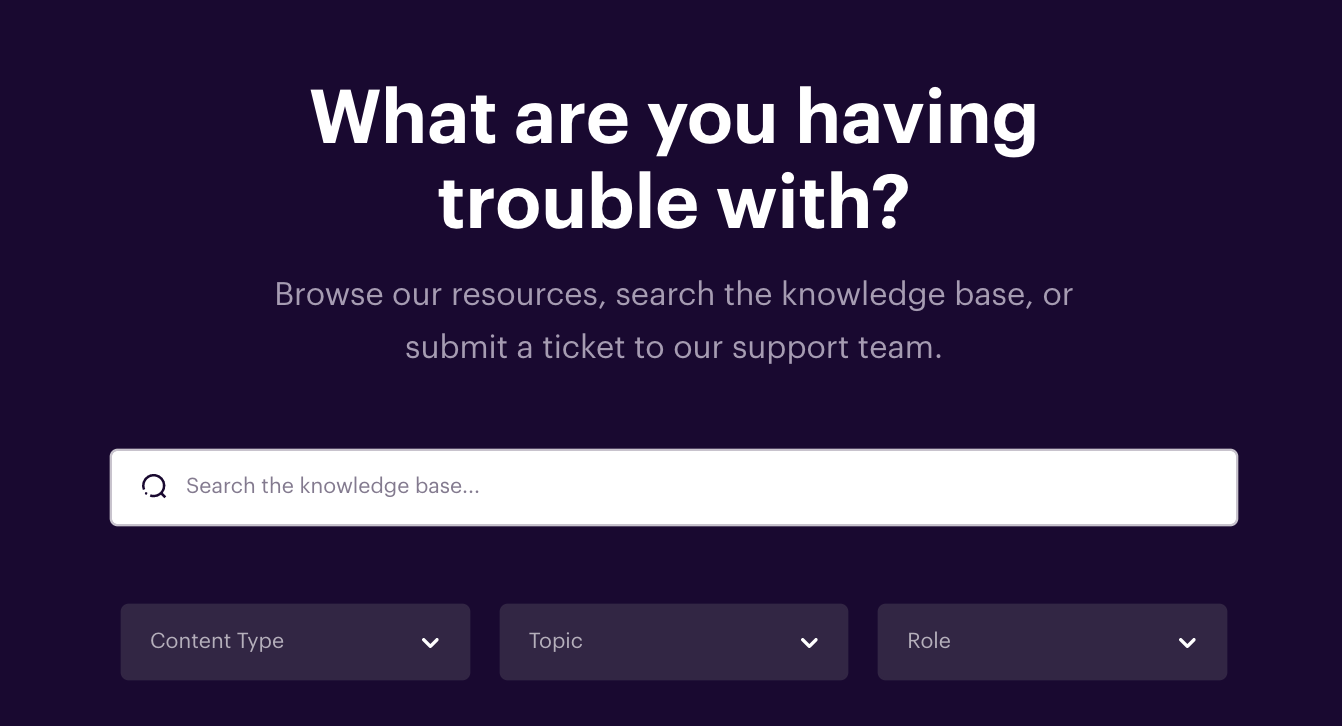
To provide an omnichannel customer experience , you need to connect all of your data and attribute it to individual customer profiles. Look for features like:
Customer segmentation
Automated personalization
The ability to trigger interactions based on real-time data
Segment unifies touchpoints across all platforms so you can fully understand the omnichannel customer journey. Our customer data platform uses robust customer analytics to provide you with deeper insight into customer behavior. Plus, multi-touch attribution identifies all of the touchpoints that lead to a conversion, not just the last one.
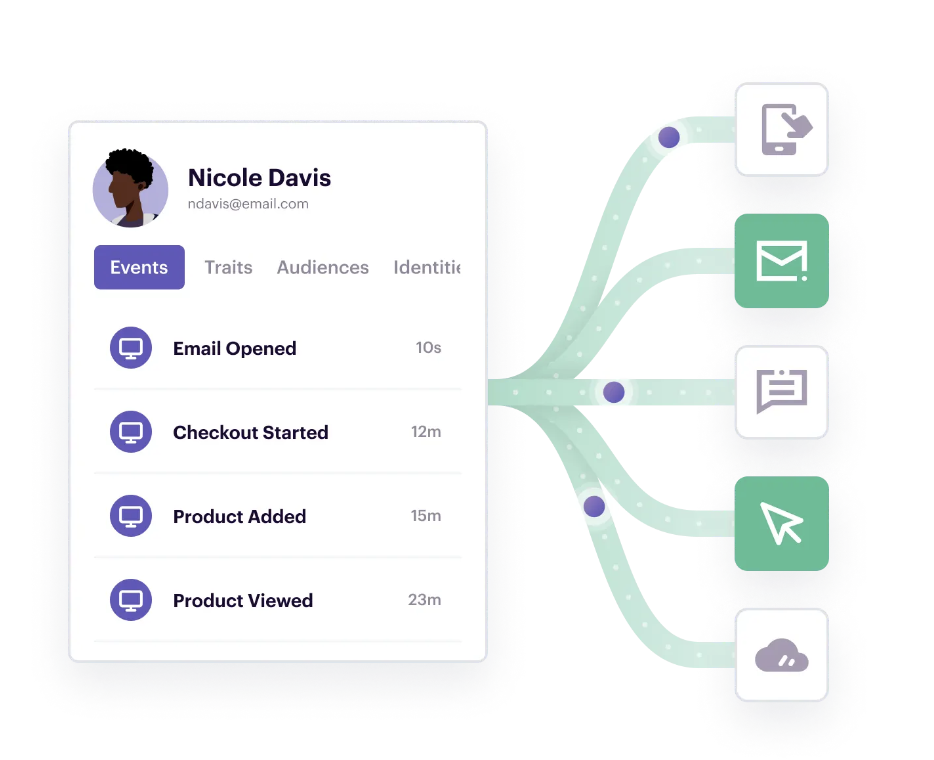
Interested in hearing more about how Segment can help you?
Connect with a Segment expert who can share more about what Segment can do for you.
Frequently asked questions
What are some common channels in an omnichannel customer journey, what is an example of an omnichannel customer journey, how can twilio segment help companies implement an omnichannel customer journey.
What is Omni-Channel? 20 Top Omni-Channel Experience Examples
Updated: February 07, 2024
Published: June 09, 2023
The more technology advances, the more it's integrated into our daily lives and the lines between what we do online and in real life have begun to blur. As people change their behaviors, marketers, salespeople, and customer support reps will need to react.

Instead of thinking of a separate desktop, mobile, tablet, and even an Apple Watch experience, we'll need to pursue one, holistic approach — an omni-channel experience that customers can use whenever they want.
In this post, we’ll go over what omni-channel means and how you can use omni-channel experiences to create profitable marketing, sales, and service strategies.
- Omni-Channel Definition
- Omni-Channel Experience Definition
- Omni-Channel vs. Multi-Channel Experience
Omni-Channel Marketing
How to build an omni-channel marketing campaign, omni-channel marketing examples, omni-channel marketing platforms, omni-channel retail, omni-channel.
Omni-channel, also spelled omnichannel, is a lead nurturing and user engagement approach in which a company gives access to their products, offers, and support services to customers or prospects on all channels, platforms, and devices.
Instead of only offering support on my desktop website, for example, I'd also offer support through Facebook Messenger, live chat, email, and phone.
Adopting an omni-channel approach in your marketing, sales, and service strategies has plenty of benefits. The advantages include:
.webp)
Free Customer Journey Template
Outline your company's customer journey and experience with these 7 free templates.
- Buyer's Journey Template
- Future State Template
- Day-in-the-Life Template
You're all set!
Click this link to access this resource at any time.
Greater reach.
With an omni-channel retail, marketing, or service strategy in place, you’ll be reaching your customers where they are and in more places.
They no longer have to search and search to find you because, regardless of the channel they’re on, your team or your products are only a click, an email, a direct message, or a phone call away.
Plus, when you’re on more channels, opportunities for exposure and building brand awareness with new audiences is even higher.
Seamless customer experience.
Omni-channel lets customers interact with your company across multiple different channels, but still have the same consistent experience. It also allows them to choose their favorite channel for getting service so they don’t have to, say, get off Instagram and pick up the phone. They can just find your business profile and send you a DM — a seamless experience within one single app.
A frictionless process leaves customers more satisfied, and satisfied customers are more likely to become loyal customers.
Boosted customer satisfaction and loyalty.
Your customers will be happier in the long term if they feel they have several methods to reach your customer service and sales teams, or if they can purchase your product easily regardless of their device or preferred platform.
For example, the number of consumers shopping on social media has grown significantly in the past few years , and, in turn, so has the number of social media users who have sent a DM for customer service (27% increase between 2022 and 2023, to be exact).

Customer satisfaction is the key to reducing customer churn and keeping them returning to you for their needs, and satisfied customers become loyal customers.
Faster issue resolution.
Customers want fast service. They expect quick resolutions, but service teams sometimes struggle to provide it .
Offering omnichannel customer service is a solution to this problem. You have the chance to meet customers where they are, exactly when they’re looking for support, lowering your average time to resolution and setting customers up for success.
If you have dedicated reps for each of the channels you offer, you’re lowering resolution time even more because there is someone ready to help as soon as a customer reaches out.
Increased profits.
If and when your prospects are ready to buy, they’ll find it much easier to make a purchase if they can find your product on multiple platforms and channels. Offering a multi-channel retail experience also ensures it’s easier for them to purchase from you again or renew their subscriptions, securing recurring revenue.
As you can see, creating an omni-channel experience for your customers is critical for your business's success. That said, what is the omni-channel experience?
What is the omni-channel experience?
The omni-channel experience is marketing, selling, and serving customers on all channels to create an integrated and cohesive customer experience no matter how or where a customer reaches out. The experience should be the same for customers regardless of the platform or method they choose to use.
Your customers can shop online from a desktop or mobile device, by telephone, or in a brick and mortar store and the experience should be equally seamless.
It's important here to distinguish an omni-channel experience from a multi-channel experience. Essentially, it comes down to the depth of the integration between the channels and platforms your business is on.
Omni-Channel vs. Multi-Channel
In a multi-channel environment, a user has access to a variety of communication options that aren’t necessarily synchronized or connected. However, during an omni-channel experience, there are not only multiple channels, but the channels are connected so you can move between them seamlessly.
The difference between omni-channel and multi-channel experiences comes down to two distinctions:
- All omni-channel experiences use multiple channels, but not all multi-channel experiences are omni-channel. You can have amazing mobile marketing, engaging social media campaigns, and a well-designed website, but if they don't work together, they don’t create an omni-channel customer experience.
- Omni-channel experiences account for all devices, channels, and platforms, whereas a multi-channel strategy might include two or three.
The multi-channel experience is what most businesses invest in today. They’ll have a website, blog, Facebook, and Twitter and use each platform to engage with customers. However, in most cases, the customer still lacks a seamless experience and consistent messaging across each of these channels.
An omni-channel experience accounts for each platform and device a customer will use to interact with the company — and also creates an equally efficient and positive experience across all platforms.
Creating an omni-channel experience is especially important in retail because whether or not you have an omni-channel retail strategy can determine how much you sell.
Omni-channel marketing is a method where businesses promote their products and services across all channels, devices, and platforms using unified messaging, cohesive visuals, and consistent collateral. Omni-channel marketing ensures you reach customers where they are with a relevant and on-brand offer.
By uniting the strengths of each communication channel, marketing teams can use omni-channel marketing to deliver a more effective brand message. They can also reach target buyers at the right time, increasing the chances of converting them into a lead.
Omni-channel marketing uses the customers' perspectives and interests to optimize the consistency of the company's marketing messages. For instance, on Instagram and Facebook, you might only target users with a certain interest and create collateral that appeals to them specifically.
Omni-channel marketing shouldn’t be done on a whim, though. I recommend creating an organized omni-channel marketing strategy to ensure you always deliver the right content to your prospective buyers at just the right time.
Below I’ll go over how you can start implementing your own omni-channel experience and highlight examples from brands that are already making moves to offer these experiences.
An omni-channel marketing strategy is consistent messaging, visuals, and positioning statements across all channels, platforms, and devices. It's a seamless brand experience for customers and ensures that your brand is presented the same way from platform to platform.
Keep in mind that omni-channel marketing campaigns positively impact your sales and service departments, too. You’re showing customers that you’re on all of the channels and platforms they’re on, so they’ll know to expect a similar experience whether they’re shopping or getting support.
1. Start with the basics: Your website and social media channels.
Creating an omni-channel experience is a slow process. You don’t need to be everywhere all at once; you’ll get there in time. Start with your website and social media channels and nail those down before moving on to other platforms. Ensure that you’re posting consistently and engaging with users who reach out to you via those channels.
If you consistently engage with users on Instagram but don’t answer on Facebook, they’ll notice. Focusing on one and neglecting the other will make your brand look inconsistent and unprofessional.
A shared inbox can be useful for this; putting your social messages, emails, and chat threads into one place. Some social management tools, like the one in Marketing Hub, will even connect your social campaigns to your CRM , so you can keep track of visits and leads.
2. Seek to solve for the customer every step of the way.
While I understand that it’s important to diversify your presence, adding new channels to your omni-channel strategy without considering your customers isn’t worth it.
Why? It’s not just for your company to get more visibility or for you to make more sales. Those are tangible benefits to establishing a strategy, yes, but you mainly want to make sure your customers have an easy and issue-free experience.
When you add a new channel to your omni-channel strategy, do it to solve for the customer along every step of the way.
3. Use the same messaging across channels, but beware of using boilerplate content.
To create a consistent experience, use the same messaging across channels. For example, if I’m running an ad on multiple social platforms, I can vary the ad format for what performs best on each channel, but my messaging needs to be the same to maintain the overall purpose of my campaign. I want someone to be able to see my product announcement email and understand that it’s the same product campaign they just saw a video for on TikTok.
A slight variation in wording across channels can also be important as you can be penalized by search engines and social media platforms for duplicate, boilerplate content. Instead of always using the same phrases, create a consistent brand voice that allows you to mix it up without looking inconsistent.
4. Give customers a device- and platform-appropriate CTA.
Every time you engage with customers on certain channels — whether it’s on an ad, an organic post, a private message, a phone call, or an email — you should end the engagement with a CTA. That CTA should, of course, be device- and platform-appropriate.
For instance, I would have my social media ad lead to my mobile website, not the desktop version. I’d close my email with a link to schedule a meeting, not with a link that triggers an automatic download because my customer might not be using a mobile device to check their email.
Ensure that the CTA doesn’t throw off the customer and only extends the seamless experience you’ve already provided.
Pro Tip: If you use HubSpot's free CMS , you can try out different CTA buttons, pop-ups, and sticky CTAs. You can also A/B test variations, so that you can be sure you're creating an effective omni-channel experience.
5. Create an app if needed.
I have to point out that this step may not be relevant to you, depending on your industry and product.
However, mobile apps bring various benefits to customers and businesses, regardless of their size. For example,
- Ease of access - Many people have smartphones, so if you have an app, customers can easily access it from a device they usually don’t let leave their sights.
- Communication opportunities - With an app, you have the opposition to send push notifications to users to notify them of important events, whether that be flash sales or important product information.
If you’re a small company, you can hire a freelance developer to create an app . Just be sure to have a legitimate reason for offering an app and to think through every functionality. Read this article to learn how to make an app and the steps to do it successfully.
Looking for some inspiration? Read on to find some high-quality examples of omni-channel experiences.
- Virgin Atlantic
- Bank of America
- Benefit Cosmetics
- Barnes & Noble
- Google Chrome

It's one thing to discuss the theory and practice of omni-channel customer experience, and another to see the companies that already implement these strategies. Here are a few that I admire most:

Timberland creates a connective customer experience in its brick-and-mortar locations by utilizing near-field communication technology , which is the software responsible for data transfer tools like Apple Pay and Android Pay. This tech allows users to tap their mobile devices against a chip that wirelessly transfers information between the two devices.
Timberland makes unique use of this tech and gives in-store shoppers access to a tablet to press against products to learn more about them. Instead of seeking out a store clerk, customers can get information independently and ask for help when needed rather than as a first resort. Shoppers also get product recommendations as they shop, and the personalization software learns their interests.
- The individualized experience for the customer highlights products that may be often overlooked.
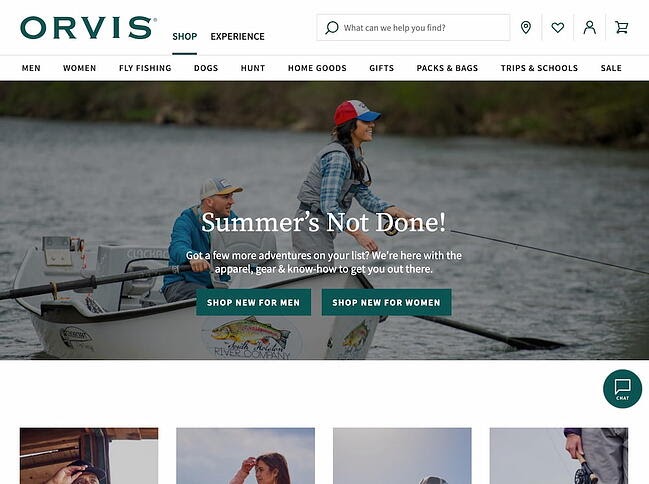
Walgreens creates an omni-channel pharmaceutical experience by using its mobile app as a primary tool for brand communications. Customers can use the app to check and refill prescriptions without having to call their pharmacy and set reminders that alert them if a prescription needs to be renewed.
- While the Walgreens app doesn't have any groundbreaking features, it’s extremely convenient because everything can be done through the app.
13. Topshop
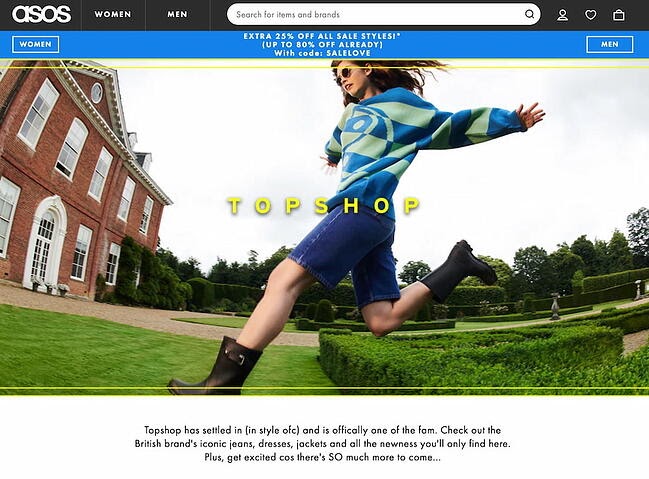
- The attention-grabbing nature of billboards makes this approach more effective in other channels as well.
14. Pepperfry

Once there, customers tour the studio with a Pepperfry design consultant and make a purchase after making sure they’re sure, eliminating buyer’s remorse. If they’re still unsure after a visit, they can return home and make a purchase online. This reduces friction between customers and salespeople, as leads don’t feel pressured to make an in-store purchase.
This investment seems to be pay off, as the company reports that 10-15% of its sales come from these studio locations.
- Intertwining the online experience with the in-person experience makes it easy for customers to make choices about products.
15. Benefit Cosmetics
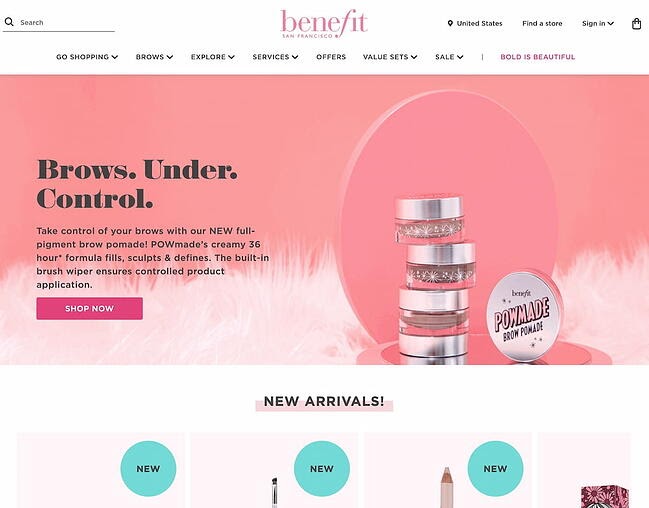
After hosting a competition in the UK, Benefit Cosmetics traveled across the region and provided brow bars to its contest winners as part of its "BrowMobile" campaign. It also hosted a beauty drive-thru where customers could receive free eyebrow waxes and product samples.
The company's former head of brand activation, Kyra White , noted that this campaign "shows customers that we're happy to go to them anywhere. Plus it's Instagrammable, which is great for a brand like ours which doesn't do traditional above-the-line advertising."
White isn't exaggerating either, as this campaign helped the company increase its market share for brow-products to 60% in the UK market.
- Making products in a way that’s mobile adds a whole new channel for marketing.
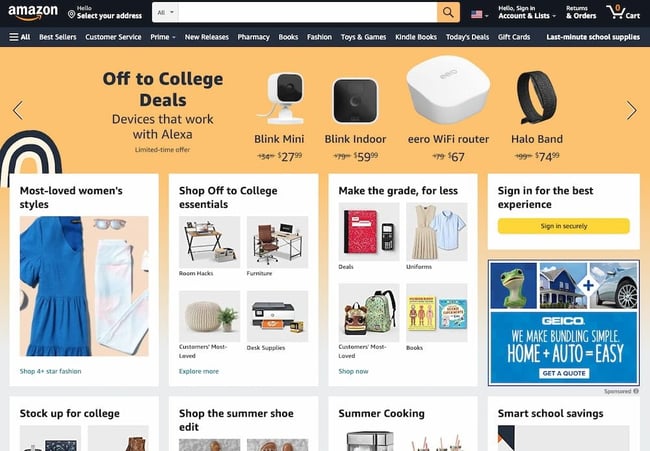
Don't forget to share this post!
Related articles.
![what is omnichannel customer journey How AI Image Misuse Made a World of Miscommunication [Willy's Chocolate Experience]](https://blog.hubspot.com/hubfs/ai%20image%20misuse%20the%20willy%20wonka%20experience%20%281%29.png)
How AI Image Misuse Made a World of Miscommunication [Willy's Chocolate Experience]

7 Ways to Delight Your Customers This Holiday Season

14 Customer Experience Fails that Companies Can Learn From
![what is omnichannel customer journey How Customer Experience Has Evolved Over the Last Decade [+ 2024 Trends]](https://blog.hubspot.com/hubfs/future-of-customer-experience.png)
How Customer Experience Has Evolved Over the Last Decade [+ 2024 Trends]
![what is omnichannel customer journey Memorable Examples of AR in Customer Experience [+Tips for Implementing the Technology]](https://blog.hubspot.com/hubfs/augmented%20reality%20customer%20experience.png)
Memorable Examples of AR in Customer Experience [+Tips for Implementing the Technology]

Digital Customer Experience: The Ultimate Guide for 2024
![what is omnichannel customer journey How to Implement a Hybrid Customer Service Strategy That Works [Expert Tips]](https://blog.hubspot.com/hubfs/hybrid%20customer%20service_featured.png)
How to Implement a Hybrid Customer Service Strategy That Works [Expert Tips]

User Flows: 8 Tips For Creating A Super Smooth User Experience

11 Best Practices for B2B Customer Experience
![what is omnichannel customer journey Customer Experience vs. User Experience: What’s the Difference? [+ Examples]](https://blog.hubspot.com/hubfs/customer-experience-vs-user-experience_2.webp)
Customer Experience vs. User Experience: What’s the Difference? [+ Examples]
Outline your company's customer journey and experience with these 7 free customer journey map templates.
Service Hub provides everything you need to delight and retain customers while supporting the success of your whole front office
Sprinklr Service
Sprinklr Social
Works Best With
Sprinklr Insights
Sprinklr Marketing
Marketing Teams
Customer Service Teams
- Unified-CXM
- Customers Customer Stories Sprinklr Champions Sprinklr Community
- Company Our Story Leadership Newsroom Partners Careers Culture & Talent Investor Relations Security & Data Privacy Sustainability
- Resources Learn Services Support CX-WISE Podcast Analyst Reports Product Demo Days eBooks & Reports Events & Webinars Blog Unified-CXM Guide Our Services Training For Agencies Help Center Release Notes Contact Us
- Platform & Technology
- Customer Service
- Marketing & Advertising
- Research & Insights
- Social Media Management
- Customer Stories
- Announcements
- Culture & Talent
How to Map Omnichannel Customer Journey [Steps + Best Practices]
March 18, 2024 • 7 min read

Share this Article
Sounds challenging, right?
Start with building an omnichannel customer journey map. It is the starting point to interpret customers’ digital behaviors and embrace a journey-centric design approach.
In this blog, you will learn a four-step process to craft omnichannel customer journeys with actionable insights and potential risks. Let’s dive in.
What is an omnichannel customer journey?
Omnichannel customer journey vs. single channel customer journey , key components of omnichannel customer journeys , how should you build an omnichannel customer journey map , step 1: internal investigation , step 2: assumption formulation, step 3: external research and validation , step 4: narrative visualization , craft memorable omnichannel customer journey with sprinklr .
An omnichannel customer journey refers to a seamless and integrated experience where customers interact with a company across multiple channels (e.g., website, mobile app, social media, in-store) to complete a task. It also implies maintaining consistency and continuity in interactions and data across all customer-brand interactions.
Defining customer journeys this way is more accurate because:
The landscape of devices and technologies has changed. Modern devices/technologies present brands with new opportunities to engage customers.
The sheer volume of interaction possibilities is endless. Customers can use one device to interact with brands in a myriad of ways, increasing the chances of failure.
Customer expectations have evolved. With expanding interaction possibilities, customers have the means to support enjoyable and cohesive customer journeys that are no longer confined to predetermined channels.
The goal is to ensure that no matter where your customers go to “meet” your business, you meet them right there, without introducing any friction or lag, with your agents being alerted automatically every time a customer switches channels, ensuring a great experience at every step of the way. It's like having a trapeze artist catching your customers mid-air. Micah Solomon CX Expert & Thought Leader
A customer journey map is the visualization of the process a customer undertakes to accomplish a task. An omnichannel customer journey map spans the process across all the interaction channels the customer uses to complete their task.
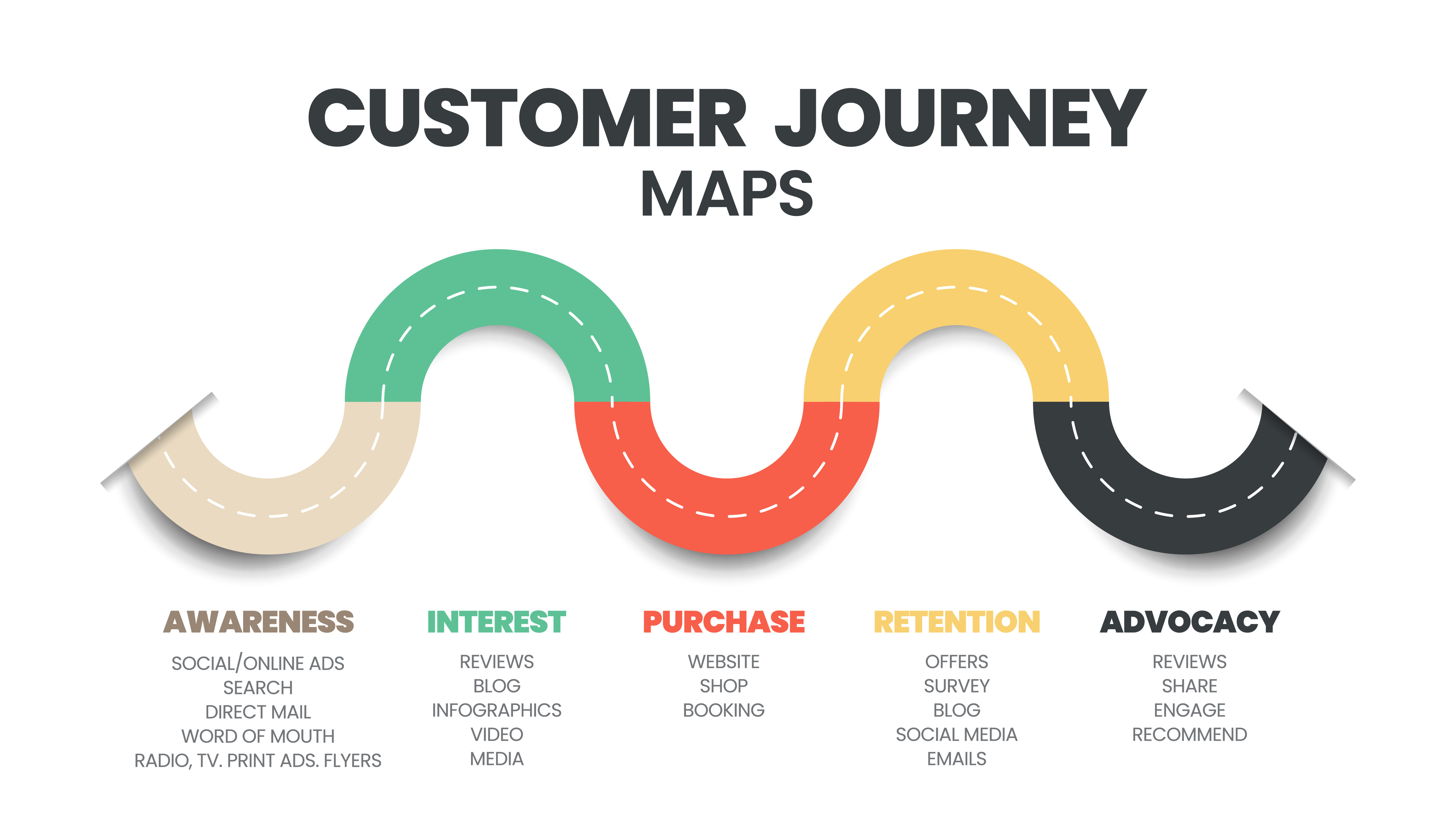
Interaction channels and touchpoints are integral to the concept of omnichannel customer journeys an its key components. Often used interchangeably, these two differ widely. Let’s see how.
An interaction channel is a medium where customers and brands interact, and they can be unidirectional or bidirectional.
Bidirectional interaction channels support instant two-way communication between customers and brands on traditional lines (such as physical stores and phone calls) and digital lines (email, website/app, live chat, texting apps, social media, etc.)
Unidirectional interaction channels are one-way initiated by customers or brands, including postal mail, TV advertisements, and print media. These channels are not real-time.
Interesting Article: Customer Service Channels – How to Pick the Right Ones for Your Business
Different industries patronize different channels in their omnichannel ecosystem. For instance, brick-and-mortar retailers give weightage to physical stores, while internet services may not own any physical channels at all. Companies can innovate channels to cater to their unique use cases. Amazon’s dash buttons are a prime example. These WiFi-enabled physical devices allow customers to reorder products with one long press and are a rare unidirectional channel that is channel-initiated.
Some channels are device-specific, while some are channel-neutral. Smartphone apps and mobile websites fall in the first category, while live chat and email belong to the second category. However, the interface of these channels may render differently on different devices.
Investment in channel integration yields growth in operating profitability . Channel integration is also a salient difference between multichannel and omnichannel ecosystems. Learn more .
Customer touchpoints are interaction instances. In a customer journey, a customer might interact multiple times with a business using different channels. Each interaction instance is termed a “customer touchpoint.” It includes three components:
The device used for interaction.
The interaction channel used for interaction.
The task being completed during interaction.
A customer journey is a series of customer touchpoints, each depicting details of that specific interaction (Refer to the figure below).
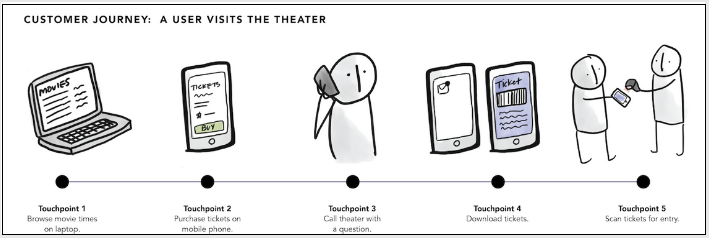
An omnichannel customer journey map is not a wishful depiction of what a customer journey should ideally look like. Rather, it is a truthful account of pain points that drive customers to your business and friction points that drive them away. By analyzing your journey maps, you should be able to pinpoint behavior patterns in specific customer segments and eventually predict their next move. This way, maps render a strong competitive advantage and boost customer retention and profitability.
Start with looking at relevant data within your organization. There is often existing (though disparate) information about the journey buried throughout various past internal efforts. This data - qualitative (e.g., data from past focus groups, customer-support call logs etc.) and quantitative (analytics, customer-satisfaction scores etc.) - can give you clues about how to focus the content of your research efforts.
Throughout a journey-mapping endeavor, you must bring stakeholders along. Without a doubt, journey mapping will reveal gaps and opportunities within the customer experience that, organizationally, are beyond the authority of the CX professional driving the mapping project. You must have buy-in and engagement from a cross-disciplinary team so that, when those issues and opportunities surface, stakeholders with decision-making authority are already convinced of the soundness of your method and able to understand the importance of resolving the problems it finds.
Establish a network of allies who are stakeholders from relevant departments (marketing, R&D, business analytics, etc.) who play a role in the customer journey and are impacted by it or can provide vital inputs for mapping.
Put your core team of allies to work. Together, generate a list of questions that you would like to answer, then send your allies back to their respective teams or departments to search for any available documentation or data that can help begin to answer those questions. Good places to start include:
Market-research surveys
Brand audits
Call center or customer support logs
Site surveys or VOC (voice of customer) feedback
Outputs from client advisory board (CAB) meetings
Customer journey analytics
By now, you will most likely have gathered enough insight to formulate a tentative hypothesis about how certain pieces of the customer journey look and what pain points exist. Start laying out that hypothesis in a draft framework called an assumption map or a hypothesis map .
Share the insights gained from internal research with all the concerned stakeholders and map the findings on a tentative journey map, which will be validated against external research in the next step.
You may be tempted to use existing stakeholder data as the basis for your journey map, but beware. While this data can give you a high-level understanding of customers’ general attitudes and levels of satisfaction for specific interactions, it does not help with understanding emotions, mindsets and motivations at the level required for effectively depicting the entire journey.
Then what?
Conduct external research on real customers using methods like:
⛔ Pitfall Alert: Basing Your Map on Assumptions
Research can be expensive and time-consuming, so what’s wrong with creating and using an “assumption map” based on stakeholder input and cutting out the research phase? While stakeholders do hold valuable knowledge about different areas of the customer journey, most of them do not have a broad enough perspective of the customer journey, nor a deep enough perspective of user needs at each stage, to be able to piece together a realistic, comprehensive view.
An assumption map carries two major risks :
It carries less weight and is more likely to be written off as “anecdotal” than seen as a compelling tool to drive change.
Decisions stemming from such inaccurate maps are faulty, altering the experience irreparably and leading to lost conversion opportunities.
Your takeaway? Base your maps on historical user data and primary research via interviews and customer surveys . Take a tour of Sprinklr’s omnichannel survey platform , or try it for free for a full 30 days by hitting the button below:
At this point, you need to create a visual narrative that will communicate the journey and all the critical moments, pain points, and high points within it. A good method is to have another workshop with your ally team. Having built context and common ground throughout your research process, bring them back together and evolve the hypothesis map based on your primary research findings.
Editor’s Choice: Customer Journey Management: Your A-Z Guide for 2024
The experience your customer has at individual customer touchpoints impacts their ongoing relationship with your brand. Take a look at your own omnichannel ecosystem.
What channels do you support? Across which devices? Ask yourself if there are important gaps to be filled in your channel solutions.
Sounds like a lot of work, right?
With Sprinklr, it isn’t.
Sprinklr’s unified customer experience management (Unified-CXM) platform takes the grunge work out of omnichannel journey mapping by:
Integrating data and insights across 30+ modern and traditional channels into one unified view.
Four interwoven tool suites for insights, marketing, sales and support for complete stakeholder buy-in and leak-proof journeys.
Granular journey analytics and reporting to highlight behavior trends and consumption patterns in real time.
If you want to partner with a brand that simplifies customer journey mapping and eliminates point-solution chaos for McDonald’s, Nike and Microsoft, jump aboard to Sprinklr. Explore the platform at your pace with a 30-day trial on the house:
Frequently Asked Questions
An omnichannel customer journey provides a seamless and integrated experience across multiple channels, ensuring consistency and continuity. In contrast, a multichannel approach involves utilizing various channels but may lack the same level of integration and cohesion.
Traditional customer surveys can gauge customer satisfaction levels and brand perceptions. However, to avoid human error, bias and skewed results, it’s advisable to use an AI-powered journey analytics tool like Sprinklr Service that generates granular metrics for all the interactions and touchpoints in a journey.
AI enhances the omnichannel customer journey by providing personalized recommendations, predictive analytics, chatbots for instant support, and data-driven insights, ensuring a seamless and efficient customer experience across channels.
Related Topics
Article Author

Bhavna Gupta
Guest Contributor
Related Articles
![what is omnichannel customer journey Role of Contact Centers for Marketing Teams [+Tips]](https://images.ctfassets.net/ukazlt65o6hl/2ZMalYXIDcLTBgirqQ3MjL/ce5877cdee2c2eb76713755042c91c98/Feature_Banner-Contact_center_marketing.jpeg?w=750&h=375&fl=progressive&q=70&fm=jpg)
Learn how to integrate contact center marketing into marketing initiatives to enhance customer engagement, acquisition and retention. Get actionable tips.

Your Guide to Meeting Sprinklr at CCW Las Vegas
Meet Sprinklr at CCW Las Vegas
Rachel Alvarez May 28, 2024 • 1 min read

15 Best Chatbot Examples from Groundbreaking Brands
Looking for chatbot examples to uplevel your own customer support, sales and marketing? Here are 15 innovative ways to use chatbots and conversational AI.
Aksheeta Tyagi May 20, 2024 • 10 min read
Redefine the omnichannel approach: Focus on what truly matters
The idea of an omnichannel experience —in which companies aspire to provide a set of seamlessly integrated channels that caters to customers’ preferences and actively steers them toward the most efficient resolution—has been around for years. Customer expectations have changed, however; customers increasingly expect consistent information to be at their fingertips, regardless of the channel they choose to engage with. Our research shows that more than half of customers engage with three to five channels during each journey they take toward making a purchase or resolving a request. We also found that the average customer attempting to book a single reservation for accommodations online switched nearly six times between websites and mobile channels.
Although many companies have tried to implement an omnichannel strategy , few have truly succeeded in building a comprehensive experience for the customer. The perception that the effort would require an unsurmountable amount of time and resources has been daunting enough to keep some companies from ever making the attempt.
Others have tried to do the impossible and meet the potential omnichannel needs of every customer and every possible touchpoint. These companies have stumbled owing to their lack of focus, competing priorities, slow progress, and huge costs—and ultimately had only a disjointed experience to offer their customers. What most leaders fail to realize is that a perfect omnichannel solution rarely, if ever, exists. It is impossible to be all things to all customers, especially in an ever increasingly paced world.
It is possible, however, for a company to design an exceptional omnichannel experience for a large majority of its customers, by focusing on the two or three cross-channel customer journeys that are most important to that majority. Getting the omnichannel design right for these targeted journeys requires a customer-centric mindset that’s infused throughout the organization.
The importance of a new omnichannel strategy
Companies that successfully adopt a more customer-centric stance and focus on the two or three most important cross-channel customer journeys can create significant value. An omnichannel effort targeted to the top interaction models can dramatically increase the extent to which customers are able to use self-service options. In our experience, some use cases have shown nearly a 20 percent boost in containment—that is, the share of customers who engage with an automated system such as an interactive voice response (IVR) system, a website, or a chatbot, and have their needs met without assistance from a live agent.
The approach also can reduce the time it takes to handle calls that do reach an agent, because an efficient omnichannel system alerts the agent to customers’ intentions and the actions they took prior to the conversation, enabling a faster time to resolution. It can improve customer satisfaction by providing a more personalized experience and even create “moments of delight” for the customer during interactions that truly matter to them. Focusing on only the top two or three journeys can also make frontline employees more impactful and successful, since, as containment rates rise, employees are able to focus on spending their time with customers who truly need individualized attention.
How to build the new strategy
To reap these sizable rewards, leaders must identify and prioritize the most important cross-channel journeys, design custom omnichannel experiences for those journeys, and embed a customer-centric mindset throughout the organization.
Would you like to learn more about our Operations Practice ?
Find the right cross-channel journeys to prioritize.
The first step for an organization embarking on a targeted omnichannel effort is to select the cross-channel journeys to focus on.
Advanced analytics can help organizations make full use of their rich customer-interaction data and truly understand customer intentions and behaviors across channels. A deep understanding of the customer will help the company determine which cross-channel experiences truly matter the most. Often organizations discover that what is most important to their customers is very different from what they had expected.
When sorting out these data-driven insights, the company should consider two core dimensions of each type of customer journey:
- Customers’ propensity to use multiple channels
- The importance of the journey to customers (which could be a function of customers’ emotion levels, the journey’s complexity and urgency, and the number of customers who take the journey)
To find out which omnichannel customer journeys to prioritize, a company should lay out the considerations for the two dimensions in a matrix so that the best candidates fall in the top-right quadrant (exhibit). The journeys in that quadrant become the company’s top priorities.
An organization can tailor its omnichannel approach by mapping each customer journey to a quadrant of the matrix and focusing on only two or three in the top-right corner.
The telecom industry provides one example of a journey that falls into the upper-right quadrant of the matrix. Because a typical customer doesn’t purchase a new device or change internet and phone packages frequently, the decision to make a change can be complex or emotional to the customer. Such a customer often starts the purchase journey by researching products or services online or in apps before making a switch to the channel—most likely a live chat, a phone call, or in the store—that provides the best offer or the best rate or is most trusted by the customer. The combination of the journey’s importance to the customer and his or her propensity to use multiple channels makes this omnichannel journey a prime experience for the company to get right.
A “fix my internet” journey also tends to be extremely important to customers and has a low propensity to require multiple channels, thus falling into the lower-right quadrant of the matrix. It is important because a sudden internet outage can disrupt customers’ lives and cause them undue distress. And these customers are unlikely to use multiple channels because, having lost access to the internet, they often move straight to phoning the company.
Organizations should deprioritize the cross-channel functionality of low-importance journeys such as a “check my data usage” journey, when customers often quickly check their data usage using an app without crossing over to an additional channel. This journey falls in the lower-left quadrant, as it has low importance and customers taking the journey are not inclined to use multiple channels.

The care of one: Hyperpersonalization of customer care
Design for the channels that matter.
Once organizations have determined where important interactions intersect with a high propensity to use multiple channels, they can shift their focus to building out functionalities in line with the channels of customer choice, making sure information flows freely across those channels to enable a personalized omnichannel experience.
Our experience shows that—whether a company is in the travel, retail, financial services, or other industry—there are often patterns in how customers interact with different channels as they embark on specific journeys with a company. By prioritizing the most common paths and the channels that customers on those paths use first, companies can quickly increase their chances of creating impactful experiences where they matter most and make the experience feel personalized to the customer.
For example, one telecom company found that the “dispute my bill” journey fell into the upper-right quadrant—a key journey to get right. The company tracked customers’ digital engagement behaviors— including activities on the company’s website and app, chats, and inbound calls—and found that more than 70 percent of those who called to ask about their bills spent 10 to 15 minutes on the website three to four days before making the call. With this in mind, the company equipped its contact center agents with customer-specific information from their customers’ previous online interactions and the history of customer bill changes. As a result, the next time these customers called, agents could jump directly to the bill in question and address critical questions. This approach created a personalized experience for the customers.
In some cases, companies may purposefully choose to engage the customer across multiple channels. Upon analyzing its cancellation journey, one telecom found that many customers spent time reviewing their contract and cancellation terms online a few weeks before calling to cancel. Instead of passively waiting for a customer’s call, the company proactively implemented a pop-up chat function on its contract and cancellation-terms webpage that connected customers directly to the retention team. If the customer still chose to call, he or she was routed directly to a retention agent equipped with the customer’s browsing history. This purposeful engagement ensured timely intervention, reduced customer attrition, and provided a meaningful boost to both customer and employee satisfaction.
By prioritizing the most common paths and the channels that customers use first, companies can create impactful experiences where they matter most.
Embed a customer-centric mindset
Internal limitations—such as legacy technology platforms or a lack of automation in the back office—should not determine what kind of omnichannel experience a company builds. Rather, companies should focus completely on understanding what customers want and need by segment (such as age, geography, and income) and taking an omnichannel approach that puts customer needs at the very center of its functionality.
Recognizing that buying a car can evoke strong customer emotions and that many customers use multiple channels along the way, car companies, for example, should take great pains to understand the journey a customer is likely to take and then build omnichannel functionality based on that path. With a deep understanding of the customer journey, car manufacturers might, say, make sure that agents and dealerships have the right set of information at their fingertips—such as customers’ online or mobile-app search history and saved searches—to provide a more personalized experience.
For an organization to deliver truly individualized service and maintain superior omnichannel experiences, the journey-focused and customercentric view needs to permeate throughout the organization, from the C-suite down to the agent level. Some organizations have started to organize teams around journeys to cut through business silos and adopt an agile mindset that quickly brings customers’ concerns to the surface. 1 For more on an agile mindset, see Carolyn Dewar, Sherina Ebrahim, and Michael Lurie, “ Agility: Mindset makeovers are critical ,” McKinsey Organization Blog, April 30, 2018, on McKinsey.com. In companies with successful omnichannel efforts, customer satisfaction measurements cascade upward, from the front line to management scorecards, and employees are held accountable for the promises they make to customers.
The behavior of the leaders at such organizations provides a role model. For example, C-suite leaders at one North American bank gain a greater understanding of what’s important to customers—as well as boost employee morale—by regularly visiting the call center and sharing customer feedback with employees across the organization. Employees are recognized and celebrated publicly for outstanding customer service.
Without being thoroughly customer-centric and focused on customer journeys, companies are likely to expend their resources in the wrong places and inevitably fall behind the competition.
Companies that get the omnichannel experience right can stay ahead of the curve by being among the first to adapt to an increasingly digital world. The earlier organizations can start using a customer-centric and journey-focused approach to their omnichannel strategy, the sooner they will reap the benefits. Omnichannel success no longer needs to be a daunting or seemingly unachievable aspiration. By focusing resources on the multichannel journeys that customers truly value, organizations can provide personalized attention and provide the best customer service in the moments that matter most.
Jorge Amar is a partner in McKinsey’s Stamford office, Raelyn Jacobson is an associate partner in the Seattle office, Becca Kleinstein is an associate partner in the New York office, and Allison Shi is a consultant in the Los Angeles office.
The authors wish to thank Paul Kline, Subhrajyoti Mukhopadhyay, Maurice Obeid, and Grant Riewe for their contributions to this article.
Explore a career with us
Related articles.

Technology and innovation: Building the superhuman agent

Customer care: The future talent factory

The future of customer experience: Personalized, white-glove service for all
✂️ The Future of Marketing Is Personal: Personalize Experiences at Scale with Ninetailed AI Platform Ninetailed AI →
- Customer Experience
Omnichannel Customer Journey Mapping: The Ultimate Guide

As businesses continue to shift their focus toward providing an integrated customer experience, the need for effective omnichannel customer journey mapping is becoming increasingly important. The mapping helps companies analyze how customers interact with a brand across multiple channels and touchpoints, allowing them to identify areas for improvement.
This in-depth article will cover the relevance of omnichannel customer journey mapping, examine its advantages and drawbacks, and provide an easy-to-follow guide for creating an omnichannel customer journey map.
Why Turn to Omnichannel Customer Journey Mapping?
Omnichannel customer journey mapping is a process of tracking every step customers take when interacting with a brand's product or service throughout their entire journey—from initial discovery to purchase and beyond.
This implies determining which channels consumers use, what product information they search for, and what actions they take at each journey stage. By visualizing it all on the map, businesses can get an overview of the customer experience with the product or service and identify gaps in their current experience that could be hindering conversions, increasing abandonment rates, or causing dissatisfaction.
By understanding these pain points better, companies can figure out how to create a seamless experience for their customers across all channels. As a result, they drive more sales, ensure conversion optimization , and keep customers returning. In other words, understanding how your customers interact with your products or services is key to ensuring them a positive experience that will lead to increased loyalty over time. Here are other reasons to conduct mapping.
Assists with Marketing Campaigns
Understanding the decision-making process of your target audience allows you to create marketing campaigns to meet your clients' needs and answer the frequent and most pressing questions. You can also identify the platforms where customers make more purchases and create promotional campaigns, encouraging users to explore your goods or services on this channel.
Provides Audience Insights
You can feel more empathetic with your customers when following their journey. The map makes it easy to maintain accurate user personas and client profiles. Yet remember that if your software doesn't automatically combine the data in real-time, customer journey maps, buyer personas, and client profiles should constantly be evaluated and updated.
Increases Retention
Since the relationship with the consumers does not end with an order, a comprehensive customer journey map also goes beyond. It has to include onboarding, brand advocacy, and upselling stages to assess and improve them and ensure better retention as a result.
Consolidates Data for the Whole Team
One comprehensive map makes it easier for stakeholders to discuss ways to enhance client experiences and puts staff from all departments on the same page.
A map directs your team's attention to what the audience is doing and how to address their problems effectively. Maintain the customer journey map's accessibility and visibility so that it can guide your business choices. The customer journey map may be a reference point for new campaign concepts, messages, techniques, and more.
Challenges of Omnichannel Customer Journey Mapping
While the opportunities ensured by customer journey mapping seem very bright, there are also some challenges and limitations to consider:
Automation Challenges
Different technologies used by companies may not communicate effectively due to automation issues; this requires careful integration so that all systems work together seamlessly without any disruptions.
Data Collection and Analysis
The mapping of omnichannel customers' journeys is based on information from various sources, including social media, website analytics, past purchases, and customer interactions. A cohesive customer journey perspective can only be achieved by integrating and combining this data from numerous sources and channels. Yet, data silos, incompatible formats, and poor data quality might hinder the accuracy and thoroughness of the customer journey map.
Maintaining Consistency
A uniform experience across all channels is one of the main objectives of omnichannel customer journey mapping. Nevertheless, maintaining consistency can be difficult because every channel has different features, constraints, and user experiences. Organizations always struggle to strike a balance between the need for consistency and user expectations as well as channel-specific needs.
Organizational Alignment
Omnichannel customer journey mapping calls for cooperation and coordination between several teams and departments. In order to develop a comprehensive understanding of the customer journey, marketing, sales, customer service , IT, and other departments should work together. With complex organizational structures, it may be difficult to overcome silos, develop clear communication channels, and ensure consistent messages and experiences.
Getting Started With Mapping
The omnichannel customer journey mapping approach often begins with identifying your objectives. Think about the particular areas you want to focus on and the precise outcomes you want to achieve. This will help you stay focused and on target. The following are other omnichannel journey mapping stages:
Identify Your Customer Segments
Before you start mapping journeys, you should first identify who your target audience is to tailor experiences accordingly. This includes researching demographic information such as age range, location, gender, etc., analyzing market trends related to these segments (this could involve surveys or focus groups), understanding buying habits specific to each segment, etc.
Group your customers according to any shared characteristics you found. Create fictitious client profiles for each category after identifying the characteristics they all share. List the name, age, employment, interests, and any other relevant information for each category. Utilize your personas to direct your product development and marketing initiatives.
Define Customer Interactions
Knowing what touchpoints are there isn't enough. You should also define what interactions occur at each touchpoint—which type of content do users see when visiting your website? Are there any emails sent after making an online purchase? What does the checkout process look like on mobile devices compared to desktops?
Analyze Your Mapping
After defining all possible interactions between consumers and brands, analyze them using tools such as Google Analytics or Adobe Analytics, etc. Look at qualitative data (like user feedback) and quantitative data (like conversion rates ) to see the whole picture.
Look through the customer journey map to identify issues, roadblocks, and potential improvement areas. Seek areas throughout the customer journey where your customers struggle, encounter obstacles, or lose patience.
Search for chances to enhance the client experience. These options can include improving communication, offering additional services, etc.
Measure and Adjust
After completing an initial mapping exercise, businesses should regularly measure performance and adjust anything that needs improvement; this could involve testing different types of content, analyzing customer feedback more carefully, etc.
Mapping Tools
Consider using digital technologies to streamline the omnichannel customer journey mapping process. You can speed up the process and gain valuable insights with the help of various customer journey mapping solutions, analytics platforms, social media listening tools, user testing software, CRM, etc. Here are a few examples:
The tool combines customer journey mapping and analytics. It allows companies to analyze customer behavior, track trends in their customer base, and generate insights from surveys and feedback.

Google Analytics
It’s a powerful tool that provides insight into web traffic, engagement, and conversions. With this information, businesses can evaluate the performance of their customer journey mapping efforts and identify areas for improvement.
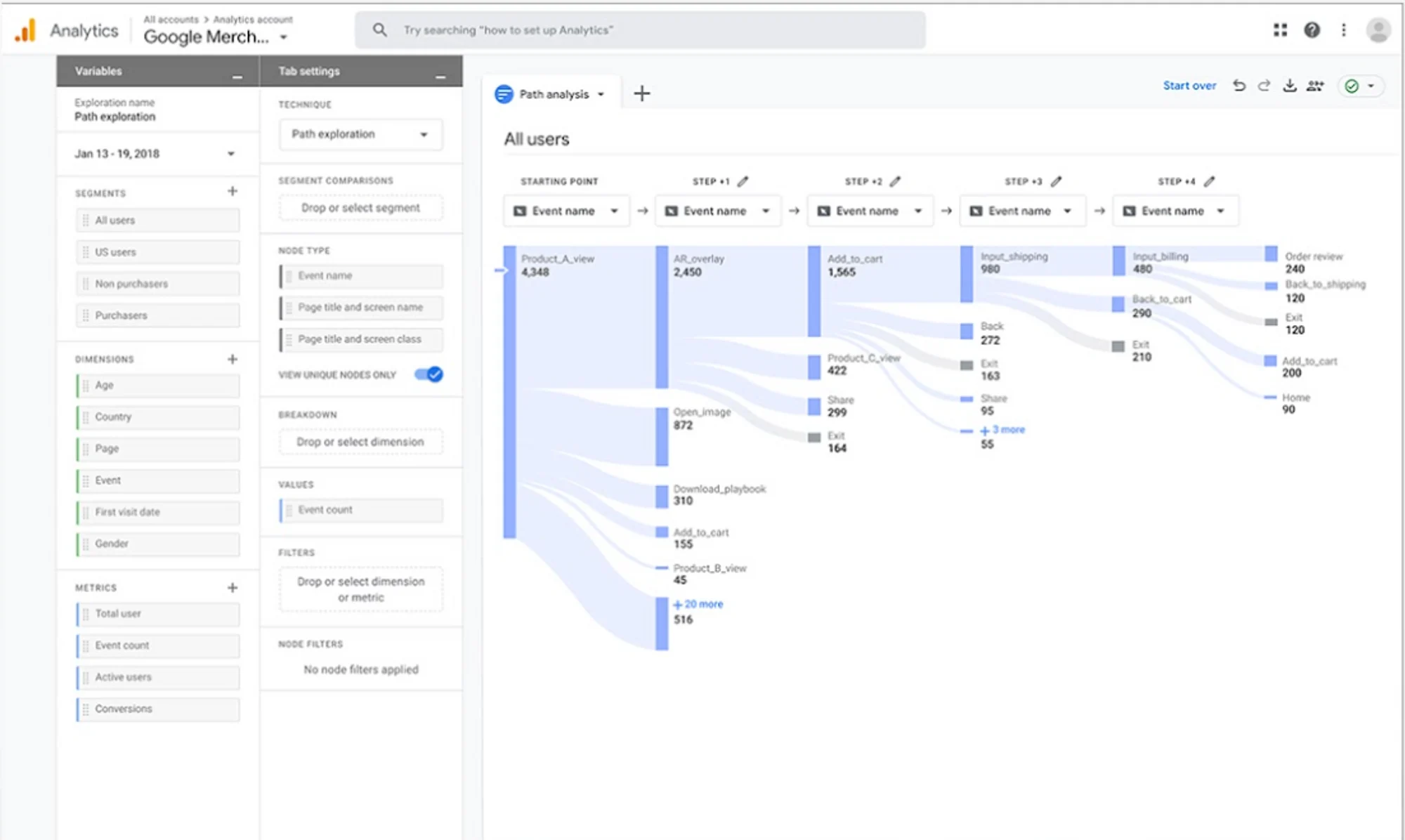
Kissmetrics
Kissmetric collects data from various web, mobile, email, and social media channels to provide a comprehensive overview of customer interactions. This can help companies better understand their customer journey mapping efforts and make changes accordingly.
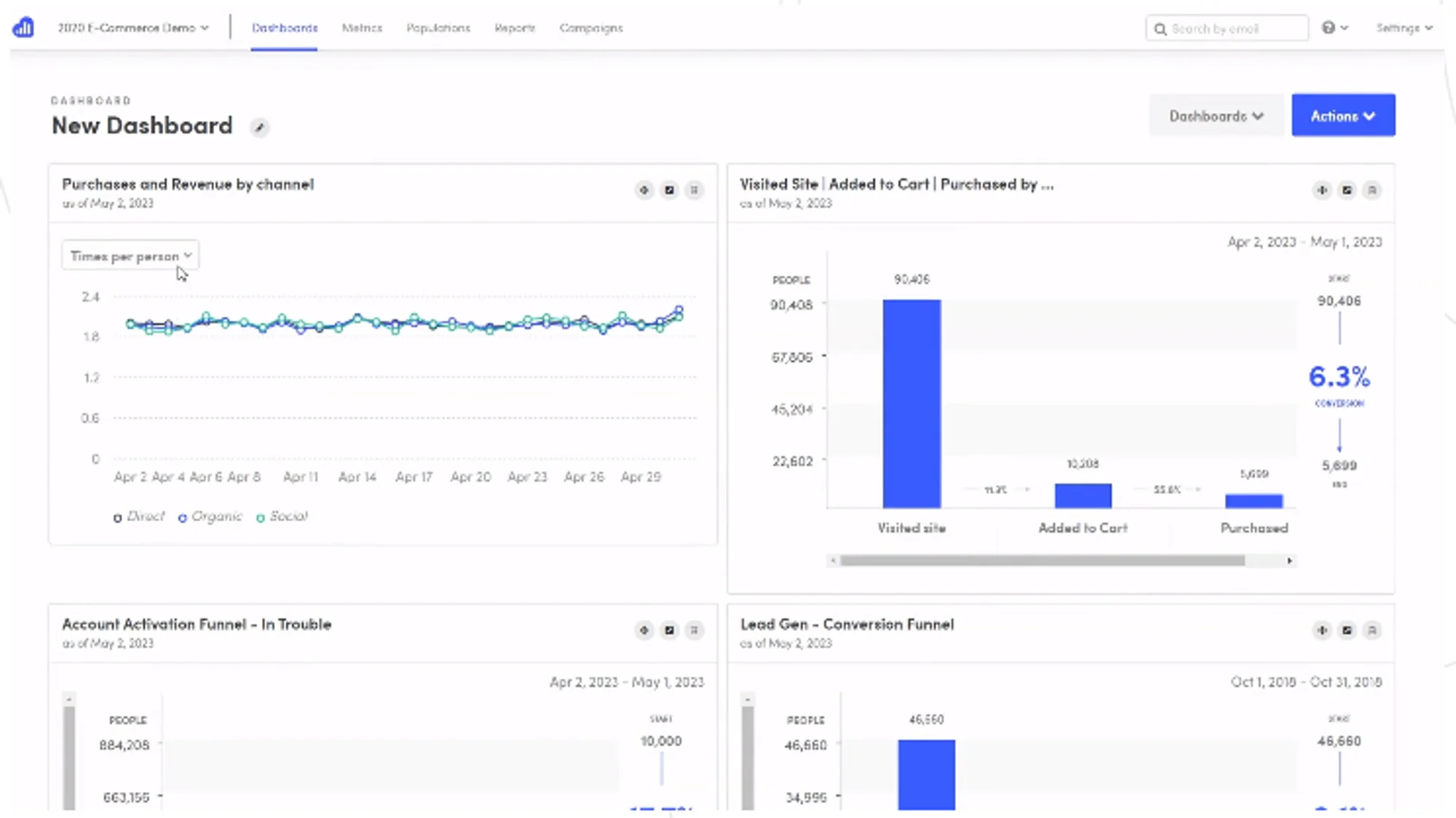
A tool that helps businesses monitor their brand's presence online. By tracking customer engagement across different channels, companies can get insights into how people interact with their brands and use this information to optimize the customer journey.
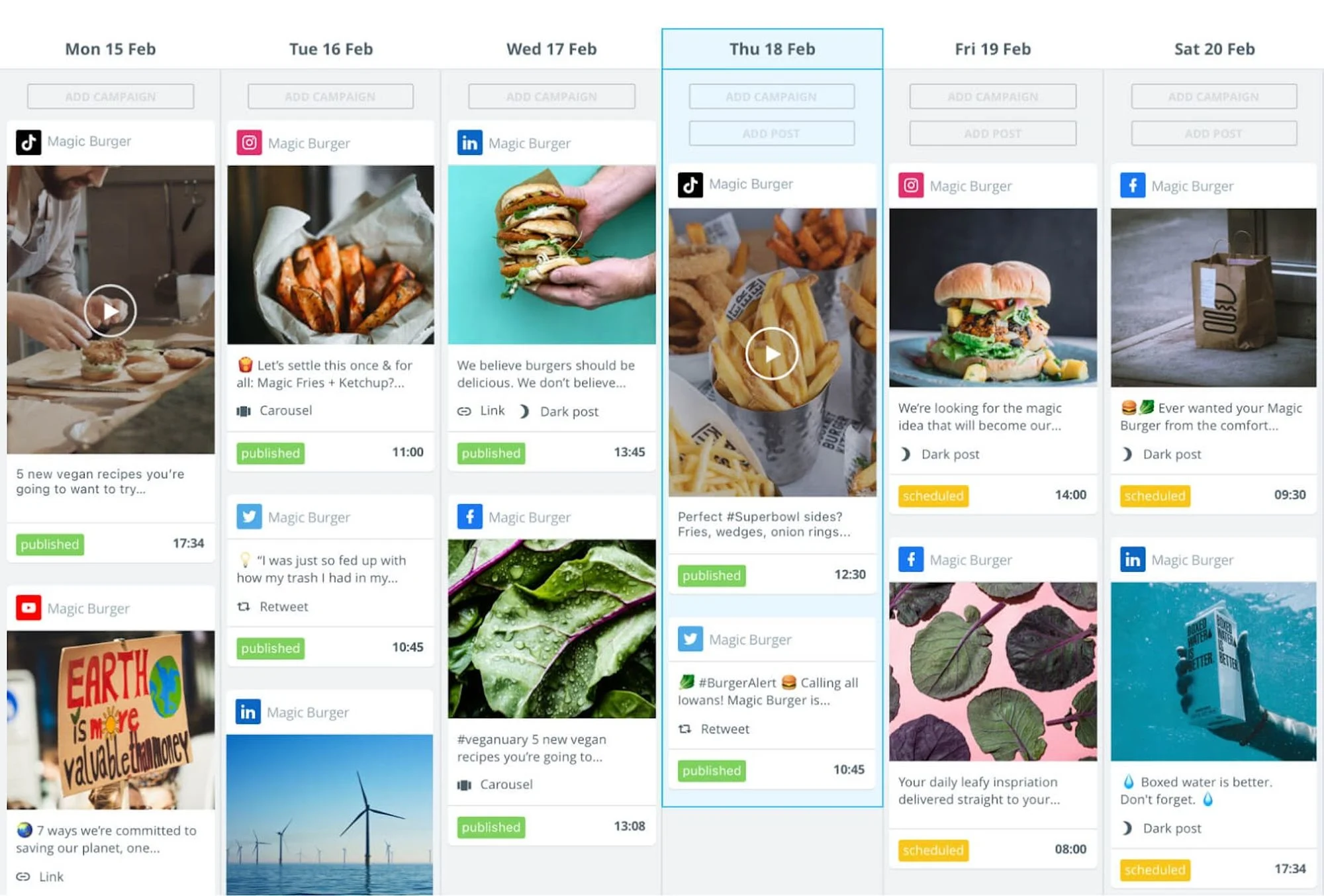
A social media management platform assisting companies in monitoring customer engagement on social media platforms. The tool provides detailed analytics of customer preferences and identifies areas for improvement in the omnichannel experience.
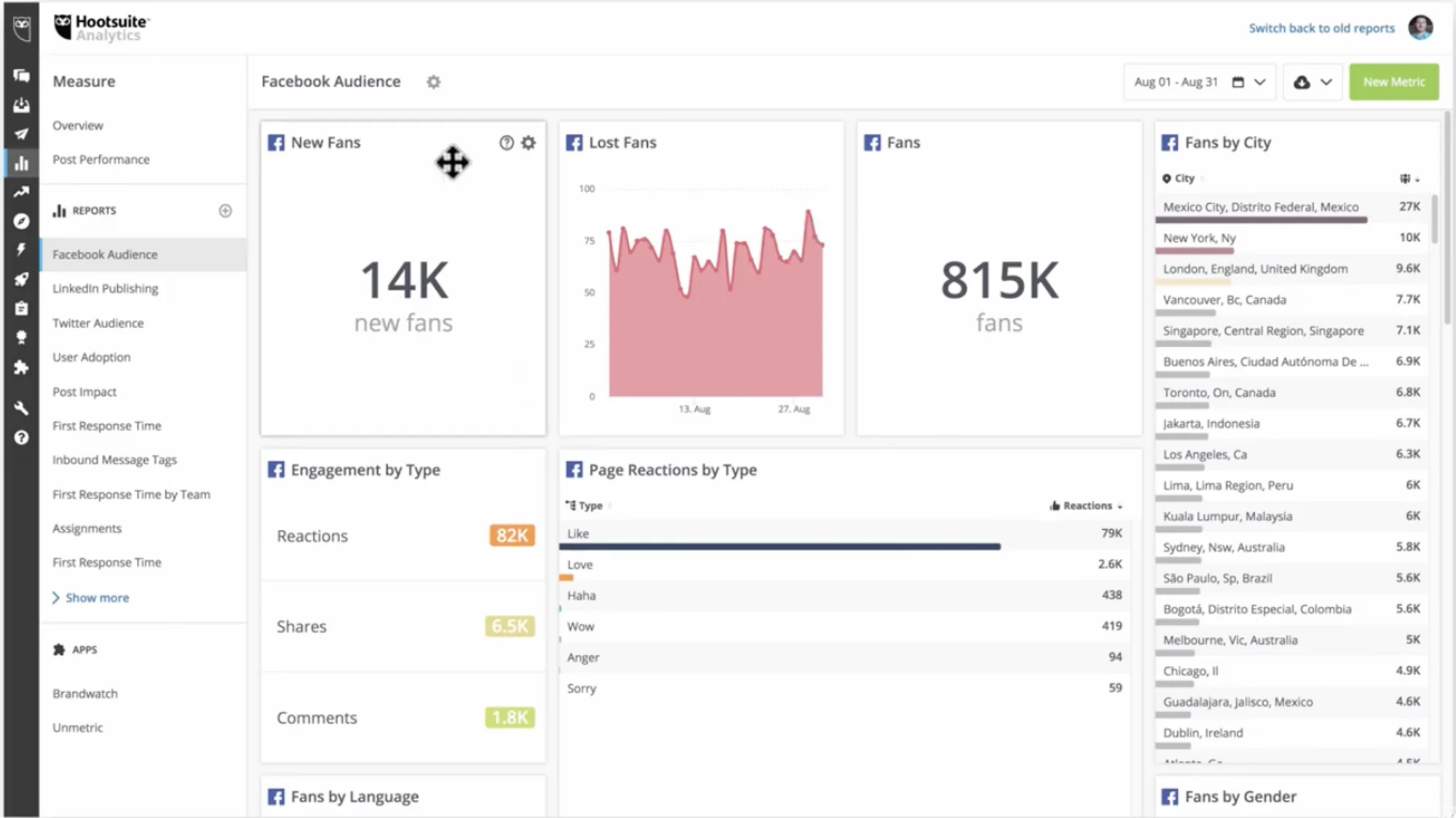
Optimal Workshop
Optimal Workshop is a comprehensive user research platform that allows companies to understand their customers' needs and behaviors through surveys, interviews, and usability testing. Companies can use this information to find opportunities for improvement in their customer journey mapping efforts and make changes accordingly.
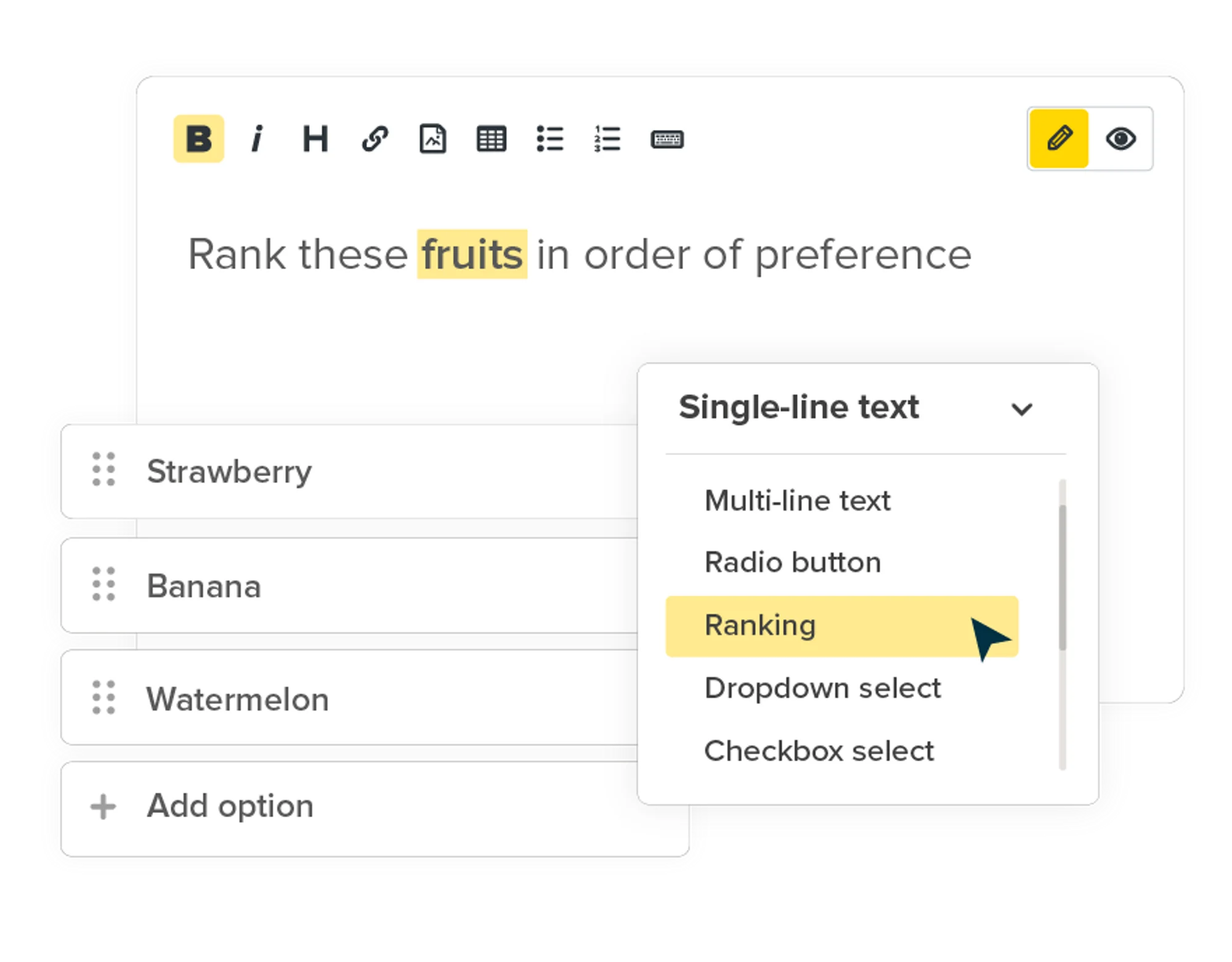
Zoho is a cloud-based platform designed to help businesses gain insights into their customer journey mapping efforts. The tool provides detailed analytics on user behavior, engagement, and conversions. This can help businesses identify areas for improvement in their customer journey and make changes accordingly.
Mind that there are many alternative tools with various capabilities and price ranges. Hence you can always find something suitable for your business.
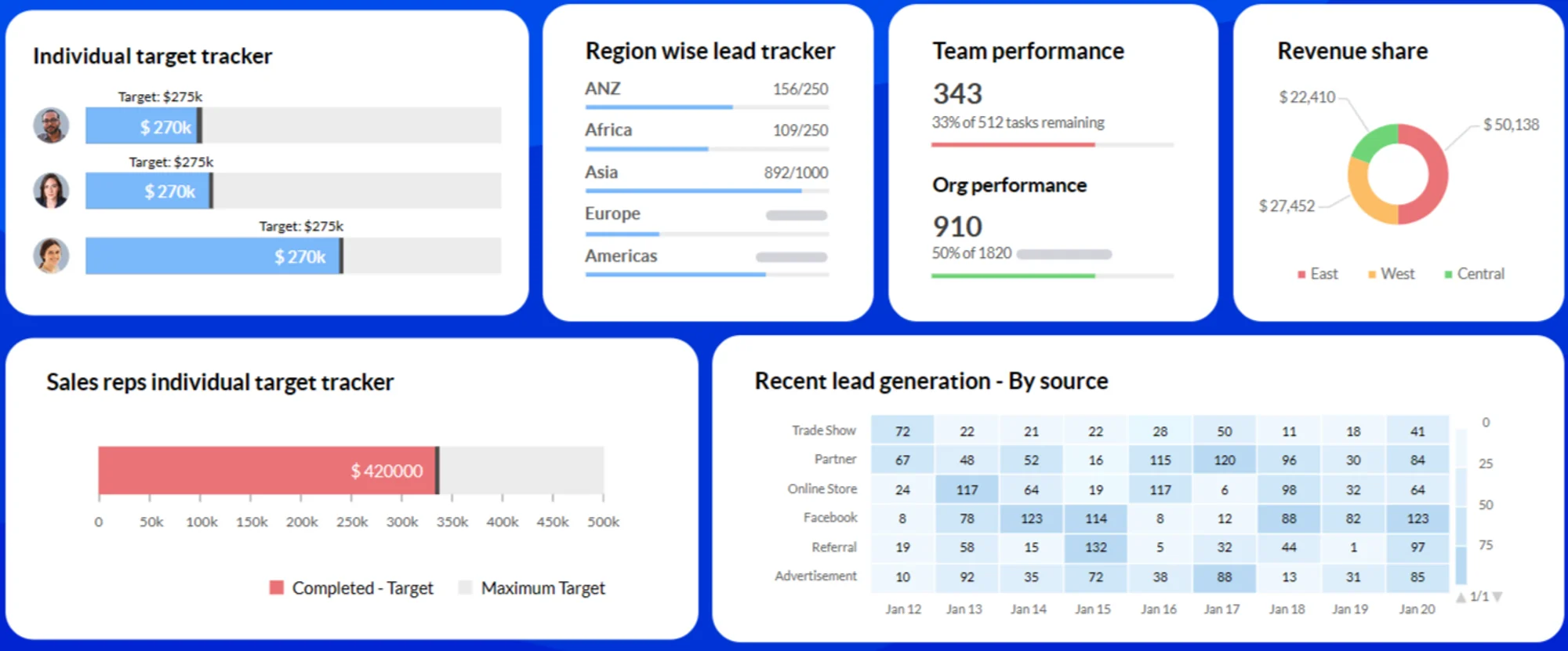
The Bottom Line
Omnichannel customer journey mapping can be a powerful tool for businesses looking to get an overall view of how their customers interact with their products or services across all channels.
By understanding customers' journeys better, companies can create experiences tailored toward each user and identify potential gaps in the current processes, all of which lead to increased brand loyalty over time. According to statistics , annual revenue growth for businesses with great omnichannel customer involvement is 9.5%, compared to 3.4% for businesses with poor omnichannel engagement. These numbers demonstrate the significant impact that omnichannel customer journey mapping can have on a business.
Although there may be some challenges associated with this process (automation issues, data collection/analysis, etc.), they can all be overcome by following the steps outlined above.
Frequently Asked Questions About Omnichannel Customer Journey Mapping
What is an omnichannel customer journey.
An Omnichannel Customer Journey is a multi-channel approach to marketing, selling, and serving customers in a way that creates an integrated and seamless customer experience. This journey encompasses all the different touchpoints a customer has with a brand, across multiple channels and platforms, such as online websites, physical stores, mobile apps, social media, and more. The primary goal of an omnichannel customer journey is to ensure a consistent and personalized experience for customers, regardless of how or where they choose to interact with the brand.
What Is Omnichannel Customer Journey Mapping?
Omnichannel Customer Journey Mapping is a strategic process of visualizing the path that a customer takes across multiple channels when interacting with a brand. This mapping process involves outlining all the consumer interactions and touchpoints with your brand, from the initial discovery to the final purchase and beyond.
What Does Omnichannel Marketing Mean for Customer Journey Mapping?
Omnichannel marketing and customer journey mapping go hand in hand. In the context of customer journey mapping, omnichannel marketing means creating a unified and seamless customer experience across all channels and touchpoints.
Learn how to deliver unique and personalized customer experiences to increase conversions
Keep Reading on This Topic

In this blog post, we will explore nine of the most common personalization challenges and discuss how to overcome them.

In this post, we will discuss some of the best practices and tips for using website content personalization to delight your customers and enhance user experiences.
Omnichannel CX: a guide to an end-to-end connected experience

Related articles
Helpdesk Automation: Why are companies investing in it?
Customer experience automation: A guide to doing more with less
Generative AI for customer support: History, benefits and use cases
Customer success automation: A guide to a frictionless experience
See more articles
As customer expectations continue to rise, it’s becoming increasingly essential for companies to provide a seamless and consistent experience across all their channels.
This is where omnichannel CX comes in. It’s a customer-centric approach that integrates all your most important touchpoints, creating a cohesive, unified experience for your customers.
In this article, we’ll dive deeper into the concept of omnichannel CX and make the case for why companies should be investing in this strategy. We’ll also present the most critical benefits of doing so, with examples of omnichannel solutions. Finally, we’ll provide you with a few actionable tips to improve the experience you’re currently offering your customers.
What is an omnichannel customer experience?
Omnichannel CX refers to a customer-centric approach that treats every touchpoint across different channels as one continuous experience. Its goal is to allow customers to interact with a brand in the way that’s most convenient for them, whether it's via a website, mobile app, social media platform, or in-store (or, of course, some combination of them all).
The impact of having an omnichannel strategy for your customer experience cannot be overstated. In addition to streamlining issue resolution and reducing friction, omnichannel operability fosters personalized, efficient journeys that can be a key facilitator for long-lasting loyalty.
Why should companies invest in an omnichannel CX?
2. customers already use multiple channels throughout their shopping journey.
According to a Statista report conducted in 2022, 64% of US consumers use email to contact a brand. However, a substantial number of people also engage with companies through other channels, including websites or chat applications (47%), social media (36%), phone support (30%), and text messaging (28%). ²
This data clearly demonstrates just how varied the channels of communication are between a business and its customers, thus highlighting the importance of consistency and seamlessness across all channels, including online, in-store, and mobile. It’s also important to note that maintaining and enhancing this interoperability is not just for the benefit of the purchasing process, but the entire customer journey ( including after-sales).
By investing in an omnichannel CX, companies can ensure that customers can easily find the information they need, regardless of the channel they're using.
This improves customer satisfaction and also helps to increase sales and customer loyalty. Businesses that fail to provide an omnichannel experience run the risk of losing customers to rivals that embrace this comprehensive approach.
2. It improves workflow efficiency
According to our Customer Service Trends report , 50% of support leaders say that more efficient workflows have better equipped their teams to meet customer expectations.
By providing a unified platform to manage customer interactions across multiple channels, omnichannel customer experience solutions streamline the workflow and eliminate the need for switching between different tools or systems.
This results in faster response times, better collaboration between teams, and, ultimately, higher customer satisfaction .
Is your support team struggling with its workload? Meet Intercom’s Workflows, the mission control center for customer service automations .
What are the benefits of an omnichannel CX?
1. consistency across channels.
In an omnichannel approach, customers can engage with a business across multiple channels, such as email, social media, chat, and phone.
Consistency across these touchpoints is crucial because it ensures that the customer receives the same message and level of service on whatever channel they choose to utilize when interacting with your business.
This consistency also helps build trust and credibility with customers, as they’re able to rely on your business to deliver a consistently satisfying experience in every single interaction.
Moreover, companies that create a uniform experience across all their channels have a unified view of the customer's journey , which can help them better understand evolving needs and preferences.
Do you need help creating an instantly recognizable brand that helps your company to nurture trust, loyalty, and retention among your customers? Check out this article: Why brand consistency is key to an excellent help center experience .

2. Enhanced brand adherence and revenue
One of the key benefits of an omnichannel approach is its ability to drive revenue and brand adherence.
By creating a seamless and immersive experience across all channels, businesses can effectively engage with their customers, boost their loyalty, and continually drive sales. Through omnichannel CX, customers interact with a brand through various touchpoints and become more and more familiar and comfortable with that brand’s products, services, and communication style.
The omnichannel strategy provides businesses with an abundance of opportunities to connect with their customers and create a personalized experience that resonates with their specific goals for that product or service. As a result, businesses can drive brand adherence and revenue; customers, meanwhile, enjoy a more convenient and fulfilling shopping experience.
3. Improved customer satisfaction
An omnichannel customer experience obviously allows people to choose their preferred channel to interact with the company. But it goes beyond increasing optionality for customers by letting them seamlessly switch channels without losing context or forcing them to repeat themselves to different agents or AI bots . This level of convenience and personalization is all but guaranteed to facilitate higher levels of customer satisfaction.
Additionally, businesses can use data collected from different channels to gain a deeper understanding of their customers' needs and preferences, which can be used to improve the overall customer experience .
Say goodbye to generic, one-size-fits-all customer experiences and hello to a tailored journey: A personal touch: Intercom’s guide to CX personalization .
4. Greater collaboration between departments
Omnichannel CX makes it possible to share customer data and insights across departments, allowing teams to work together to solve problems and provide personalized solutions to customers.
By breaking down communication barriers between interdepartmental teams, omnichannel CX fosters a culture of collaboration and teamwork. This can lead to increased efficiency, greater individual and collective expertise, and improved customer satisfaction.
For example, a customer who has a problem with their order can be quickly routed to the appropriate department for resolution. This ensures that the customer receives the best possible service and that their issue is resolved as fast as possible.
5. Efficient issue resolution
With omnichannel customer experience, businesses can gather customer data from different channels and create a more complete, all-encompassing view of their audience. This helps businesses to identify the root cause of the most prevalent and recurring issues and provide personalized solutions to their buyers.
Omnichannel CX also enables businesses to respond to customer queries in real-time, reducing wait times and enhancing customer satisfaction. Efficient issue resolution through omnichannel CX ultimately leads to increased customer loyalty, improved business reputation, and higher revenue.
Omnichannel customer experience solutions
Delivering an outstanding customer experience hinges on providing an omnichannel approach, but it's crucial to select a customer service software that genuinely supports all of your channels. Many platforms claim to integrate multiple channels, yet they often leave key touchpoints scattered and disconnected, resulting in a disjointed experience for customers and frustration for support teams.
Because so many customer service software solutions simply do not provide the omnichannel CX they claim to, Intercom's integrated i nbox is a game-changer. Powered by AI, it simplifies usage and consolidates all customer interactions in one place, irrespective of the specific communication channel. This feature ensures support teams deliver a seamless experience across email, chat, social media, and whatever other channels are core to your business.
Our Inbox doesn't just centralize interactions; it also enhances understanding of customer preferences. This knowledge empowers support teams to personalize interactions, providing tailored solutions that meet each of your customer’s unique needs. The outcome? Businesses can cultivate lasting relationships, elevate customer satisfaction, and foster resilient, enduring loyalty.
How to improve omnichannel customer experience
As you’ve seen, an omnichannel customer experience is no longer a nice-to-have. Increasingly, it’s becoming an imperative for businesses striving to stay competitive in the market. Here are a few key strategies that you can implement to offer a memorable and well-rounded CX.
1. Understand what channels are popular among your customers
First, it's important to understand what channels your customers prefer. While it might initially seem ideal to offer support on all possible channels, sometimes it's better to focus on a smaller number of options and create more refined, customized experiences.
Conducting surveys and analyzing customer data, meanwhile, can provide valuable insights into which channels are most popular with your customers, and where you should be focusing your efforts.
2. Map out your customers’ journey
Second, mapping your customers' journey is crucial to improving omnichannel customer experience. Delve into the dynamics of how they navigate various channels, discovering their preferences at each specific stage of their journey and other patterns that might emerge and prove actionable. These invaluable insights not only deepen and enhance your understanding of your client, but also empower you to fine-tune each channel for optimal impact .
The best-case scenario for successful omnichannel CX implementation looks something like this: your customer starting with a social media platform, for the earliest stages of engagement or support, followed by ; a seamless transition to email or phone when more in-depth communications is sought. This journey is always worth mapping out to understand – and ultimately maximize – engagement.
3. Automate responses
Finally, automating responses is an effective way to streamline customer support and ensure a consistent experience across all channels. Workflow automation can be used to route inquiries to the most appropriate team or agent, and even provide automated responses to common queries. This not only speeds up response times, but also frees up agents to focus on more complex issues.
In conclusion, improving omnichannel CX requires companies to first possess a deep understanding of customer preferences, map out their journey, and use automation to streamline support. By implementing these strategies, businesses can provide a smooth, satisfying and highly consistent customer experience across all their channels.
Take your omnichannel customer experience to the next level with Intercom
Our platform offers key features, including real-time messaging, chatbots, and personalized messaging that enable businesses to deliver a consistent, personalized, and effective CX across multiple channels.
With our omnichannel solution, companies can easily manage customer conversations and interactions across various channels, including email, social media, and website chats. And the best part: thanks to our integrated inbox, it’s all in one place.
We also provide powerful analytics and reporting tools that collect valuable information on customer behavior and preferences. These insights help businesses optimize their CX and improve customer satisfaction.
If you're looking to take your omnichannel customer experience to the next level, our comprehensive platform is the perfect solution. Sign up for a free trial today and see how we can help you deliver a seamless and personalized CX across all your channels.
1 . Statista , Share of retailers who have optimized their customer journeys worldwide in 2020, by omnichannel service. The research was conducted worldwide in 2020, with 300+ retail brands as respondents.
2 . Statista, Channels consumers used to contact brands in the United States as of June 2022.
Cut support volumes and make customers happier with the power of AI
Send us an email
Omnichannel customer experience: exploring seamless customer journeys
Written by by Dorcas Adisa
Published on June 26, 2023
Reading time 13 minutes
Enhanced customer satisfaction, high customer engagement, and increased revenue are good reasons to develop an omnichannel customer experience. Still, it takes more than integrating multiple channels to build a successful one.
It takes a strategic approach, continuous optimization, a customer-centric mindset and a well-planned omnichannel strategy to make it all possible.
This guide introduces the benefits of a successful omnichannel strategy, the challenges of implementing one and best practices for creating an omnichannel experience that delights customers and drives business results.
What you will learn about omnichannel customer experience:
- What is the omnichannel customer experience?
The significance of an integrated customer experience
Unlocking the advantages of an omnichannel approach, omnichannel vs. multichannel: unveiling the key differences, building a cohesive customer experience across channels, enhancing the omnichannel customer experience, examples of successful omnichannel experiences.

Social Customer Care by Sprout Social
What is omnichannel customer experience?
An omnichannel customer experience is a fully-integrated approach that revolves around delivering a consistent, seamless, and delightful experience to customers across various sales channels. It is a holistic strategy that integrates every customer touchpoint, whether email, social media, or in-person, to provide the best customer experience.
An omnichannel strategy aims to see customer experience differently by creating a unified and personalized customer experience, regardless of the channels they choose to interact with the business. However, it’s important to note that this form of experience does not replace traditional channels; instead, it combines them into a unified strategy.
How effective is your CX strategy?
To answer the above question, conduct a customer experience (CX) audit of your existing strategy, including:
- Document existing strategies: Record and analyze the current approaches that your business is taking to the CX experience across all channels. That includes understanding the goals, processes, and technologies currently being used.
- Identify key customer touchpoints : Track your key touchpoints to understand every interaction a customer has with your brand. Analyze each touchpoint to evaluate its strengths, weaknesses, and areas of improvement.
- Compare customer ratings: Gather feedback to evaluate the customer’s experience with your product and customer service . Collect quantitative data and qualitative data for an extra layer of insights.
- Benchmark against competitors: Compare your CX metrics to industry standards to identify if you’re falling short and recognize opportunities to differentiate yourself.
You can read more in our guide to learn how to build a winning CX strategy .
Creating an integrated customer experience is crucial in today’s digital landscape for numerous reasons, including:
- It boosts customer satisfaction, loyalty, and promotes advocacy: Customers who have a great experience across all channels are more likely to remain paying customers. Every positive experience fosters loyalty and encourages customers to become brand advocates.
- Optimized Resource Allocation: Implementing an effective omnichannel strategy allows businesses to optimize resource allocation by identifying the most impactful channels to invest the most effort. This helps companies to streamline operations, reduce costs, and increase profit.
- Creates a consistent brand experience: An integrated customer-centric experience provides a consistent brand experience for users across every touchpoint, whether chatting with a customer support agent over the phone or visiting a physical store.
- Enable teams to pivot quickly and make data-driven decisions: Businesses adopting an integrated experience use analytics and customer behavior data to personalize customer journeys and introduce new features.
- Increased revenue by improving customer retention and attracting new customers: When businesses understand customers, it’s easier to address their pain points, anticipate their needs, and build products that meet their expectations.
Apart from integrating multiple channels to provide a frictionless experience, an omnichannel approach can impact your business in other ways:
1. Create a Seamless customer journey from pre-purchase to post-purchase
Interrupted transitions in the customer journey create friction, frustrate customers, and disrupt their user experience. In an omnichannel experience, customers can easily switch between channels and enjoy continuity, resulting in a more enjoyable journey.
2. High customer retention and loyalty due to accurate segmentation and personalization.
Omnichannel experiences provide a complete picture of the customer across multiple channels so that brands can have a unified view of their interactions and history. Leverage this data to segment customers and create a personalized experience based on their unique needs, preferences, and behaviors.
3. Supports multi-channel engagement within a single interaction
On average, 51% of companies use at least eight channels to interact with customers, including emails, social media, websites, phones, live chat, and in-store. An omnichannel experience allows consumers to reach out to companies on their preferred channels and receive a quick and helpful response from a customer service expert.
4. Create a consistent customer experience across any channel to reduce customer effort.
Embracing an omnichannel approach creates a consistent experience across channels. This means customers can trust that they will receive a similar level of service, quality, convenience, and information regardless of the channel they use. This way, it’s easy to eliminate variations in the customer journey, making it an effortless and frictionless experience.
5. Increased revenue due to higher customer engagement, more conversions, and more sales
When customers have a positive experience, they actively interact and engage with the business. This creates more opportunities for brands to create deeper customer connections and build product loyalty.
Omnichannel and multichannel are strategies for communicating with customers, with two distinct goals.
The term “omnichannel” translates as “available in all channels,” meaning that a customer can switch between any sales channel, like a website or a physical store, and still get a consistent brand experience. Multichannel means “many channels,” meaning customers can interact with many channels, but their experience isn’t unified.
Omnichannel focuses on the customer and utilizes every available channel to provide a seamless experience, whereas multichannel focuses on the product and uses multiple channels to promote it.
Implementing an omnichannel experience requires data synchronization of customer history and alignment between teams to eliminate channel gaps. On the other hand, multichannels operate independently within their respective silos, sometimes resulting in disjointed touchpoints.
There’s no hard rule for building a cohesive omnichannel customer experience. However, there are practical tips and strategies you can follow to help you build a successful one.
1. Understand your customer’s expectations.
There’s no better place to start with customer experience than to understand your customers’ wants and needs. An omnichannel strategy aims to create a positive experience, and failing to understand the customer will result in a misalignment between a business and its customers.
To understand your customers, build buyer personas to represent the attributes of your most engaged audience and collect data on their behavioral patterns, preferences, demographics, and needs.

Depending on your customer base, you may have sufficient data from existing customers to create a comprehensive persona. Otherwise, refer to your preliminary research or contact prospective customers for meaningful insights.
2. Chart the path of the customer journey
Identify the key milestones and touchpoints customers encounter throughout their journey and categorize them based on the stages of the customer journey (pre-purchase to post-purchase). This will help identify where an omnichannel experience can be implemented, such as a live chat pop-up.
Simply put, customer touchpoints are every interaction that a customer has with a brand through a website, social media, or physical stores. Use a visual tool like Miro to organize your data, capture the entire journey (including the stages, touchpoints, emotions, motivations, and pain points), and map the current state of your existing customers.

Once your customer journey map is complete, analyze it for patterns and trends to identify high friction points, opportunities for personalization, and potential gaps in your marketing or sales funnel.
3. Amplifying insights through customer feedback
Whether good or bad, customer feedback plays a huge role in optimizing your omnichannel customer experience. Listening to what customers say about their experience will help you identify areas for improvement. You can collect customer feedback through the following:
- Run user feedback surveys to gather contextual insights from existing customers.
- Use a social listening tool like Sprout Social to capture conversations that people are having about your brand on social media.
- Conducting interviews with individual users or focus groups
- Analyze customer support tickets and online reviews to get insight into satisfaction levels.
- Talk to stakeholders who regularly interact with customers.

4. Harnessing appropriate technologies for success
Managing customer data across multiple channels can be challenging, especially if you have a huge customer base or a complex product. This is where businesses must leverage advanced technology.
Integration and automation are at the core of an omnichannel experience. Consider integrating multiple technologies like customer relationship management (CRM) systems, marketing automation tools, omnichannel communication platforms, and data analytics.
CRMs like Salesforce can help you store and manage customer data, like contact information, purchase history, and behavior across multiple channels, to personalize your product offerings.
Use automation software to automate and optimize your omnichannel marketing campaign across different platforms. Chatbots also provide instant and automated responses to customers’ queries, so they don’t wait for long.
5. Identifying key stakeholders in the process
Delivering a cohesive omnichannel customer experience becomes easier when all parties are aligned and working towards a similar goal.
By identifying key stakeholders (both internal and external) early on, you can involve them in the planning and implementation to get them on the same page regarding brand image consistency. This can help prevent any issues or delays down the line.
Segment their roles, rights, security, and access so each stakeholder can play their part. Involving stakeholders can help you build buy-in and support for the omnichannel strategy, which can be crucial for success.
6. Optimize your post-purchase experience
After making a purchase, ensure that customers don’t feel alone in figuring out how to use your product. Why not take a step further by optimizing your post-purchase experience?
You can send out personalized recommendations on how to use their new purchase. A great example is Dossier, a perfume brand that sends personalized tips to help customers smell nicer for longer.

Here’s how to enhance or elevate your omnichannel strategy to create an exceptional customer experience before, during, and after purchasing.
Understand your customers for targeted engagement.
To truly understand your customers, go beyond analyzing data points. Customers have unique likes, intentions, and needs, which vary depending on innovations, seasons, or trends. Actively engage with them. Learn to delight and excite them without overwhelming them. Tools like Sprout’s social media engagement tool help you understand what customers expect from you and how to address them.

Complement your market research with data sources. Look through social media analytics to see how customers use your products or services and what content resonates with them the most.

Learn from industry leaders
It’s one thing to learn about building an omnichannel experience; quite a different ball game to build a successful one. Why not start by learning from industry leaders?
These are companies that have a successful track record of creating seamless experiences across their channels. Take Starbucks, for example. On the surface, they’re like any other coffee shop, but with an immersive omnichannel strategy, they transformed their brand into an $80 billion business .
Pick the top 2-3 successful companies in your industry. Study their strategies and approaches to gain insight into their omnichannel’s strengths and weaknesses. For example, how do they interact with their audience on social media? This will help you know what to capitalize on and what common pitfalls to avoid.
Enhance mobile capabilities
At least 85% of time spent on smartphones is spent using apps. Many customers interact with brands through smartphones, so businesses must optimize their mobile capabilities. This covers your apps’ functionality, performance, responsiveness, design, and security.
By enhancing mobile capabilities, brands can leverage mobile-specific features for more personalization. Features like location-based offers and push notifications can deliver personalized and contextually relevant content to users, enhancing the omnichannel experience.
Secure support
Providing an omnichannel experience with the right customer support increases the effectiveness of your strategy. When customers encounter an issue, like a bug, make it easy to resolve by providing user-friendly support channels.
Looking to create omnichannel support? Here are some ideas to help you:
- Create a knowledge base to help customers find answers to questions, guides, or troubleshooting instructions.
- Use cutting-edge technologies like chatbots to give personalized responses.
- Provide email support so customers can send their queries and receive personalized responses.
- Live chat with a customer service rep
- Create an online community where customers can ask questions and get help from a company rep or other members.
- Phone chat, sms messaging, or video chat.
Streamline response times
Fast response time is an important attribute of an effective omnichannel strategy. Based on The Sprout Social Index™ , we found that 23% of customers expect a fast response to their queries within two hours. And 30% of customers expect a response within the same day.

Streamlining response times can help:
- Reduce wait time and distribute support volume to prevent individual channels from getting bombarded with tickets.
- Alert customer service agents of customers’ intentions and previous actions for a faster resolution time
Using a tool like Sprout’s Smart Inbox, customer care teams can manage incoming messages from multiple platforms, prioritize responses, and access important customer data, all in one place.
Evaluate content for consistent messaging
Maintaining consistent messaging across all channels helps reinforce your brand identity, so anyone who comes across an ad, a social post, or a landing page understands your product.
Every channel has unique features and limitations, and each caters to a diverse audience that consumes content in varying formats. You want to keep your messaging consistent across each channel but not identical to avoid redundancy.
A good example is how Starbucks adapts its content to fit the context of its social channels when introducing the Java Mint Frappuccino. Their Instagram post comes with a short video and an even shorter copy to introduce the flavor excitingly.

Their content is much longer on Facebook because the audience reads more content. Each flavor is introduced with colorful emojis alongside images to match the flavor.

So, how do you evaluate content for consistent messaging? One way is to create a content calendar to monitor content regularly. Sprout’s content calendar includes tools that help you curate your social media calendar and collaborate with teams outside of marketing.

Extend omnichannel strategies offline
Your omnichannel strategy must extend beyond online channels for customers to have a fully immersive experience. Someone should be able to start their shopping experience online and pick up where they left off when interacting with your physical store.
Even with different channels, offline extensions allow channel integrations so customers can transition smoothly between touchpoints without losing context. By expanding your omnichannel strategies offline, you broaden your reach, tap into a larger audience, and reach customers who don’t have an active online presence.
Transform In-Store Experiences
Unlike online shopping, an in-store experience is more personal and emotional for customers. Elevate your customers’ shopping experience by combining decorative and visual elements, including the right colors, layouts, lighting, and music.
More importantly, provide great customer service. As soon as a customer walks into your store, let them easily find a company rep that can answer their questions and help them find what they’re looking for. When brands provide great service, happy customers will spread the word.

Select Channels Strategically
Truth is, you can choose to start building an omnichannel experience on all channels, but that would require a huge commitment. Surviving on every channel is almost impossible, so pick one and build from there. Dig into social analytics to identify the social channel with the highest engagement and optimize it.
Sprout’s audience listening tool can also help you research the type of content your audience is consuming, what your competitors are doing, and, most importantly, how you can do better.

Maintain consistency across the customer journey
To remain consistent, you need clear policies and values that your brand must be known for. Document this in a brand-style guide to get every team on the same page and present a unified vision of your company to the public.
Some components of your brand style guide include the mission statement, typography, color palette, and common vocabulary. Go into the tiniest details. For example, if your brand is known for sustainability, it must reflect your choice of materials or color. Also, organize training sessions to help your staff understand your style guide. Every employee must understand what the brand stands for and their role in protecting it.
Now that we’ve gone through the basics of an omnichannel customer experience, let’s look at some examples of successful omnichannel experiences.
Apple’s integrated omnichannel experience
Apple’s first approach to building a great product is delivering a world-class customer experience. This includes building a seamless digital-physical experience, so customers have the same retail encounter in the US, UK, or anywhere in the world.
What they do well:
- Great in-store experience with highly-trained sales specialists armed with their IPads and ready to help. Their expertise makes it easy for customers to build trust in the brand.
- Embrace an omnichannel retail strategy so customers can pre-order a new product online before it launch and reserve it for pick-up at a local store.
- Remain consistent and true to the Apple identity: clean, smooth, and techy.
- Create an immersive ecosystem so customers can easily connect their devices or switch to a new one.
Warby Parker’s unique omnichannel retail experience
Finding the right pair of frames for your glasses is a miserable experience, but Warby Parker is changing that experience for users. The company has a unique omnichannel retail experience that allows customers to shop for eyewear both online and in-store.
Customers can start personalizing their experience by browsing glasses on the website, choosing five frames, and trying on each frame at home with the Home Try-On program for five days. Their in-store experience is optimized to promote social interaction between customers while shopping.
Warby Parker also invests in virtual try-ons with augmented reality (AR) technology and vision testing technology so customers can find glasses that fit, and book prescription check-ups, and eye exams from the app.
Mbank personalized omnichannel experience
Mbak is a leading digital bank that offers a seamless and personalized omnichannel experience to its customers. Omnichannel means that customers can interact with the bank through multiple channels, such as in-person, social media, or their mobile app.
Mbank focuses on personalization. They focus on collecting customer data in one place to track their interactions across all channels. For example, they use data to understand customers’ preferences and behaviors and tailor their products accordingly.
They also constantly adopt new technologies like artificial intelligence, machine learning, blockchain, biometrics, and other emerging technologies to offer smart and secure solutions to their customers.
Here are some amazing results they’ve achieved after implementing an omnichannel experience.

Embrace the power of omnichannel to serve every customer
Ultimately, we’re designing experiences for people. It’s almost impossible to do that if we don’t understand their needs, expectations, and where they’re coming from. Designing a great omnichannel experience is all about collecting customer data and leveraging this data to build a seamless customer experience for your business.
Get started with a free Sprout Social trial to discover how we can help you develop your omnichannel experience through our comprehensive dashboard.
- Customer Experience
- Marketing Disciplines
Grow your brand with customer-centric marketing
How a sentiment score improves your brand strategy
What is a customer journey map and how to make your own [examples included]
- Customer Care
How to build customer relationships with social media
- Now on slide
Build and grow stronger relationships on social
Sprout Social helps you understand and reach your audience, engage your community and measure performance with the only all-in-one social media management platform built for connection.
Skip navigation

World Leaders in Research-Based User Experience
Customer journeys and omnichannel user experience.

July 24, 2016 2016-07-24
- Email article
- Share on LinkedIn
- Share on Twitter
Last weekend I flew out of town for a quick get-together with friends. On my way home I started to think how differently I fly these days. Not that long ago my air-travel experience involved the steps in the leftmost column in the table below.
A comparison of two different travel experiences (A more effective way to visualize these journeys is customer-journey mapping — a tool for effectively understanding and communicating such customer journeys within an organization.)
Nowadays, air travel is a lot more streamlined and enjoyable. When I am away from my computer, I still have access to tools like my smartphone and airport kiosks that help with travel-related tasks. However, the biggest reason for the improved air-travel experience is that airlines use these tools effectively. They provide me with the right functionality to simplify my journey and, like a well-oiled machine, they successfully lead me through the entire travel process, from booking to boarding.
Today’s customer experience is much more dynamic and connected than ever before and individual interactions with organizations are no longer as discrete and isolated as they once were. The individual steps and interactions that made up my overall air-travel experience are strung together into one holistic customer journey.
Definition: A customer journey is the end-to-end process that a customer goes through in order to complete a task over time. This process may use multiple devices and interaction channels (e.g., web, desktop or mobile apps, email, online chat, social media, text message, phone, kiosks).
My customer journey with the airline started on the laptop and ended when I walked off the airplane. Other touchpoints along the way included interactions with the airline via email, mobile app, kiosk,and text message, as well as interactions with gate agents and other staff.
In This Article:
Omnichannel user experience, creating an effective omnichannel experience.
As UX practitioners, we spend a lot of time evaluating and improving the user experience of the individual interactions that make up customers’ journeys. This is the micro level of user experience. However, there is also a higher, macro level of user experience, called the omnichannel (or crosschannel) user experience . Omnichannel user experience addresses the whole customer journey: users’ transitions across channels and their ability to smoothly proceed through various journey stages over time.
According to the original definition of user experience , UX encompasses the totality of the user’s experience, so saying that omnichannel UX should be designed as an integrated whole across individual channels means going back to basics. But since each channel emerged separately and was often managed in organizational silos, this holistic approach has not been taken in many companies.
Describing the customer experience in this way is an important idea, for several reasons:
- The changing landscape of devices and technologies. New devices such as smartphones, tablets, and smartwatches provide the means for customers to interact with organizations in new and unique contexts. Technologies afforded by these devices introduce new opportunities for businesses to improve their customer’s experiences (for example, the capability to present digital QR codes for boarding passes and customer identification).
- The sheer volume of interaction possibilities. Customers now have many personal devices and each of these devices affords different possibilities for interaction with the same organization. For example, a customer’s phone can be used to browse an organization’s website, transact through a mobile app, dial the customer-service hotline, get business updates via social media, or send and receive email and text communications. All of these channels across so many different devices make customer-business relationships more complex than ever before. The more channels, the more opportunities for failure.
- Evolving customer behavior and expectations . The many new interaction possibilities change customers’ expectations and behaviors. We’ve created an environment where the customer experience can move with people. Users now have the means to support streamlined, personalized, enjoyable customer experiences and they’re beginning to expect this much. With these new capabilities at their fingertips, they are no longer confined to predetermined channels and ways of interacting. They want to take control of their journeys, smoothly transition from one device to another, and engage with organizations on many channels as they complete tasks.
A great customer experience is the product of an effective and well-designed omnichannel ecosystem. To achieve it, organizations must research and understand the customer journeys that users take as they complete tasks across devices and channels. To every single customer, a journey is one holistic interaction with your organization, one experience rather than a collection of individual experiences. Users don’t think in terms of channels and devices, so they will not understand or tolerate experiences that are fragmented across channels. For this reason, organizations must stop thinking about their individual solutions on each discrete channel, and begin designing for experiences and journeys across channels.
Simply existing on all channels is no longer enough: multichannel is not omnichannel . Omnichannel strategies focus on designing the most appropriate experience on each channel based on the customer’s journey, and on designing the transitions and experiences across channels.
There are five components that together create a successful omnichannel user experience.
- Consistent : Providing a consistent, cohesive, and familiar experience across all channels
- Optimized : Creating individual channel experiences that are best suited for that particular device, channel constraints and contexts of use
- Seamless : Making channel transitions as effortless as possible and helping customers pick up where they left off when they switch from one channel to another during a task
- Orchestrated : Proactively leading customers through their individual journeys with the right personalized interactions and messages at the right time
- Collaborative : Enriching the customer journey by allowing customers to take advantage of multiple channels at the same time to improve the overall user experience (such as enabling users to login on a desktop bank site by using fingerprint authentication on their smartphones)
These five components make the difference between having solutions on many channels and having a cohesive and effective omnichannel experience. We will discuss each of these components separately in a series of articles.
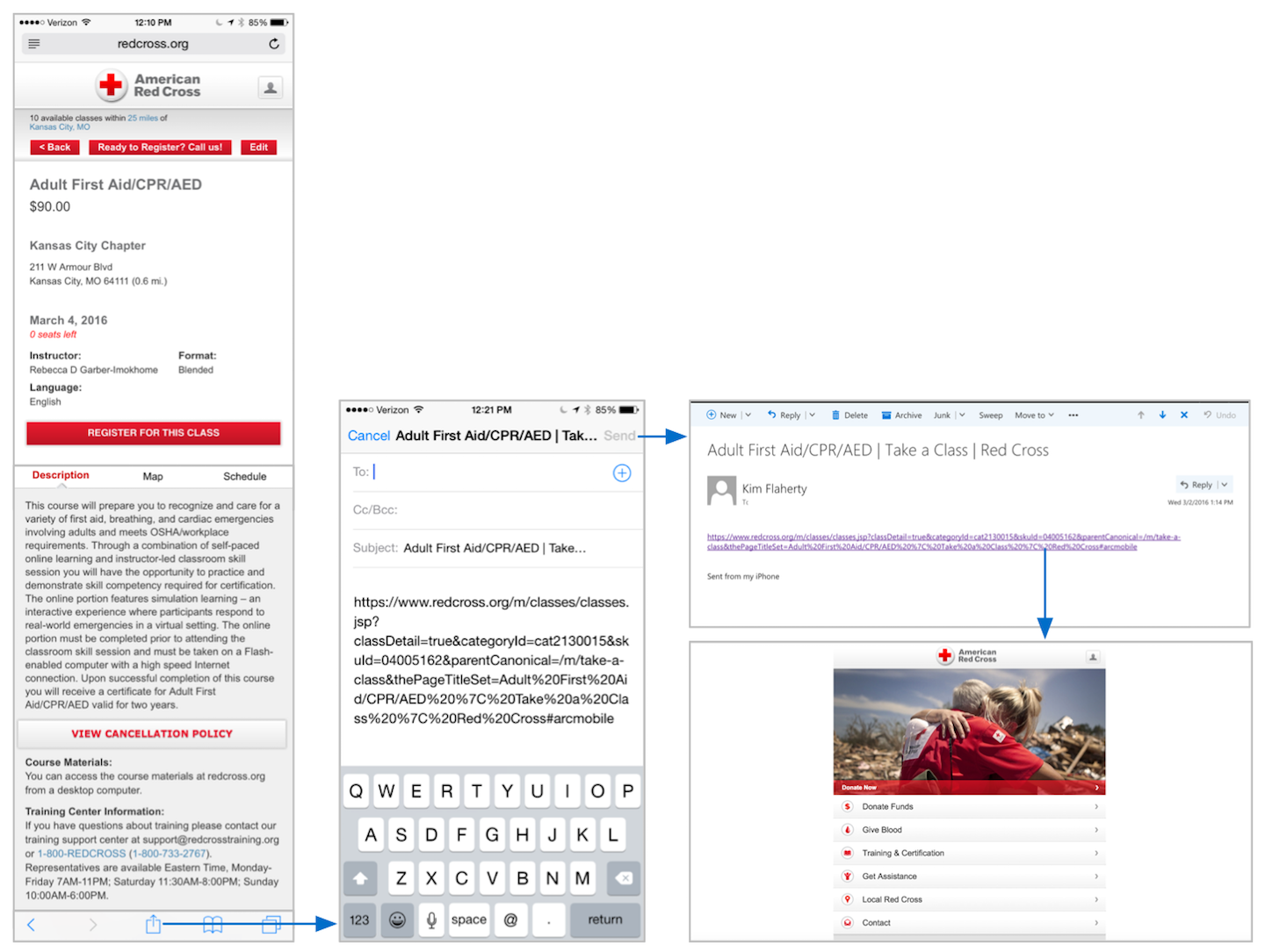
Customers are becoming increasingly sophisticated. They’ve already encountered excellent omnichannel experiences and they are beginning to expect this quality of experience from every organization they interact with. For this reason, organizations should be expanding the scope of their UX efforts to address the entire customer journey.
We discuss how to research the customer journey and improve the five components of the omnichannel user experience in our full-day course Omnichannel Journeys and Customer Experience .
Google 2012. The New Multi-screen World: Understanding Cross-platform Consumer Behavior . http://services.google.com/fh/files/misc/multiscreenworld_final.pdf
Related Courses
Customer-journey management.
Establish and operationalize journey-level experience design work across functional groups for continuous improvement
Journey Mapping to Understand Customer Needs
Capture and communicate UX insights across complex interactions
Omnichannel Journeys and Customer Experience
Create a usable and cohesive cross-channel experience by following guidelines to resolve common user pain points in a multi-channel landscape
Interaction
Related Topics
- Customer Journeys Customer Journeys
- Interaction Design
Learn More:
Please accept marketing cookies to view the embedded video. https://www.youtube.com/watch?v=mhmu0XUaTuM
What is Omnichannel UX?

The 3 Competencies of Journey Management
Kim Salazar · 5 min

Journey Management vs. Service Design
Kim Salazar · 4 min

Types of User Pain Points
Sarah Gibbons · 4 min
Related Articles:
Journey Mapping: 9 Frequently Asked Questions
Alita Joyce and Kate Kaplan · 7 min
How to Conduct Research for Customer Journey-Mapping
Kate Kaplan · 7 min
Seamlessness in the Omnichannel User Experience
Kim Salazar · 12 min
UX Mapping Methods: Study Guide
Kate Kaplan · 5 min
User Experience vs. Customer Experience: What’s The Difference?
User-Feedback Requests: 5 Guidelines
Anna Kaley · 10 min
Omnichannel Customer Experience: What is it and Why is it Important?

Click the play button above to listen to the blog.
Omnichannel customer experience is no longer an aspiration. It’s fast becoming a must have for any modern business.
And that’s because consumers don’t have just one way to interact with your brand any more. There’s a whole range of different channels available at their fingertips to reach out and learn more about your products and services: Google searches, social media, videos, and mobile apps to name but a few.
The reality is, if you want to cater to the modern consumer, you simply have to adopt an omnichannel approach.
So, let’s take a look at exactly what omnichannel customer experience is and how you can create and improve it for your company.
What is omnichannel customer experience?
Omnichannel customer experience is when a business advertises to, sells , and supports prospects and customers across multiple channels, treating each interaction or touchpoint (e.g. social media, SMS, chatbots ) as part of a single, frictionless whole.
An omnichannel approach enables customers to begin their experience with your brand in one channel and continue it on another channel seamlessly.
Getting there requires aligning your marketing, sales, and customer support strategies .
How does your CX strategy stack up?
Take the assessment to find out.

Why is an omnichannel customer experience important?
Omnichannel customer experience allows you to reach the modern consumer in a contextually relevant way at every point in their journey, regardless of the channel they access from.
This positively impacts the quality of customer interactions and creates greater customer engagement.
Benefits of omnichannel customer experience
Adopting an omnichannel approach has a number of benefits for both your customers and your business. Some of the most important are:
- More choice for customers. Modern customers expect a frictionless experience with your brand. Providing a variety of integrated channels allows them to interact with you however is most convenient for them while maintaining relevance.
- Improved customer retention and revenue. According to ClickZ, shoppers who use three or more channels to interact with brands have a purchasing frequency rate 250 percent higher than single-channel users. Harvard Business Review also reports that customers who used more channels spend an average of 4 percent more in physical stores and 10 percent more online.
- Cater to a broader audience. Certain consumers may favor certain ways of interacting with a brand. The greater the number of channels you have available, the greater the variety of potential customers you can attract.
- Collect better data. Omnichannel journeys provide a rich source of data. This data can be used to gain a deeper understanding of your customers and provide valuable insights into where customers encounter issues, allowing you to improve your offering.
Want to learn more about customer experience in an omnichannel world? Check out our on demand webinar: https://acquire.io/webinars-events/omnichannel-cx/
Omnichannel vs multichannel customer experience
Most businesses use multiple channels for sales and support. But having multiple channels doesn’t automatically equate to an omnichannel experience.
A multichannel business may have a website, social media account, brick and mortar store, and so on. However, every channel operates independently in its own silo. There might be one goal and strategy for Facebook and a different one for a company’s website.
An omnichannel approach also involves interacting with consumers through a variety of channels, but instead of having a unique strategy for each one, omnichannel focuses on creating an integrated experience in real time. All the channels are knitted tightly together.
How to build an omnichannel customer experience
Wondering how to get started with an omnichannel customer experience? Here are some tips you can use to integrate multiple channels.

Map the customer journey
It stands to reason that if you want to create a seamless omnichannel customer experience, you need to fully understand your customer journey: where buyers begin, and all the touchpoints that lead to purchase and beyond.
Mapping the customer journey also helps you identify where gaps and issues arise. Once these are out in the open, you can make tweaks to them and optimize the shopping experience across channels to increase sales and improve convenience.
Listen to feedback
Feedback from customers can give you the information you need to improve the customer journey and create a more cohesive customer experience.
So, collect reviews and ask your customers for their opinions. Use the opportunity to find out how customers want to interact with your brand. That way you can build an omnichannel approach catered specifically to your customers needs.
Sending out surveys can be done through email or mobile apps, or you could even generate a popup on your site that lets customers rate their experience and give comments and suggestions.
Use the right technology
Seamless user experiences are impossible without the right technology . Support agents should be able to contact customers through live chat , video and voice calls, mobile apps, and more depending on their preferred method of communication.
But to create a true omnichannel customer experience, you need to bring all of this data together in a single customer view . That way, no matter what the channel a customer accesses from, your team has all their information available to pick up seamlessly from where they left off.
Websites should also use technology to offer personalized experiences in the form of product recommendations to encourage customers to make repeat purchases.
Identify the stakeholders
Implementing an omnichannel experience doesn’t happen overnight. You’ll need to work closely with multiple departments, like your sales, marketing, customer service, and product teams. At the end of the day, a cohesive customer journey relies on a cohesive internal approach to get it done.
If it all seems too overwhelming, a good tip is to start small and then modify the customer journey across further platforms as you go. You can align experiences in your main channels first, then expand these experiences across multiple supporting platforms.
How to improve the omnichannel customer experience
Even with an omnichannel customer experience strategy in place, there’s still room to build on this and improve over time. Here are some ways you can go about it.
Better understand your customers
Even a well-planned omnichannel strategy will fail if it’s not directed at the right customer. To make sure that doesn’t happen, you must have an up-to-date understanding of consumer behavior .
Use big data and surveys to gain insights into customer behavior, what they expect from your brand, and how this changes over time. Making business intelligence and analytics software part of your research process can provide you with valuable insights into who your ideal market is and what they need from you.
Follow the leaders
There are plenty of success stories to follow in the omnichannel world. While copying the steps taken by brands like Starbucks, Amazon, Disney, or Bank of America won’t likely catapult your business to the same level of success, paying attention to where they’re putting their resources can help you find your way. There are some examples of companies getting omnichannel right later in the post to give you some ideas.
Get the support you need
Maintaining a successful omnichannel customer experience isn’t a one-employee show. It takes an entire team to make sure things are on track. You’ll need managers, researchers, developers, freelancers, and, most importantly, support. If there is doubt surrounding the effectiveness of an omnichannel program, address it straight away before it becomes a problem. And as new employees join the business, make sure they understand the emphasis being placed on omnichannel at the organization.
Develop your mobile capabilities
Not all industries have mastered mobile-friendly platforms yet. And surprisingly, there are plenty of ecommerce businesses whose websites could use a facelift and a few upgrades. Not only does this create doubt in a client’s mind about your brand, but it hurts your SEO ranking, which affects how prominently your business’s website appears on search engine results pages. Consider using a mobile-friendly analyzer to see how your website is stacking up.
Conduct a content analysis
The appearance of your site, app, support articles, and social media should all be consistent. But no matter how great they look, they won’t get you far without great content. Some businesses tend to focus on writing keyword-heavy blogs and website pages, hoping to rank high in search engines. Or, their product writing is clunky or unclear. Conduct a content analysis of your website and other platforms to make sure you’re catering to your readers and users, no matter where they see you.
Improve your response times
What’s your average response time for social media inquiries? It may surprise you to know that close to half of consumers expect a social media response time of fewer than 60 minutes . And if you’re not responding to customer messages at all you’re doing your brand a great disservice.
When it comes to your website, make sure you’re taking every opportunity to engage and address visitors. You can use communication channels like live chat software or chatbots to make every visitor feel heard and appreciated.
Take your omnichannel approach offline
There are plenty of offline omnichannel opportunities. Even though most client interactions are digital, there are still analog channels that might make sense for your industry and business. Radio, magazine ads, direct mail, event sponsorships, and branded merchandise are all examples of offline channels you can explore and integrate into your strategy.
Rethink in-store consumer experiences
Today’s consumers are often uncomfortable in brick-and-mortar stores compared to browsing online at home. Research shows that 87 percent of consumers research products online before purchasing. Help consumers transition easily from online to offline. This could be something as simple as providing live inventory for brick-and-mortar locations so customers can easily decide whether to make a trip to the store. And if it’s not in stock, your website could recommend other products that might fit the bill instead.
Choose your channels wisely
One mistake many companies make with omnichannel is thinking that they must be on every platform. Omnichannel marketing isn’t about being everywhere, but about being present, available, and consistent in the places your target consumers are and creating a positive user experience .
Learn where your customers are spending their time — whether it’s Pinterest, Instagram, Facebook, or LinkedIn. Don’t forget about offline opportunities as well. Optimize your content for only the offline and digital channels that you need in your marketing approach. There’s no point overstretching and putting your message where it won’t be heard.
Keep it consistent
It may seem obvious, but whenever you doubt the direction your omnichannel strategy is going, remind yourself that consistency is key to developing loyal audiences and stronger customer relationships. From your website to your app, from your social media pages to your email, from your employee’s shirt logo to your receipts, strive for consistent branding throughout.
Familiarity breeds trust, trust builds repeat customers, and the easiest way to grow revenue is through repeat business .
Examples of omnichannel customer experience
Need some inspiration? Let’s take a look at a few top brands that have successfully integrated different digital channels.
Starbucks offers a premium user experience.
Customers are rewarded with a free drink after they sign up for a customer loyalty program . When they make a purchase through the Starbucks card, they can reload through the app, website, in-store or by a mobile device — and their total rewards points are updated across all platforms.

Coffee enthusiasts can also make mobile orders, gift digital Starbucks cards, find stores near their location and tip their baristas without going out of their way.
Neiman Marcus
Neiman Marcus is a fashion brand that uses technological innovation to connect online and offline platforms.
The Neiman Marcus app connects shoppers to sales associates through text messages, calls, emails, or FaceTime. Shoppers can also use it to check their points and view upcoming events or promotions.

The website delivers personalized product recommendations and remembers size preferences, too. One major differentiator between Neiman Marcus and other online stores? You can use geolocation to find items stocked in nearby stores. New arrivals that suit customers’ preferences are sent through email and direct mail.

“Memory Mirror" is another distinct omnichannel feature. Have you ever wondered how your outfit looked from behind or from the side? The Memory Mirror can record and capture your try-ons from every angle. Hesitant shoppers who need a second opinion can also seek advice on their looks by sharing the outfits with their network.

The Dufresne Group
The Dufresne Group used technology to take services online while keeping the kind of in-person experience so pivotal for selling in an industry like furniture.
Previously, furniture repair required two on-site visits: one for assessment and the other for the repair work. Video chat allowed the team to reduce on-site inspections, providing the same high quality service instead remotely, increasing convenience.

In the face of the pandemic, when traditional routes to selling were no longer available, video chat also enabled Dufresne to conduct product walk-throughs, bringing the showroom experience to the comfort of customers’ homes.
Adding further channels into the mix helped ensure that customers are engaged 24/7 with chatbots capturing contact information if the team is out of office for the Dufresne team to pick up on later.
Extra channels working in conjunction helped the business find stability during the turbulence of the pandemic as well as creating a cohesive omnichannel approach for the long term.
Gain a better understanding of how omnichannel technology can help you with our on demand webinar: https://acquire.io/webinars-events/next-level-omnichannel/
All bases covered with omnichannel
If you want to improve brand recognition, create loyal customers , and boost revenue, prioritize an omnichannel strategy.
It may seem overwhelming at first, but a little progress each day will add up over time. And as consumers notice the differences, you’ll see firsthand what the omnichannel experience can do.
How do you plan to leverage omnichannel customer experience?
Let us know in the comments below.
Related Articles

LeadSquared Integration is
Optimize your call operations and enhance lead management with KrispCall and LeadSquared integration.
- Blog / Customer Support & Service , Guides
What Is Omnichannel Customer Experience? A Complete Guide
- 13 minute read
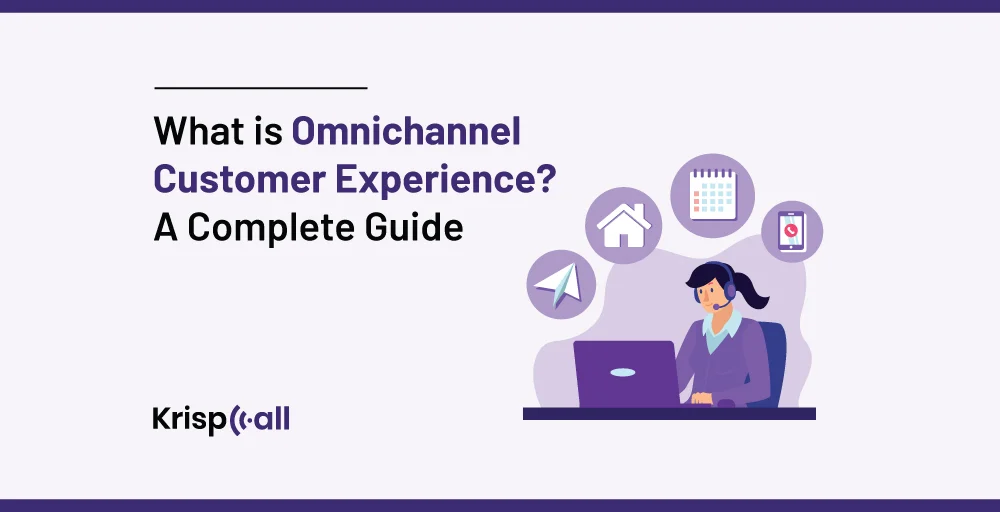
From online sites 💻 to shopping malls 🏬, consumers are everywhere. How do companies ensure that interactions with them are smooth, personalized, and consistent across all these platforms?
Well, the business uses an omnichannel customer experience strategy to deliver a seamless, integrated, and personalized experience across all channels.
A report shows that 76% of consumers prefer brands that personalized interactions. These figures are easily attainable if you implement an effective omnichannel approach.
In this blog post, we’ll explore the omnichannel customer experience, why it’s essential for businesses, omnichannel vs. multichannel experience, its benefits, ways to create it, some major business examples, and ways to improve it.
🔑 KEY HIGHLIGHTS
- An omnichannel customer experience is a seamless and integrated approach to customer interactions across various channels and touchpoints.
- It is essential as it provides consistent and personalized interaction across all channels, enhancing customer satisfaction.
- An omnichannel experience integrates all channels to provide a unified customer journey, while a multichannel experience uses multiple platforms independently without connection between them.
- Increased client enhancement, personalized experiences, and actionable insights are some of the benefits of omnichannel customer experience.
Table of Contents
What Is Omnichannel Customer Experience?
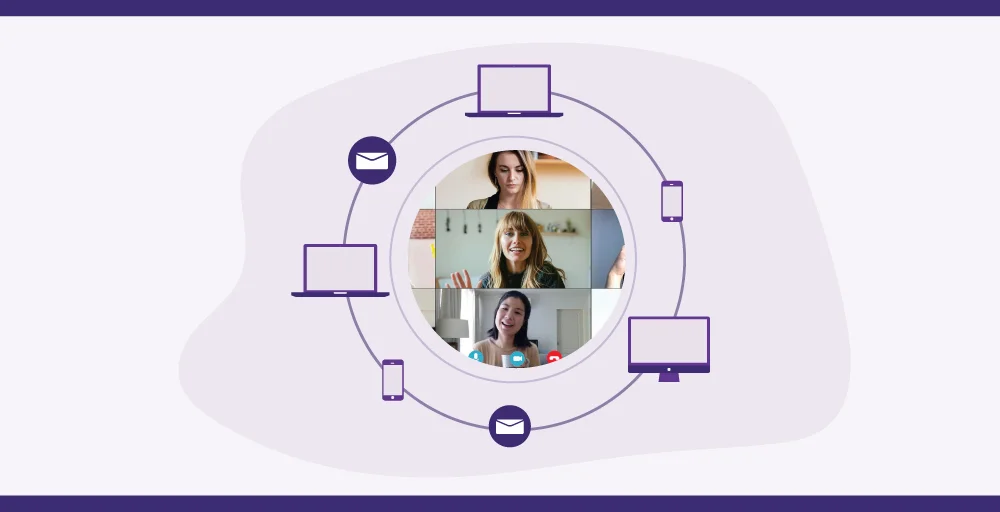
An omnichannel customer experience is a unified approach that aims to create a consistent experience or interaction between a customer and an organization via different sales channels . It ensures that the customer gets a consistent and individualized interaction experience in various channels, including websites, mobile applications, social media, mail, phones, and stores.
The omnichannel customer experience strategy provides complete and consistent contact with the brand across many channels, which can increase satisfaction, engagement, and, ultimately, customer loyalty and value.
This type of service delivery using multiple channels will be beneficial in the long run, as it will fully satisfy the clients while cutting operational costs and personalizing the service.
Why Is Omnichannel Customer Experience Essential?
As digital communication channels have rapidly grown, organizations are increasingly depending on a unified customer experience. Offering a similar, consistent customer experience has been a must across all platforms. Fragmented experiences can easily confuse customers, decreasing their desire to interact with brands more deeply or return frequently.
Ensuring uniformity on various platforms through an omnichannel customer experience not only increases consumer trust but also improves interaction levels . When the transactions are smooth, clients are most likely to remain faithful, and customer retention rates and profits are boosted.
Omnichannel Vs. Multichannel Experience
Omnichannel and multichannel both could integrate various touchpoints, but they depend on how well they provide cohesion and continuity across various contacts. In the case of the multichannel approach , every channel operates independently and has disoriented systems and data, and thus, consumers have no consistent experiences with the company.
On the other hand, an omnichannel approach aims to create a clear mapping that reflects a coherent and holistic image of the consumer experience, where the paths contribute to the personal customer journey. Loyalty is achieved because consumers are able to jump to different platforms without losing or needing to repeat data.
Benefits Of The Omnichannel Customer Experience
Let’s explore some of the benefits of implementing an omnichannel customer experience for both customers and businesses:
1. Increased Client Enhancement
Omni-channel customer services enable a company to develop diverse strategies to reach out to a client at any one time using preferred platforms. The customers should not complicate themselves by looking for previous conversations with the company. An individual can engage with an enterprise through any physical or virtual means that they choose for omnichannel adoption and get a prompt reply from the customer service personnel.
2. High Customer Retention And Loyalty
Omnichannel experiences are beneficial for channeling an overall view of client interaction and versatility over the multiple interfaces available for them to interact. The collected information is crucial for defining market segments and providing accurately customized offers that match the customers’ needs, preferences, and behavioral patterns, leading to improved customer loyalty.
3. Personalized Experiences
Omnichannel customization technology improves customer experience and maintains brand loyalty by understanding customer behavior and personalizing their experience. This approach avoids treating everyone as a single unit, making them feel valued and known . It deepens the brand-audience relationship while promoting customer engagement .
4. Consistent Customer Experience Across Any Channel
An omnichannel strategy allows incorporating all channels in which consumers anticipate convenience, and quality service across different mediums to engage with their brands. This makes it easy for brands to optimize customer journeys , thus ensuring a seamless experience without hitches and bumps across any platform.
5. Actionable Insights
Data on your client’s chat history and all social media activities will enable you to be on top of customer issues. This will also give your sales and marketing teams rich data, increasing their campaigns’ efficiency . Also, by understanding your customers’ emails and survey results, you can monitor the customers’ issues like never before and develop decisions based on those insights or run more personalized marketing campaigns .
How Do You Create An Omnichannel Customer Experience?
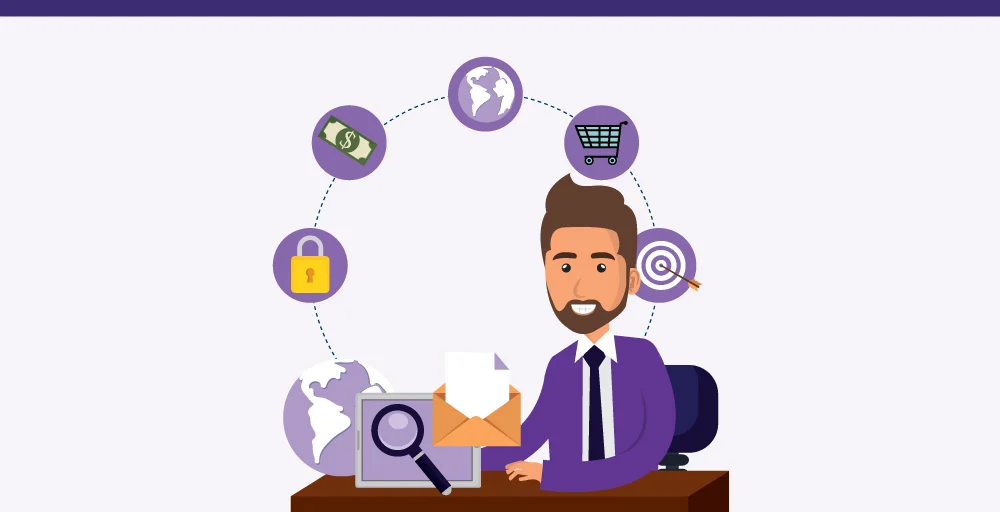
Some of the ways to create a satisfying omnichannel experience for the customer include:
1. Map Your Customer Journey
For businesses to create an omnichannel experience, they must understand the process – customers go through from the first time they reach out to them until after they have received some goods/services.
The customer journey map identifies possible areas of discontent, opportunities, and pivotal experiences during interactions across platforms. This enables enterprises to be there at all critical moments, thus ensuring that clients enjoy an uninterrupted encounter.
2. Determine Your Customer Touchpoints
One of the critical stages vital for developing an omnichannel strategy is pinpointing your consumer touchpoints . Every way through which your customers get in touch with your company should be identified.
This may include phone calls, emails, social media interactions, store visits, or usage of mobile applications. This way, you can ensure that such touchpoints create a consistent link between all contact points for clients, making it easy for them to communicate or purchase products.
3. Connect the Gaps Between Channels
One of the major factors in a smooth omnichannel customer experience is the ability to delicately connect different channels so that users can easily switch between media .
You must ensure that customers can effortlessly switch from one mode of interaction to another, for example , initiating a purchase on your website and concluding it in the store or phoning your customer care unit and contacting them through email.
4. Focus on Personalized Services
Businesses must use information collected from multiple platforms to provide personalized experiences to their consumers.
For instance, you may offer them a discount on products you are selling, send them a text message or email, or even provide suggestions on goods and services based on their previous dealings with you. In this respect, you may be able to foster better relationships with customers, enhance their happiness levels, and compel them to use your services whenever they wish.
5. Explore Platforms Where Your Audience Exists
You must take measures to discover online or offline platforms such as blogs, forums, social media networks , and physical stores where your target audience engages more often or is already present.
You must ensure that your firm is present on the same channels as its customers and can thus be reached easily by them. Thus, you can grow your customer base, build brand identity fast, and have consistent interactions across all points of contact.
6. Using Right Technologies
Managing client data across various channels may be difficult, especially when a distinct customer base is involved. With the right technology, you can automate tasks, easily share customer information, and provide a seamless experience through all your channels.
Consider combining data analytics, marketing automation tools, omnichannel communication platforms , and customer relationship management systems to provide similar experiences across platforms.
7. Collect and Protect Customer Data
You should frequently evaluate and modify your omnichannel strategy. This means watching how customers interact with you across different platforms and improving on that.
You may need to restructure your website , add more communication platforms, or change how you do marketing based on client feedback. By doing so, you can ensure that your omnichannel approach remains prosperous and appropriate to customers’ changing demands and requirements.
Omnichannel Customer Experience Examples Of Business
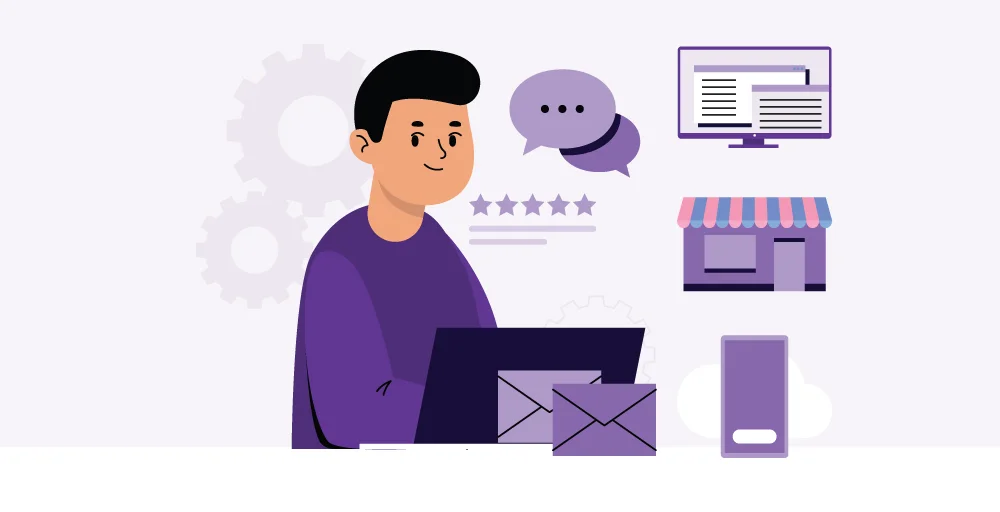
Learning how innovative companies have designed their omnichannel journeys is an awesome way to know what can be achieved using such an approach.
Some of the businesses that have excelled omnichannel approach and can be considered as omnichannel customer experience examples are:
Nordstrom offers an impeccable shopping experience by using its mobile app, e-commerce website, and physical store locations. Customers can pick up items in the store, buy anything online, and return their purchases at any retailer owned by the same company.
Its sales reps are provided with extensive information on clients’ buying patterns, history records, and preferences, enabling them to provide personalized recommendations about what best suits each customer.
Nordstrom’s commitment to delivering a seamless omnichannel experience improves customer satisfaction, loyalty, and revenue. It has merged the gap between digital and physical interaction with customers, making it easier for them to reach them using any channel they choose.
Starbucks has carefully designed its omnichannel experience with the aim of nurturing customer relationships and encouraging repeat business. A popular way for people to order coffee or pastries these days is through Starbucks’ mobile application. They can simply place their order, pay, and choose where they want to pick up.
With the app’s close integration with the in-store experience, users can easily pick up their pre-ordered goods and leave.
Starbucks’ advanced omnichannel strategy has enhanced consumer engagement, loyalty improvement, and revenue growth. It has also partnered with delivery services like Uber Eats to deliver food and drinks directly to consumers’ doorsteps, further enhancing its omnichannel capabilities.
The Sephora e-commerce website, mobile app, and physical stores are all seamlessly connected in an omnichannel setup. Therefore, customers can locate their favorite items, purchase from Sephora’s entire product range online , and receive personalized recommendations based on browsing and buying history.
It employs augmented reality technology , which allows customers to try out products digitally and make appointments for sessions in physical shops.
Sephora’s continued dominance in the contested beauty retail industry is due to its commitment to omnichannel excellence. It has developed a loyal customer base through a common, personalized, effortless consumer experience across all touchpoints.
Sephora sales staff are also well-equipped with consumer information and aids that can assist them in providing personal service across all platforms.
How To Improve Omnichannel Customer Experience?

Here are different ways to improve or raise your omnichannel approach to provide customers with a remarkable shopping experience.
1. Ensure Consistency Across Channels : In order to provide an excellent omnichannel experience, businesses need to maintain a uniform feel across different platforms through which customers may interact. This means sticking to the same branding, message, policies, and customer data regardless of whether someone walks into your shop, calls for help on a phone line, or goes online to your site.
2. Map the Customer Journey : The main aim of the omnichannel approach is to improve the customer’s service experience . To ensure that you provide the best possible experience to your customers, you need to understand their entire journey. Knowing how your customers can trace you is crucial as it makes it easy to know individuals’ decisions before, during, and after buying. Thus, you can change consumer preferences over time, making them want to buy from your business.
3. Personalize all channels : Creating personalized brand content for each different individual boosts income and improves customer loyalty . This means adjusting every aspect of the purchasing journey to meet individual requirements, as well as serving up ads based on customer’s prior search activities. All client data from in-store to online platforms must be combined to provide a customized omnichannel experience.
4. Leverage Digital Capabilities : You can improve the customer experience in all your sales channels using digital technologies that are highly prevalent in today’s world. For example, create a mobile app that enables users to buy, access support, and manage their accounts in one place. Adopting the latest digital technologies will help customers interact with your business easily based on their preferences and choices.
5. Focus on customer support : Provide your customers with advice to help them make better decisions and create a good image of your company whenever possible. This may take the form of product guidance , replies to inquiries , or even post-sale assistance . Outstanding customer service must be provided through all your channels to enrich the overall omnichannel experience for end-users.
Implementing an effective omnichannel customer experience is the key to technologically enhanced customer interaction where customers can communicate with the business efficiently.
Businesses must deliver a consistent and tailored cross-channel experience to maintain consistent customer interaction. Adopting omnichannel best practices will be critical for any business to be successful in today’s economy, as customer expectations continue to vary. By seamlessly blending online and physical means, businesses could increase customer life value and outdo their competitors.
What is Omnichannel Marketing?
Omnichannel marketing is a strategy that provides customers with a seamless and integrated shopping experience across multiple channels, including online or in-store . It ensures that all communication and interactions with the customer are consistent and unified, regardless of the platform or device they use.
What is an Omnichannel Experience Design?
Omnichannel experience design is the process of creating a cohesive and smooth customer experience across all touchpoints and channels, ensuring that interactions are integrated and consistent regardless of where or how the customer engages with a brand.
What Makes a Good Customer Experience?
A good customer experience is characterized by ease of use, personalization, efficiency, consistency, and responsiveness , resulting in customer satisfaction and loyalty.
What is Omnichannel Commerce?
Omnichannel commerce is a retail strategy that integrates various sales channels, both online and offline, to provide a seamless shopping experience.
What are the Challenges that May Occur while Adopting an Omnichannel Customer Experience?
Integrating various systems and data, maintaining consistent messaging across channels, managing inventory in real-time, ensuring data privacy and security, and coordinating cross-channel marketing efforts may be challenging while adopting an omnichannel customer experience.
Follow our newsletter !

Dinesh Silwal
Dinesh Silwal is the Co-Founder and Co-CEO of KrispCall. For the past few years, he has been advancing and innovating in the cloud telephony industry, using AI to enhance and improve telephony solutions, and driving KrispCall to the forefront of the field.
Related Blogs
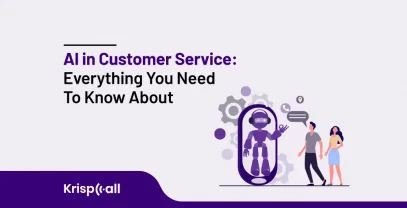
AI in Customer Service: Everything You Need To Know About
Have you ever wondered how some businesses are so good at customer service? 🤔 The answer is simple–Artificial Intelligence (AI).…

Microsoft Teams Not Working? Problems and Solutions
Microsoft Teams is a well-known communication software, but it is not immune to performance problems. From login problems to audio…
- 17 minute read
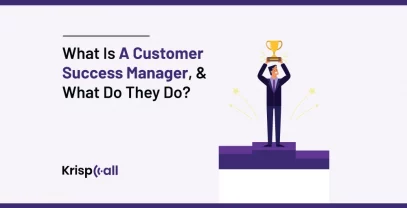
What is a customer success manager, and what do they do?
Ever wondered🤨 why some businesses effortlessly retain loyal customers while others struggle to keep them engaged? The secret lies in…
- 14 minute read

Omnichannel customer service is assistance and advice for customers across a seamless and integrated network of devices and touchpoints. Businesses with robust omnichannel customer service can maintain consistently great experiences for their customers regardless of the communication channel.
The growth of digital channels and new communication technologies has enabled businesses to adopt an omnichannel approach to customer support. In doing so, they can manage interactions across multiple channels such as call centers, webchats, SMS, messaging, email and social media. For example, a customer support conversation might begin on Twitter, then continue with text messages and end with a phone call—all in a seamless, connected experience. Customers don't have to stop and explain their problem at each channel interaction.
Customer expectations have also changed along with technological advancements. In recent research conducted by Forrester, by 2022 digital touchpoints will influence more than 57% of US retail sales. Today, customers expect efficient in-store interactions, seamless experiences regardless of channel, and rapid notification of orders and pick-up availability.
Additionally, the COVID-19 pandemic has accelerated the shift to digital across industries. B2B and B2C business alike have been forced to update siloed sales approaches and complex buying dynamics to provide fluid customer support and experience. 1
Learn the building blocks and best practices to help your teams accelerate responsible AI.
Read the guide for data leaders
A good customer experience is at the core of high-quality customer service. Ensuring customers can access their preferred channel and receive a consistent buying experience is at the heart of omnichannel customer support.
Consider the benefits that result:
- Greater customer loyalty : Omnichannel customer experience creates speed, convenience, transparency and trust. Seamless interactions show customers that an organization is buyer-first and has transformed outdated sales methods for a smoother overall process.
- Providing preferred purchasing options : The omnichannel approach creates more opportunities to meet a growing need: Delivering self-service purchase options to customers 1 . The ability to do this frees up sales and customer engagement professionals to fill the role as consultative partners and give better service to more highly considered purchases.
- Accelerating revenue growth : Omnichannel customer experience enables buyers to access potential purchases when they need them without going through traditional sales avenues. Removing the barriers to purchase and providing transparent and connected digital experiences increases revenue growth and customer satisfaction 1 .
- Innovating and activating new channels more quickly : Businesses that currently have established omnichannel experiences will have a competitive advantage in designing and activating new channels. Established omnichannels can act like a framework for introducing new channels. When customer experience and interactions are already seamless, it is easier to adopt additional channels without starting from scratch.
When it comes to customer service, customers expect a single brand experience through all touchpoints. The omnichannel approach gives businesses additional benefits for customer service, including:
- Streamlining customer service using customer data and digital tools : According to a recent Forrester report, 38% of US and UK online adult buyers are motivated to use a retailer they have purchased from before if it offers good customer service 2 . An example of a customer support tool that uses data is intelligent routing. This service collects customer data that is used to route customers to the call center agent who is best equipped to help. The use of data and these types of digital tools help agents better understand the customer journey, increase agent productivity and provide personalized experiences and solutions.
- Customized experiences : More retail and wholesale firms are investing in personalization technology such as machine learning to leverage insights on customer preferences. For example, machine learning can create unique web page layouts based on customer data such as location and purchase history. This type of customization is proven to yield increased revenue 2 .
- Customer data and connected products create new value : Customer service extends beyond meeting your customers where they are in the buyers’ journey. It now includes anticipating their needs. Connected devices and buyer data enable businesses to develop services to meet the needs of their customers. Understanding your customers and meeting their needs also increases customer retention.
Successful omnichannel customer service is essential to buyer satisfaction and retention. Businesses that don't ensure continuity across digital and in-person touchpoints risk losing customers to competitors that do 2 .
According to “The Omnichannel Maturity Assessment” by Forrester, three dimensions are used to measure your omnichannel system's success:
- Digital customer experience (DCX): Because customer interactions occur in stores and digitally via multiple devices, businesses should take time to assess customer experience across all exchanges. Specifically, digital customer experience is increasingly important. Recent research found that one-third of US adults are less likely to go to a store if its inventory is unavailable online. Additionally, 48% confirm that they seek information about product availability before purchasing offline 3 . Convenience and shopping experience are consumer drivers. While managing inventory is a challenge, businesses should investigate technology and tools that engage customers at the digital level before purchasing occurs.
- Digital operational experience (DOX): Influenced by customer demand and the COVID-19 pandemic, 69% of retailers reported the implementation of BOPIS (buy online, pick up in-store) 3 . The logistics of BOPIS, if not orchestrated correctly, can result in poor customer service and customer loss. Assessing DOX should focus on managing and optimizing people and processes, including training staff to execute omnichannel programs properly.
- Omnichannel customer engagement: Research conducted by Forrester states that 52% of US online adults prefer to use their device to look up product information when shopping in-store 3 . Therefore, businesses need to assess how they engage customers in a dynamic channel environment and provide technology or apps that offer context and personalization to in-person shopping experiences.
Assessing your omnichannel system is necessary to establish what is working and where improvement is required. Creating a strategy will help businesses plan the next steps in omnichannel customer service.
When considering strategy, it's important to understand customer expectations and behavior. Customers not only want efficiency and convenience; they also want control of the entire engagement. In addition, customer behavior has changed alongside technology. Many customers begin their shopping experience digitally and through multiple channels and devices.
Businesses must contend with changes required to meet customer demands. A lot of these changes include managing inventory, training employees and transforming from customer-aware to customer-led.
Strategy for improved omnichannel customer service can include the following tactics:
- Embrace the entire customer journey : Fully capable omnichannel operations span the lifecycle of a customer and extend beyond fulfillment, acquisition and engagement, inventory and order management, and customer service. Businesses that embrace the whole customer journey can deliver cost savings, operational efficiencies and improved customer relationships.
- Offer a seamless omnichannel experience : Research by Gartner found that by the end of 2021, it is likely that B2B sales will become digital-first 4 . Becoming digital-first does not mean neglecting non-digital channels. Support agents, sales teams and other operational branches should not exist in silos, for example. Instead, the strategy should execute a channel-less experience where the website, direct sales, and the contact center work together to create a cohesive customer service experience. These connections form a stable knowledge base and actionable metrics for customer service agents to provide better service.
- Leverage new technologies : Customers are willing to give up personal data in exchange for better experiences. That data is valuable when it comes to providing customer service and an improved omnichannel experience. Businesses should embrace technology that leverages customer data to create customized experiences and services. In addition, existing technologies enhance customer service with automation, AI and chatbots. For example, customers can receive help online at night via bots when your customer service employees aren't available.
B2B and B2C businesses in a variety of industries use omnichannel customer service. If you recently purchased an item via BOPIS, then you engaged in that organization's omnichannel operation. Familiar retailers such as Target, Amazon or Home Depot employ powerful omnichannel systems that include apps on your smartphone.
Other industries that utilize omnichannel strategies include:
- Banks or other financial services, which use the omnichannel approach for customers who require multichannel access while keeping employee workflow efficient and effective.
- Businesses that need to provide around-the-clock support for e-commerce customers across multiple channels use omnichannel customer service.
Multichannel is a system for customer service and experience, and it consists of several communication channels. Two main factors differentiate multichannel and omnichannel:
- Synchronization: A multichannel system might include a website, social media, and a mobile app, but those channels operate independently and are not synchronized. An omnichannel approach might have the same channels and more, but all of them are connected and work together to create one seamless experience for customers.
- Platforms and devices: Multichannel operations are typically limited to the device or platform defined in the channel. On the other hand, omnichannel operations are connected across different channels, devices, and platforms 5 .
Multichannel isn't inherently wrong because it does use various channels for businesses to connect with customers on their buying journey. However, research conducted illustrates customers will continue to demand a cohesive user experience (that omnichannel operations can offer).
Omnichannel operations can create challenges when used by retailers with highly complex products, making every avenue more difficult, from sales to customer service. Complex products typically require well-trained and knowledgeable sales reps to assist customers. However, using rich media such as video, 3D animation and augmented reality creates a way for businesses to enable customers to self-serve and increase engagement 1 .
Traditional retail sales and customer service methods are also a challenge when converting to the digital processes of omnichannel operations. The transition of the B2B world to digital systems inherently creates price transparency, and customers can check for the best prices and offers online while shopping in-store. If businesses don't maintain information consistently, they risk losing customers.
There are also organizational challenges related to inventory management and employee training, which also impact customer service. Organizations that attempt omnichannel services but keep their inventory siloed in-store and online will run into supply issues. Instead, they should take an enterprise-wide approach to inventory and order management.
Additionally, businesses struggle to train their customer-facing employees when implementing omnichannel strategies. While omnichannel customer service is beneficial, some businesses lose sight of customer-centric employees value in the customer journey. Because omnichannel allows for more customer self-service, there is the opportunity for sales reps and employees to provide greater customer experiences for those customers or purchases requiring more attention. Training those employees is an important aspect of omnichannel customer service that is often overlooked.
Deliver consistent and intelligent customer care across all channels and touchpoints with conversational AI.
Unlock efficiency and supercharge your agents with generative AI.
Learn about conversational AI and how it helps organizations engage customers and deliver services.
Natural language processing strives to build machines that understand and respond to text or voice data—and respond with text or speech of their own—in much the same way humans do.
Learn how IBM watsonx Assistant can cut costs, drive revenue, and free precious resources for higher-value work—all while improving customer NPS.
IBM watsonx Assistant helps organizations provide better customer experiences with an AI chatbot that understands the language of the business, connects to existing customer care systems, and deploys anywhere with enterprise security and scalability. watsonx Assistant automates repetitive tasks and uses machine learning to resolve customer support issues quickly and efficiently.
- Cicman, J., Bonde, A., Wilson, K., Bakalar, M. (2021). Make Omnichannel Real In B2B Commerce . Forrester. (link resides outside ibm.com)
- Beeson, M., Swerdlow, F., Witcher, B., Lawrie, G., Murgia, N. (2020) Retailers Are Starting To Reap The Rewards Of Omnichannel Commerce . Forrester.
- Witcher, B., Swerdlow, F., Murgia, N. (2020). The Omnichannel Maturity Assessment . Forrester.
- Lewis, M. (2021). Increase Profits and Delight Buyers by Becoming a Digital-First, Omnichannel B2B Seller . Forrester.
- Fontanella, Clint. “ What Is Omni-Channel? 20 Top Omni-Channel Experience Examples .” HubSpot Blog , 2 Sept. 2021 (link resides outside ibm.com)
10 Customer Experience Best Practices to Improve Customer Satisfaction in SaaS

To successfully compete in saturated SaaS niches, having a robust product isn’t enough.
You must deliver an excellent customer experience throughout the entire customer journey to stand a chance, especially against established players.
In the article, you will learn how to build your customer experience strategy. We also share 10 customer experience best practices that will help your product exceed customer expectations and retain them long-term.
- Customer experience (CX) refers to all customer interactions with a brand, covering every touchpoint from initial discovery to renewal.
- Excellent customer experience can differentiate you from competitors and enhance customer satisfaction , loyalty, retention, and advocacy.
- Start building your customer experience strategy by creating user personas and customer journey maps for each user persona. Develop in-app experiences, like walkthroughs or banners, to smoothen the journey and help users achieve their goals.
- Monitor key CX metrics like CES, CSAT, or NPS to measure the success of the strategy, and iterate on the insights .
- 10 customer experience best practices:
- Exceed customer expectations by personalizing marketing assets, onboarding , and UI for different user personas.
- A/B test different experiences to make data-driven decisions on what resonates best with customers.
- Continuously educate customers on the industry and product through resources like webinars to help them maximize value.
- Offer self-service channels like chatbots and resource centers for higher customer satisfaction.
- Collect customer feedback regularly through in-app surveys to track sentiment and identify unmet needs.
- Build an omnichannel customer experience strategy that considers customer needs and preferences across multiple touchpoints.
- Provide proactive customer service by anticipating and addressing issues before they escalate.
- Increase customer lifetime value with continuous onboarding that introduces advanced features and drives expansion .
- Build lasting customer relationships through product communities , loyalty programs, and referral incentives.
- Measure customer effort score (CES) after key interactions to gauge the ease of completing tasks within the product.
- Want to learn how to implement the best practices with Userpilot? Book the demo!

Try Userpilot and Take Your Customer Experience to the Next Level
- 14 Day Trial
- No Credit Card Required

What is customer experience and why is it important?
Customer experience (CX) refers in SaaS to the overall journey and all customer interactions with your brand.
It covers every touchpoint, from the initial discovery and onboarding to usage, support, and renewal , and reflects how customers perceive the value of the product and service they receive.
As mentioned, outstanding customer experience helps you differentiate your product from competitors.
That’s because it makes it easier for customers to achieve their goals and makes their interactions with the product free of unnecessary friction .
This enhances customer satisfaction , which is linked to greater customer loyalty and retention . And loyal customers are more likely to champion your product in their networks, boosting customer acquisition and reducing CAC .
Good customer experience also saves you money in support costs. That’s because products with solid CX tend to be intuitive to use and have flat learning curves.
Overall, customer experience has an impact on your business profitability.
How to build a successful customer experience strategy?
Creating a customer experience involves 6 basic steps. Here’s a quick overview of what they involve.
Know your audience
To offer your customers a positive experience , you need to know who they are: their goals, motivations, pain points , and the contexts in which they work.
These are best communicated as user personas, half-imaginary characters representing typical customers.
When creating user personas , collect information about their:
- Role/position.
- Company details.
- Key stakeholders they work with.
- Jobs to be done .
- Current challenges.
- Gains of using your product.
Collect the information from multiple sources. Use market research and supplement data from product analytics and customer feedback .

Map out a customer journey map for each customer persona
Next map out the customer journeys for your user personas.
Why do you need multiple maps?
As their goals vary, user personas use the product differently to achieve their goals . This means different interactions at different touchpoints , all of which need to be optimized for an excellent experience.
A customer journey template will guide you through the process and help you identify the necessary information about:
- Customer journey stages.
- Objectives and needs at each stage.
- Relevant touchpoints.
- Customer emotions .

Create different in-app experiences for users
Using insights about user personas, create in-app experiences to smoothen the customer journey and help them achieve their goals.
Here are some examples:
- Interactive walkthroughs helping users discover the core product features during the activation/adoption stages.
- Banners reminding them about their credit card expiry prevent involuntary churn at the retention stage.
- Pop-up modals encouraging them to refer a friend to the product or leave a review at the advocacy stage.
Invest in customer experience management software
Customer experience management software enables organizations to track, manage, and optimize user interactions with their products.
It allows you to collect data from multiple sources, like your CRM or event tracking tools , map customer journeys, analyze user behavior , collect feedback, and use the insights to recommend personalized content and support.
You will normally need more than one app in your stack.
For example, a CDP like Segment, a CRM like Hubspot, a product experience tool like Hotjar, and a digital adoption platform like Userpilot.
Track the success of your customer experience strategy
What metrics should you track to measure the success of your CX strategy?
Depends a bit on your product. It’s normally a combination of the metrics like:
- Net Promoter Score (NPS) : measures how likely customers are to recommend your product.
- Customer Satisfaction Score (CSAT) : an indicator of overall customer satisfaction.
- Customer Effort Score (CES) : a measure of how easy it is to complete a specific task.
- Customer Churn Rate : the percentage of customers who stop using your product within a certain period.
- Customer Retention Rate : the percentage of customers who keep using the product over a specific period.
- Customer Lifetime Value (CLV) : the total average revenue a business can expect from a single customer account during the business relationship.
- Customer Engagement Metrics : metrics like the number of interactions per customer, average session duration, and frequency of visits.
It’s a lot of data to monitor but it can be easily done if your analytics platform allows you to create custom dashboards.

Iterate and improve your strategy
Is your customer experience strategy ready? Not really. It never is.
Let me explain:
You need to stay on top of the evolving customer needs and expectations, monitor the success of your CX initiatives, and constantly adjust them. To stay relevant.
10 customer experience best practices in SaaS
With the customer experience strategy framework in place, you can now look at ways to put it into action.
Here are 10 customer experience best practices that we’ve found to work.
1. Exceed customer expectations with personalization
Personalization makes the customer feel valued and understood. Most importantly, it enables them to get their jobs done without unnecessary distractions.
This involves:
- Targeting users with marketing assets showcasing functionality relevant to their use cases.
- Creating multiple landing pages tailored to various persona needs.
- Profile new customers via welcome surveys .
- Building onboarding experiences guiding them directly to value.
- Customizing product UI to make it more intuitive for different users.

2. A/B test different experiences
A/B tests allow you to compare 2 different experiences in terms of performance.
For example, you could compare two 2 different landing pages , ad copies, or onboarding flows to see which converts better.
The main benefit?
Experimentation removes all the guesswork from the process. You get real-life insights that help you make informed decisions. And all this involves small cohorts without disrupting the majority of the customer base.

3. Continuously educate your customers on your industry and product
Customer education helps customers understand your product as an antidote to their pains. It helps them maximize their product value and more importantly, achieve their goals.
Take our next webinar as an example. It focuses on a specific use case: enterprise and complex product onboarding.
Such products are challenging because it’s difficult to showcase their value. So we expect the webinar to be well-attended, not only by existing customers.

4. Offer self-service channels for higher customer satisfaction
Picture this: it’s Friday, 7 pm, and you’re putting the finishing touches to a report before wrapping up for your long-awaited vacation. But your new software doesn’t play ball and you’re at your wits’ end trying to figure out how to generate it.
You get on the phone to the customer support team but they’re long gone for the weekend.
Fortunately, an AI-powered chatbot directs you to a relevant resource center module, where a video tutorial takes you through the process.
Self-service resources save the day. And your vacation.

5. Collect customer feedback regularly
Customer feedback serves 2 main purposes:
- It helps you track the overall customer sentiment to measure the effectiveness of your customer success efforts.
- Identify unmet customer needs and opportunities to satisfy them.
The best part?
You can collect it easily via automatically recurring in-app surveys . So once you set it up, it runs at regular intervals and you can focus on analyzing the results.

6. Build an omnichannel customer experience strategy
Customer experience isn’t limited to user behavior inside the product. It involves interactions with your brand across multiple channels.
For example, they may hear about your product from a Reddit thread or learn about your webinars from social media posts.
As a business, you need to shape the customer experience across all channels , and this requires a comprehensive strategy.
The strategy should consider the needs and preferences of your customers and the qualities of the channels. For example, Twitter X can be great for announcing a new feature but not for teaching customers how to use it.
7. Provide proactive customer service
When dealing with customer pain points, you have two options: wait for them to arise and act only then, or anticipate problems and support users proactively to prevent issues from escalating.
The latter approach is way more cost-effective and safer.
In SaaS, you can do it by analyzing user behavior in-app to identify friction points and creating in-app experiences that guide users through the bottlenecks.

8. Increase customer lifetime value with continuous onboarding
When users first sign up for the product, they can only adopt basic features. These are enough to get the taste of what the product offers but not to realize its full value or satisfy all their needs.
That’s why good onboarding never stops.
After the primary stage, secondary onboarding focuses on advanced functionality. This is followed by tertiary onboarding aimed at driving account expansion and promoting customer advocacy .
This keeps customers engaged, builds their loyalty, and increases customer value .
9. Build lasting customer relationships
There are a few things you can do to strengthen the relationships with your customers that improve their customer experience (and ensure a stable revenue stream):
- Product communities give users a sense of belonging, provide networking opportunities, and enable them to share best practices and resources and seek support.
- Loyalty programs reward users for their ongoing support of your product.
- Referral programs increase user commitment to your brand and incentivize them to promote it.
10. Measure customer effort score (CES) after key interactions
As mentioned, customer effort score (CES) measures how easy it is to complete a task within a product.
It’s measured through surveys that ask users to grade their experience on a scale, for example, 1-5.
To get valid results from your surveys, launch them contextually , the moment the user completes the action. the experience is still fresh in their minds.
This is easily done if your feedback tool supports event-based triggering.

How to build a winning customer experience strategy with Userpilot
If you need a tool to build an effective customer experience strategy, Userpilot may be what you’re looking for.
As a product growth platform, Userpilot offers features for impactful user engagement in-app.
It supports a range of UI patterns ( tooltips , modals, slideouts, banners , hotspots, driven actions) which you can use individually or combine into walkthroughs to onboard customers, provide in-app guidance , announce new features, and drive upsells/ cross-sells .
There’s also a resource center functionality for self-service support.
Userpilot provides a survey template library, so you can easily create most industry-standards surveys. Just pick a template, customize it in the WYSIWYG editors, and set the audience segments and when to launch it (time/date or event-based).
Finally, there are analytics features so you can analyze in-app user behavior. That’s how you can gather data-driven insights necessary to optimize the user experience.
The features include:
- User segmentation.
- Custom event tracking.
- Trends analysis .
- Retention analysis .
- Custom dashboards .
A customer experience strategy ensures you optimize all customer journey touchpoints and consistently engage customers. To satisfy their needs and make interactions with the product fulfilling and frustration-free.
If you’d like to learn more about implementing the 10 customer service best practices with Userpilot, book the demo!
Try Userpilot and Take Your Customer Satisfaction to the Next Level
Leave a comment cancel reply.
Save my name, email, and website in this browser for the next time I comment.

Get The Insights!
The fastest way to learn about Product Growth,Management & Trends.
The coolest way to learn about Product Growth, Management & Trends. Delivered fresh to your inbox, weekly.
The fastest way to learn about Product Growth, Management & Trends.
You might also be interested in ...
What is loyalty segmentation the ultimate 2024 guide.
Aazar Ali Shad
How to Improve Customer Perception [+ Examples for SaaS]
Customer experience management: definition, strategies, and best tools.
Saffa Faisal
- Conversational AI Transcription and summaries, automatic subject identification, mood analysis Learn More
- Cloud Telephony & Multichannel Communications Calls, instant messaging, emails, social media Learn More
- Sales Prospecting Automations, personalization, analytics, omnichannel Learn More
- App Marketplace Connect your business tools with just a few clicks Learn More
- Staffing and Recruiting
- Support & Help Desk
- INTEGRATIONS
- All the CRM/ATS Integrations
- WHAT’S NEW?
- Recruiting & Staffing Events
- Staffing Trends 2024
- Recruiting Trends 2024
- AI for Recruiting
- Pricing Previous
- BECOME A PARTNER
- Channel Partner
- Technology Partner
- ALREADY A PARTNER?
- Login to Our Partner Platform
- Whitepapers
- IVR (Interactive Voice Response)
- Call Center tips
- Sales Prospecting tips
- Business Phone tips
- Remote Working tips
- Artificial Intelligence
- Latest in Recruiting & Staffing
- Help Center Previous
- USA +1 844 411 1221
- United Kingdom +44 20 3808 5555
- France +33 1 84 800 800
- Spain +34 936 26 20 65
- Germany +49 3 221 229 6551
- Italy +39 06 9165 8888
- Belgium +32 27 930 400
- Canada +1 438 448 4444
- Ireland +353 1 566 8000
- Sweden +46 8 44 688 888
- Switzerland +41 22 518 3333
- International +1 470 634 8800
What is Omnichannel Marketing?
Faced with ultra-connected consumers, businesses are increasingly turning to omnichannel marketing . Moreover, companies that have implemented an omnichannel strategy have a high retention rate (89%) compared to those that do not ( 33 %).
Definition of an omnichannel marketing strategy
The benefits of a good omnichannel strategy, focus on omnichannel communication, implementing an omnichannel marketing strategy: key takeaways, omnichannel marketing faq.
By seamlessly integrating various communication, sales, and service channels, omnichannel communications offers a smooth and consistent customer experience while allowing companies to maximize their reach and influence. How to deploy such a strategy? What tools to use?
Omnichannel marketing is an approach that aims to provide a consistent and seamless customer experience across all channels, whether it is the website, social media, mobile apps, physical stores, etc. It is an evolution from multichannel marketing, where each channel operates in isolation. With omnichannel marketing, the goal is to connect all touchpoints to create a sufficiently smooth journey for the customer. This involves having a 360° view of the customer to deliver the right message, at the right time, on the right channel. Omnichannel marketing has become indispensable in a world where consumers are highly connected, heavily solicited, and use multiple devices (smartphones, tablets, computers, etc.) to get information, compare, and make purchases. Therefore, an effective omnichannel strategy is a key competitive advantage for brands today.
Steps to Develop an Omnichannel Strategy
The starting point for an effective omnichannel strategy is an in-depth analysis of customer journeys to understand when, where, and how they interact with the company. Identifying all possible touchpoints is crucial to provide a consistent experience. The main steps to define an omnichannel strategy are as follows:
- Analyze customer journeys in detail to identify key interaction moments.
- Define the relevant channels and touchpoints for your audience.
- Integrate data from all channels to obtain an overall view.
- Establish measurable goals aligned with customer journeys.
- Design consistent and interconnected experiences across each channel.
- Continuously test and optimize to improve the strategy.
Analyzing customer journeys helps identify key interaction moments and the preferred channels of your audience. This deep understanding should guide the choice of channels and the design of experiences. Integrating data from all touchpoints is also essential. CRM systems, websites, mobile apps, social media, and other communication channels generate valuable data that needs to be consolidated. This provides a 360° view of the customer to personalize experiences. A successful omnichannel strategy seamlessly synchronizes all channels, allowing the customer to navigate their journey without friction.
What are the challenges of omnichannel marketing?
Omnichannel marketing presents certain challenges for businesses. We have listed the main ones to help you anticipate them when deploying your omnichannel strategy:
Channel Fragmentation
Businesses must manage numerous channels. These can include physical stores, one or more websites, mobile apps, social media, communication channels, etc. Providing a consistent experience across all these channels, each with its own specifics, can be difficult. There is also a risk of information silos, with teams in charge of these channels working in isolation.
Data Integration
To offer an omnichannel experience, businesses must integrate customer data from multiple sources (points of sale, CRMs like Salesforce or Hubspot , web, mobile, etc.). This requires significant technological investments. Without data integration and synchronization, it is impossible to have a 360° view of the customer.
Complex Logistics
Depending on the business and the projects, omnichannel logistics can involve options like click & collect or same-day delivery, which can be quite complex to manage. This requires close coordination between digital teams, physical stores, and logistics.
A Hard-to-Measure Short-Term ROI
If starting from scratch, implementing an omnichannel strategy requires significant investments in technology, processes, team training, etc. The return on investment (ROI) can be difficult to measure in the short term.
Despite the challenges outlined above, omnichannel marketing offers numerous advantages, including:
- Consistent customer experience: Customers benefit from a consistent and connected experience across all channels, which strengthens loyalty and trust. Omnichannel marketing allows for delivering the right message at the right time, regardless of the touchpoint.
- Increased loyalty: By providing a personalized and seamless experience across all channels, brands increase customer loyalty and customer lifetime value and decrease churn . Data collected from various channels helps better understand customers.
- Sales uplift: Omnichannel marketing generates more conversions by multiplying touchpoints with the customer. It also optimizes the purchase journey by allowing customers to easily switch between channels to finalize their purchase.
An effective omnichannel communication strategy requires coordinating your messages across all channels to provide a consistent experience to customers. Solutions like Ringover can help synchronize your communications across phone, chat, social media, emails, etc. Ringover is a cloud telephony solution for internet-based calls that also integrates a video conferencing tool . Integrable with your customer relationship tools, it allows making and receiving calls via landline, mobile, or web browser, as well as sending text messages . The conversation history is centralized, giving agents a 360° view of the customer. Ringover stands out with its automatic call transcription feature, which allows customer-facing teams to save time on each case. With Ringover, agents can seamlessly switch between channels during a conversation. The solution is complemented by an omnichannel feature that combines SMS, Google reviews, emails, WhatsApp messages, Messenger, and Instagram messages exchanged with customers.
Managers can also monitor all interactions in real-time, and record them for analyzing the quality of exchanges. They can thus identify areas for improvement. Designed to enable companies to optimize their customer relations, Ringover is available in a free version, requiring no banking details.
Omnichannel is essential for providing a consistent and connected customer experience across all channels. By aligning the strategy across all touchpoints, brands can create smooth and painless journeys that increase satisfaction and loyalty. The keys to success are offering relevant content, personalized experiences, real-time interactions, and consistent communication. Having a 360° view of the customer is crucial. To implement a successful strategy, it is essential to define clear objectives, understand customer behavior, collect and analyze data, and then measure the results. You can achieve this by aligning your various customer relationship tools through integrations. In most sectors, adopting this omnichannel approach is inevitable to remain competitive and meet the expectations of today's consumers. Ringover can help you with that. Discover how Ringover's omnichannel communications can make a difference by beginning your free trial today!
What is omnichannel content?
Content is a key element of a successful omnichannel marketing strategy. It must be consistent across all channels, but also tailored to each of them. The content will be different on a website, social media, via email, etc. Alignment must therefore be achieved along with careful consideration to produce optimized and relevant content for each channel.
What is the omnichannel customer experience?
Above all, it's a seamless customer experience across different communication channels used. The goal is to allow the customer to interact with the brand whenever they want, wherever they want, and however they want. To achieve this, it is essential to focus on the customer journey. This means there must be continuity in the customer experience, whether in-store, online, on mobile, or via social media. Each interaction must fit into an overall strategy.
What KPIs to follow to measure the effectiveness of an omnichannel strategy?
Measuring the effectiveness of an omnichannel marketing strategy is essential to understand its impact on your business. It is important to define relevant KPIs and implement a complete process of analyzing the results. Through this omnichannel analytics, you will have an overview of the scope of the actions taken to streamline the customer journey and identify any potential. Here are some important metrics and KPIs to follow:
- Conversion rate by channel: allows you to know the most effective channels for the prospect > customer conversion.
- Acquisition cost by channel: indicates the average cost to acquire a new customer on each channel.
- Omnichannel attrition rate: measures the proportion of customers lost after interacting via your omnichannel platform.
- Revenue generated after the customer has interacted on at least two different channels.
Rate this article
Ringover provides SaaS solutions to support staffing and recruiting teams and optimize the candidate experience via three products: Ringover , Empower , and Cadence .'>
- The cloud-based multi-channel communication platform Ringover enhances productivity and ensures personalized, efficient exchanges with clients and candidates. Plus, there is a large library of integrations to connect your CRM system with our recruiting software so it’s all accessible on a single, simple interface.
- Empower by Ringover is a conversational AI sales enablement tool which offers call transcriptions and summaries, automatic topic identification, and advanced analytics to elevate productivity and efficiency thanks to the data behind your conversations.
- Cadence by Ringover, a sales prospecting solution , supports efficient business development via multichannel outreach, automation, and actionable insights.
get in touch with our team today!'>
Other readers also liked
Welcome to Ringover!
or give us a call
+1 438 448 4444
Other country?
Cookies, placed by us or third parties, are used to personalize content and advertising , provide functionalities and analyze traffic . You can decide to activate them to help us improve our services . Your choice is stored for 6 months , but you can change it at any time by going to the “Manage cookies” section at the bottom of our site. Our Privacy policy
- Essential cookies
- $t['cookies']['li2']
- Experience and relations
- Statistics and audience
We use these cookies to ensure the correct function of the site. Essential cookies allow you, for example, to sign in to and navigate our site securely. They also allow us to keep your account secure and prevent fraud.
These cookies allow us to detect problems with the experience on our site and improve our client relations. They are harmless to you and your data.
To best serve you, we need to evaluate the efficiency of our work. We therefore use specialized cookies to measure criteria on our visitors.

IMAGES
VIDEO
COMMENTS
An omnichannel journey represents a customer's interactions with a product across multiple touchpoints during the buying process, the sales process, and post-sales customer support, extending throughout the customer's lifecycle. Omnichannel journeys allows customers to interact with a company in the way that is most convenient for them ...
Define the omnichannel personalization strategy and learning agenda. It's crucial to develop a clear view on key moments of influence in the customer journey, and then identify what outcomes are desired at each step of that journey. Finally, an organization needs to prioritize use cases to test, looking at their ability to deliver business ...
The omnichannel customer journey refers to the journey a customer takes across several channels while engaging with a business. In this age of digital marketing, this often includes several touchpoints or communication channels. Customers will discover your company through one touchpoint, such as an ad that redirects them to your website.
Omnichannel customer journey mapping is a crucial tool for reaching this objective. Businesses may uncover pain areas, ensure better interactions, produce a consistent customer experience, decrease the abandoned shopping carts rate, and improve other KPIs by recognizing every touchpoint in the customer journey.
Omnichannel strategies boost customer engagement by giving customers a choice in where they can communicate with your company. In a study of 2,000 consumers, 85% said their ideal channel is a blend of multiple channels. 4. Delivers a comprehensive view of your customers' journey.
Designing an Effective Omnichannel Experience. A great customer experience is the product of a well-designed omnichannel ecosystem. There are five components that together create a successful omnichannel user experience: Consistency, Optimization, Seamlessness, Orchestration, and Collaboration. These components and other journey-design ...
Individual touchpoints must be seen through the lens of the end-to-end customer journey. While companies can be tempted to focus on optimizing individual touchpoints, believing that the whole will automatically be greater than the sum of its parts, such targeted intervention can magnify variations in service and inconsistencies in other interactions.
What is an omnichannel customer journey? Omnichannel has come to define customer journeys today: referring to how users switch between multiple channels when interacting with a brand (and expect their experience to be uninterrupted as they do so). Today, 76% of consumers expect consistent interactions across all areas of a business.
An omnichannel customer journey is an individual customer's end-to-end series of key interactions with a company, spanning from the start of the customer lifecycle to the point of purchase and beyond across all available channels. In a well-orchestrated customer experience, this journey is seamless. This helps the customer to progress along a ...
An omni-channel retail experience can include all the channels you have, including brick-and-mortar stores, app-based options, and online platforms. For example, if I own a clothing brand, my omni-channel retail strategy is to sell products on my website, app, Instagram Shops, Amazon, and physical locations.
An omnichannel customer journey refers to a seamless and integrated experience where customers interact with a company across multiple channels (e.g., website, mobile app, social media, in-store) to complete a task. It also implies maintaining consistency and continuity in interactions and data across all customer-brand interactions.
The combination of the journey's importance to the customer and his or her propensity to use multiple channels makes this omnichannel journey a prime experience for the company to get right. A "fix my internet" journey also tends to be extremely important to customers and has a low propensity to require multiple channels, thus falling ...
An Omnichannel Customer Journey is a multi-channel approach to marketing, selling, and serving customers in a way that creates an integrated and seamless customer experience. This journey encompasses all the different touchpoints a customer has with a brand, across multiple channels and platforms, such as online websites, physical stores ...
2. Map your omnichannel customer journey. Your goal for this step is to design a customer journey that offers ease and convenience. First, use the data you collected to list every customer touchpoint, including: Discovery of your brand and products. Learning about your products and making a purchase Experiencing a product after a purchase
Map out your customers' journey. Second, mapping your customers' journey is crucial to improving omnichannel customer experience. Delve into the dynamics of how they navigate various channels, discovering their preferences at each specific stage of their journey and other patterns that might emerge and prove actionable.
An omnichannel customer experience is a fully-integrated approach that revolves around delivering a consistent, seamless, and delightful experience to customers across various sales channels. It is a holistic strategy that integrates every customer touchpoint, whether email, social media, or in-person, to provide the best customer experience.
Omnichannel marketing is an approach to promoting and selling products that serve three main purposes: Deliver consistent brand messaging across all marketing channels as customers move through the awareness, consideration, and decision stages of the buyer's journey. Provide customers with a seamless customer experience from the first ...
An omnichannel customer journey consists of key interactions over multiple touch points between a customer or prospect and a company during the point of sale and throughout the customer lifecycle. The interactions may start and stop on different channels, which increases the complexity of delivering a continued experience when the customer changes communication options.
This is the micro level of user experience. However, there is also a higher, macro level of user experience, called the omnichannel (or crosschannel) user experience. Omnichannel user experience addresses the whole customer journey: users' transitions across channels and their ability to smoothly proceed through various journey stages over time.
Map the customer journey. It stands to reason that if you want to create a seamless omnichannel customer experience, you need to fully understand your customer journey: where buyers begin, and all the touchpoints that lead to purchase and beyond. Mapping the customer journey also helps you identify where gaps and issues arise.
An omnichannel customer journey strategy is the practice of integrating multiple channels and touchpoints to provide a seamless and consistent customer experience. Integrating this approach into your marketing mix allows you to leverage personalization, retargeting, and segmentation for converting, retaining, and ultimately monetizing your ...
An omnichannel experience integrates all channels to provide a unified customer journey, while a multichannel experience uses multiple platforms independently without connection between them. Increased client enhancement, personalized experiences, and actionable insights are some of the benefits of omnichannel customer experience.
While omnichannel customer service is beneficial, some businesses lose sight of customer-centric employees value in the customer journey. Because omnichannel allows for more customer self-service, there is the opportunity for sales reps and employees to provide greater customer experiences for those customers or purchases requiring more attention.
1Map Journeys. Mapping out the customer journey is an essential first step in creating a seamless omni-channel experience. You need to understand every touchpoint, from initial awareness to post ...
A customer journey template will guide you through the process and help you identify the necessary information about: Customer journey stages. ... Build an omnichannel customer experience strategy. Customer experience isn't limited to user behavior inside the product. It involves interactions with your brand across multiple channels.
3. Create Relevant Customer Segments. As consistent as your omnichannel experience may be, it won't have that big of an impact if it's not relevant to the individual customer. This is why it's crucial to create customer segments so you can plan an omnichannel experience that's personalized for each group. The data you've collected can ...
Omnichannel marketing is an approach that aims to provide a consistent and seamless customer experience across all channels, whether it is the website, social media, mobile apps, physical stores, etc. It is an evolution from multichannel marketing, where each channel operates in isolation. With omnichannel marketing, the goal is to connect all ...
From embracing the omnichannel to building direct relationships, here's where to start - whatever sector you're in. Embrace the omnichannel automation. If during your analysis, you find that you're relying on only one or two marketing channels, your business is leaving revenue on the table. That's because today, guests are ...
With this integration, you can seamlessly merge TikTok's expansive user base with our sophisticated customer data. At Klaviyo, empowering brands to make smarter digital relationships is our top priority. We know that personalized marketing matters, and that its power extends beyond email and SMS. We're committed to helping our customers ...